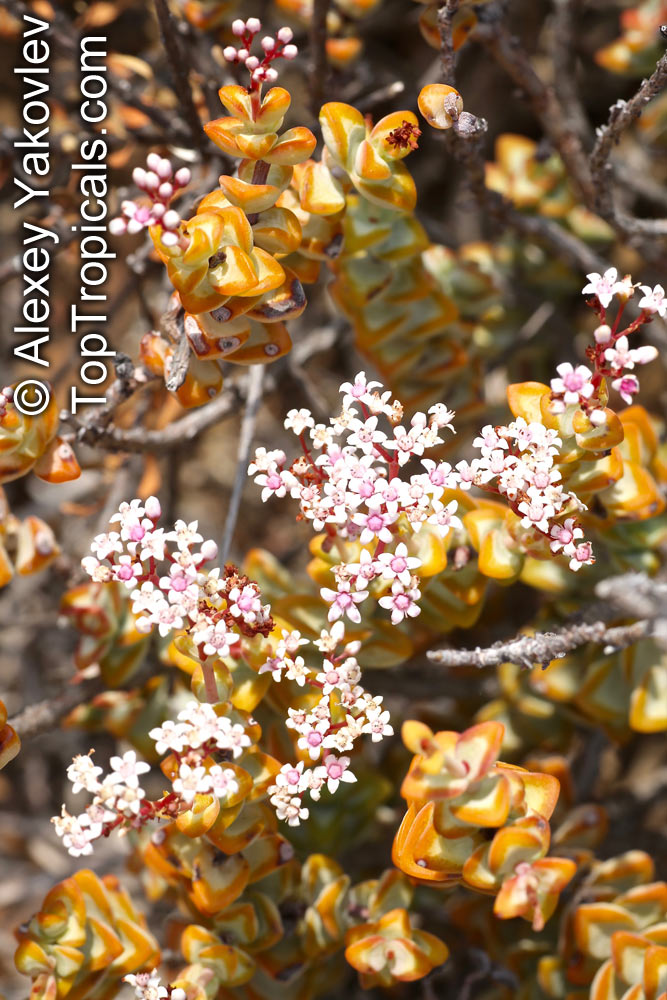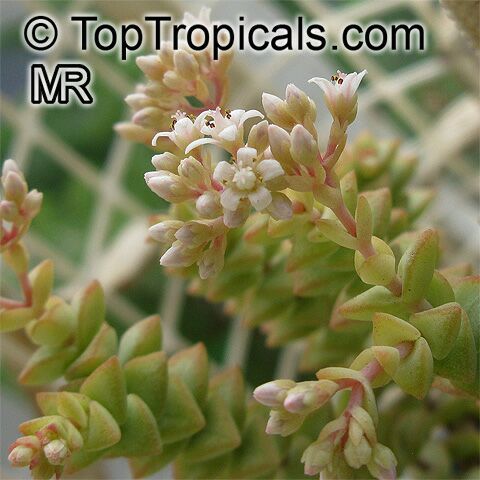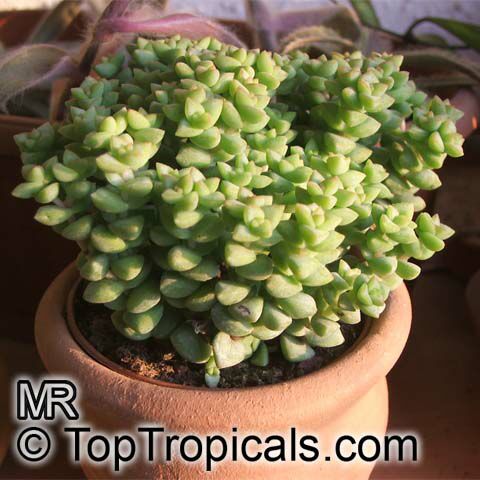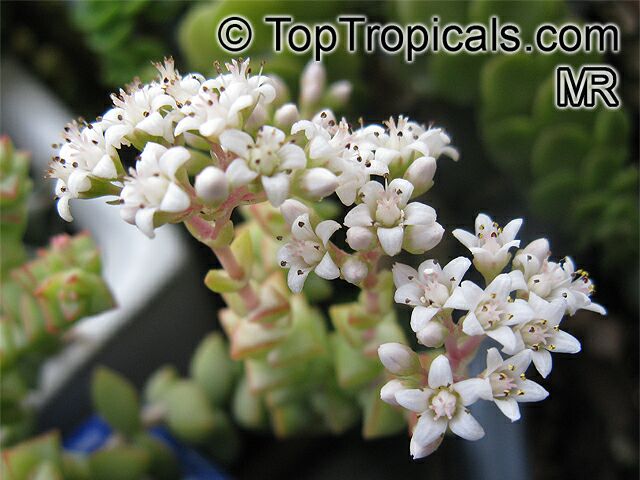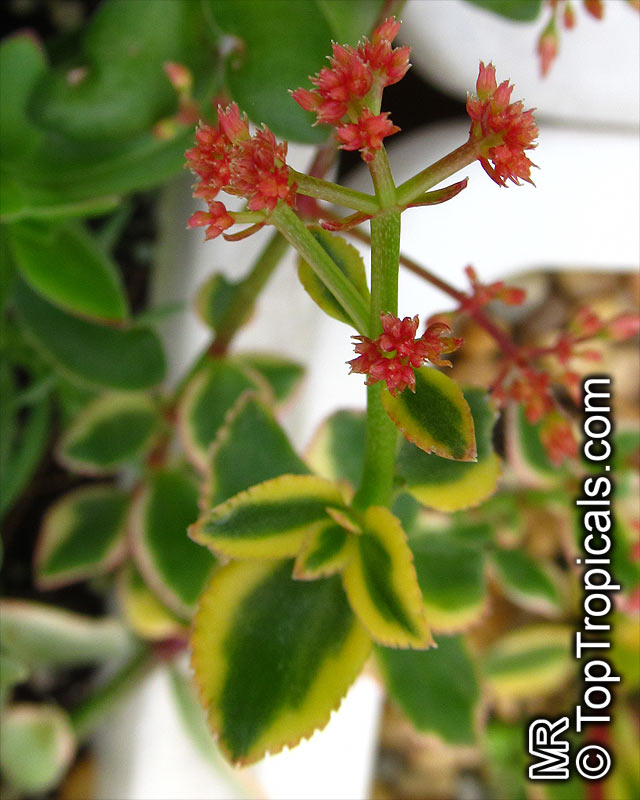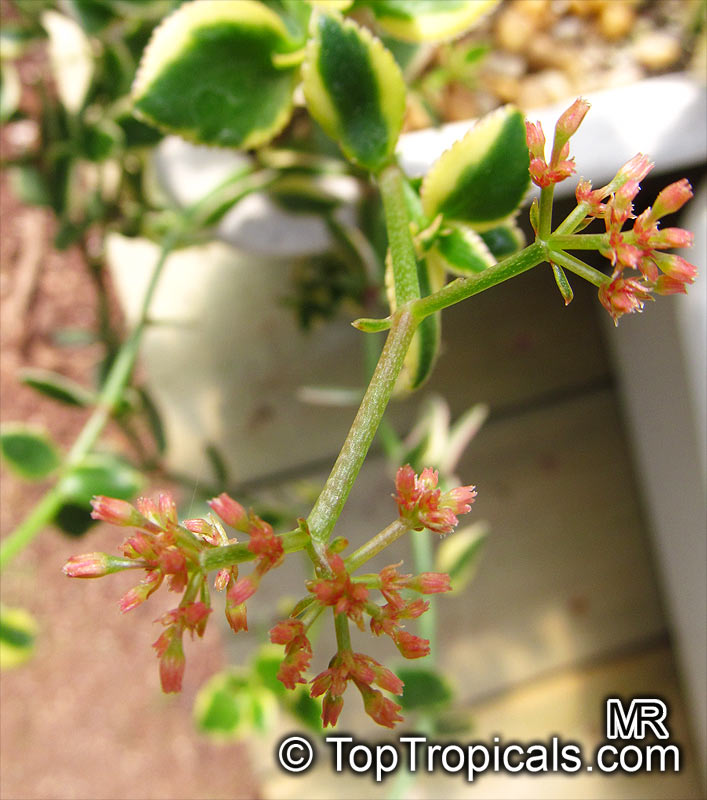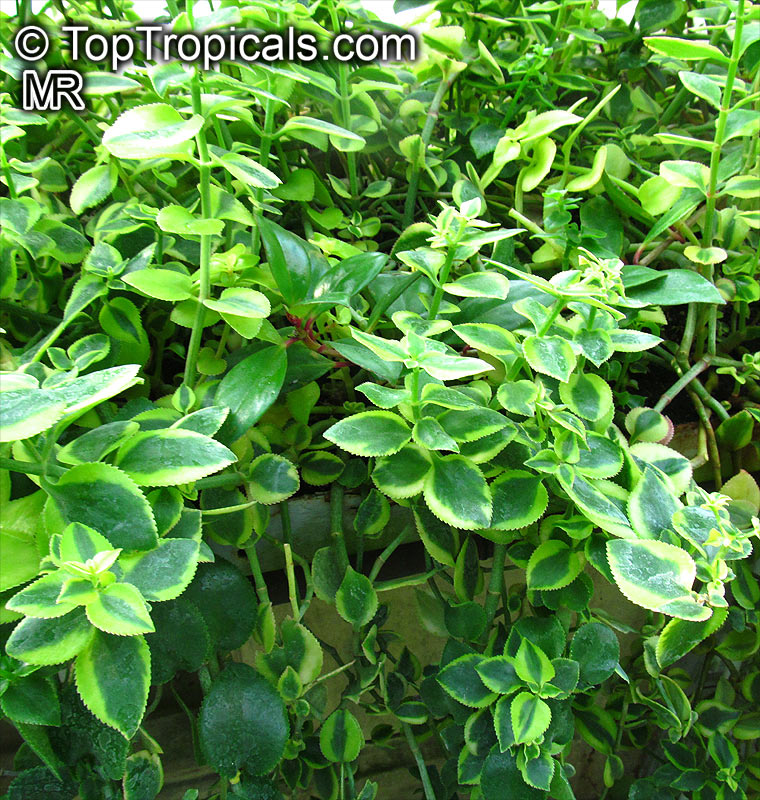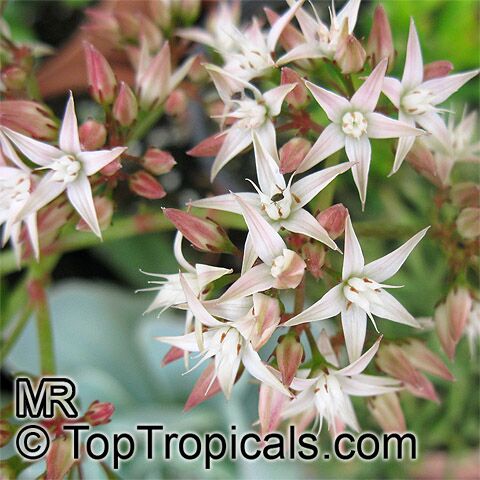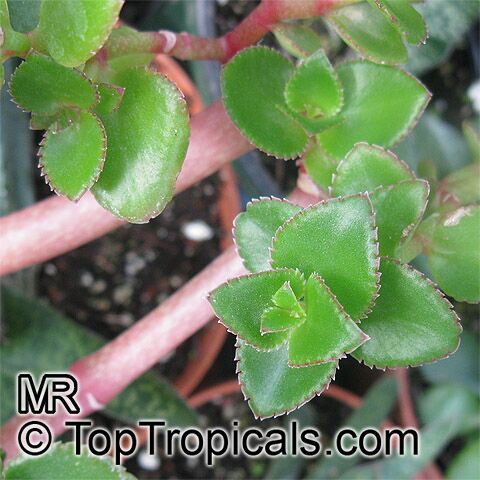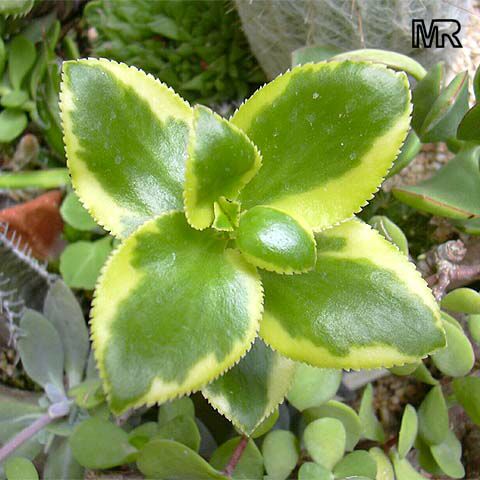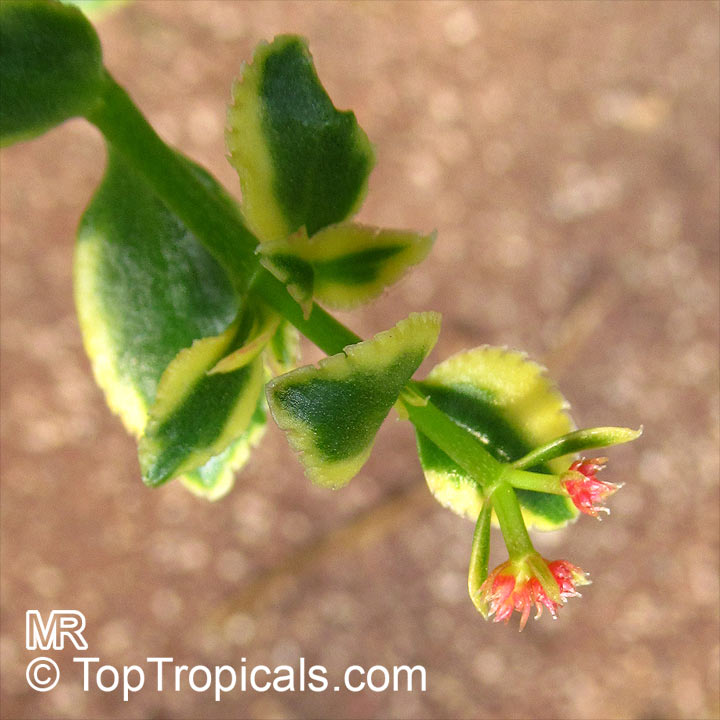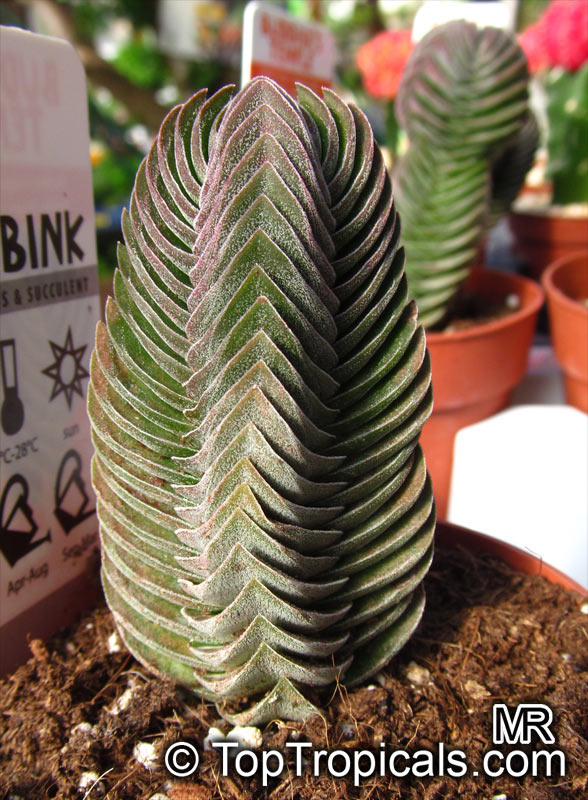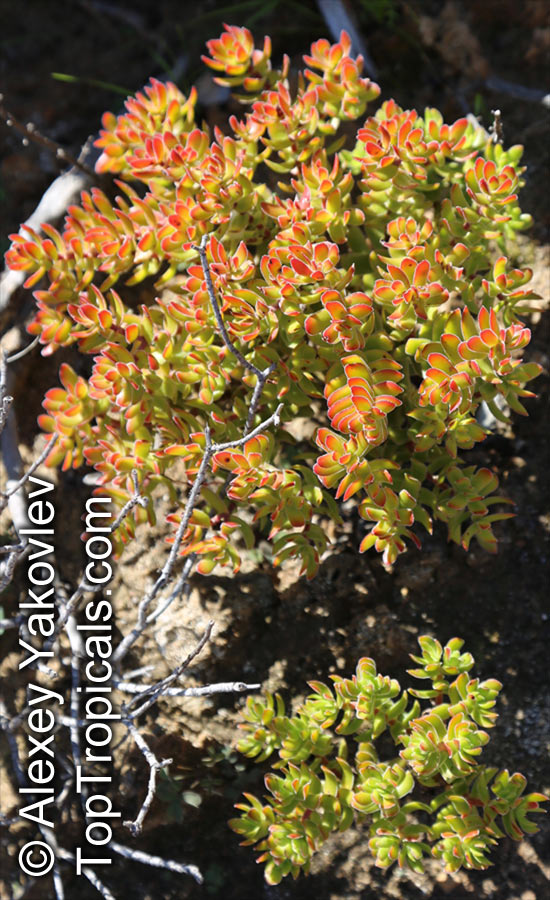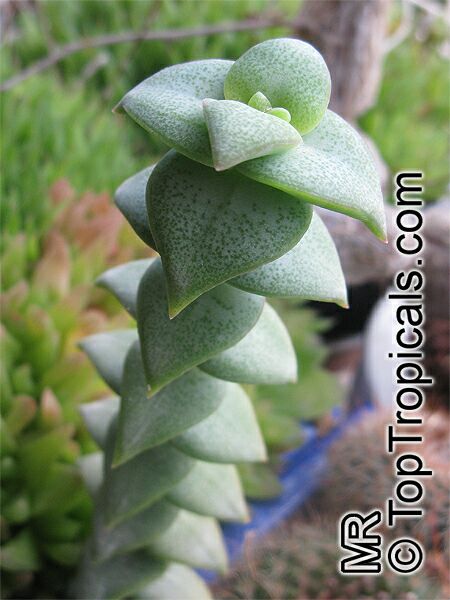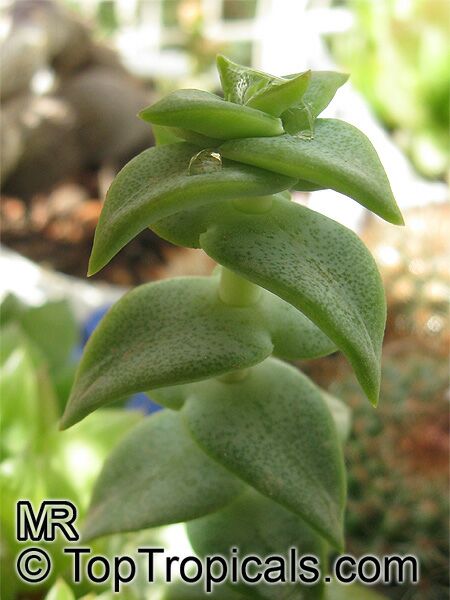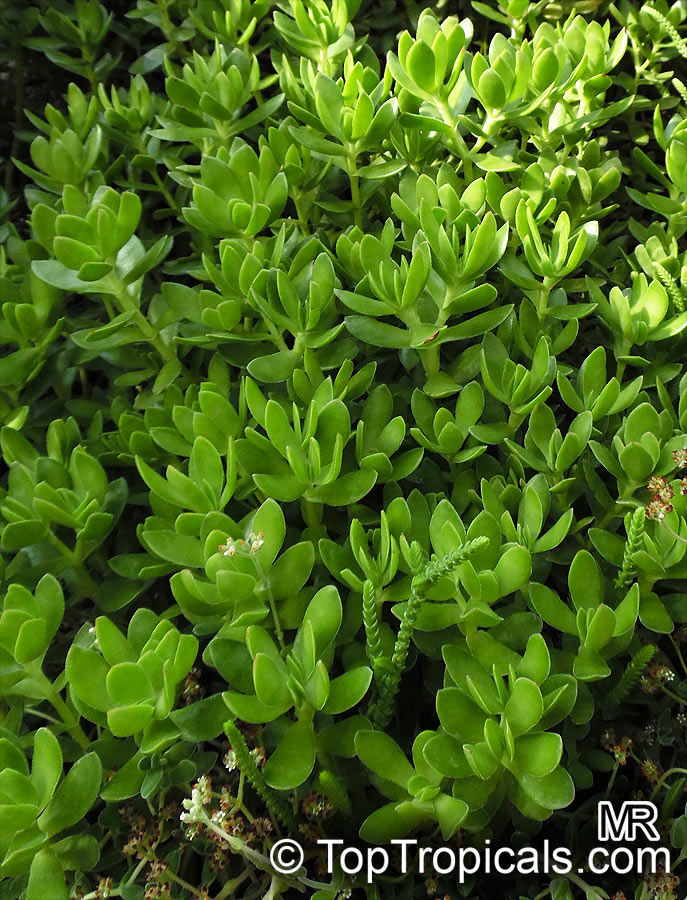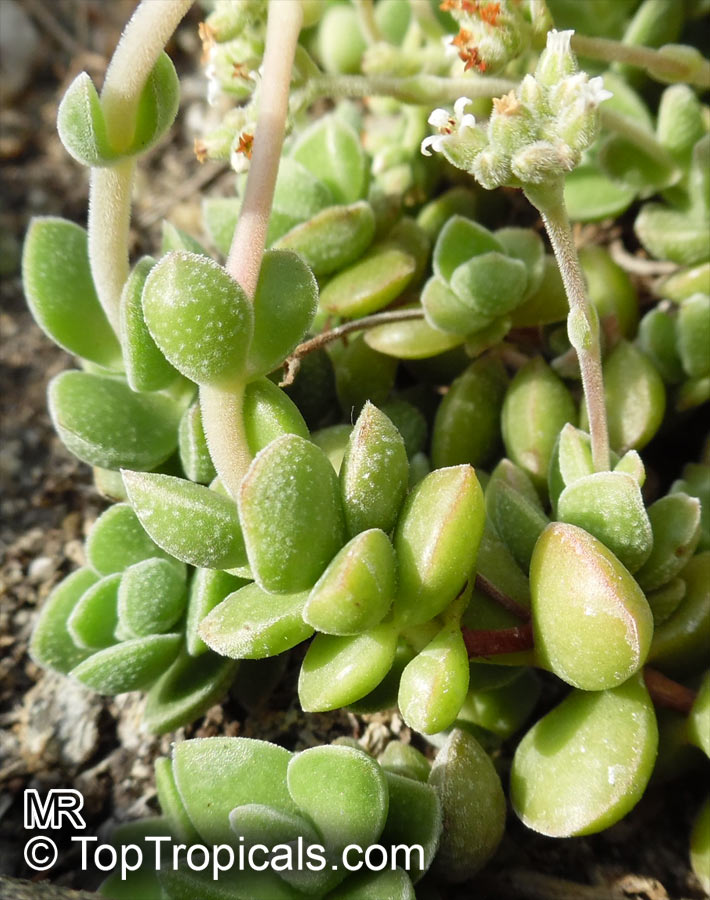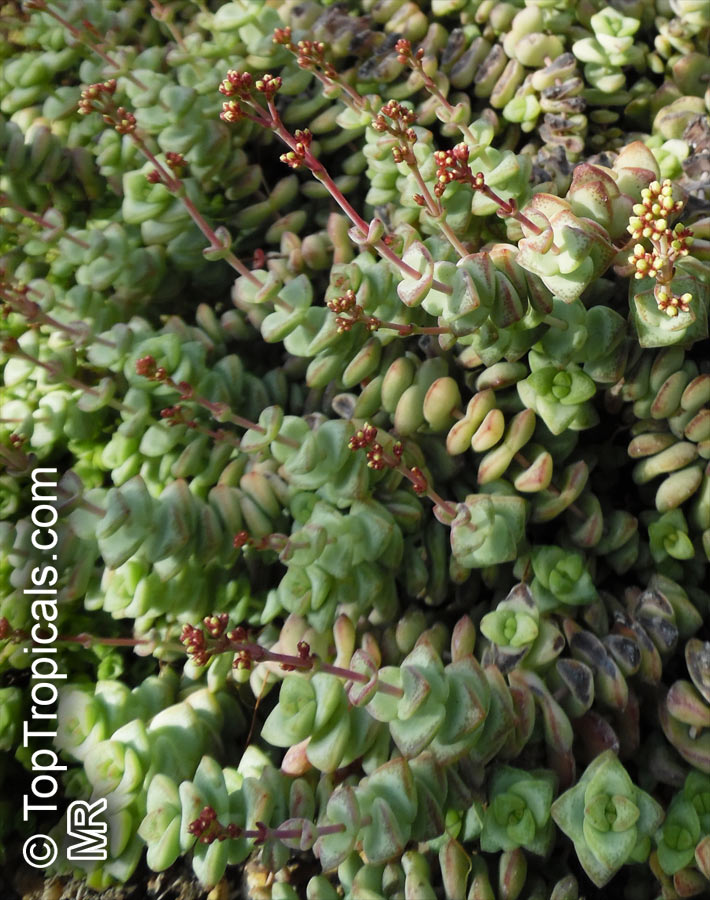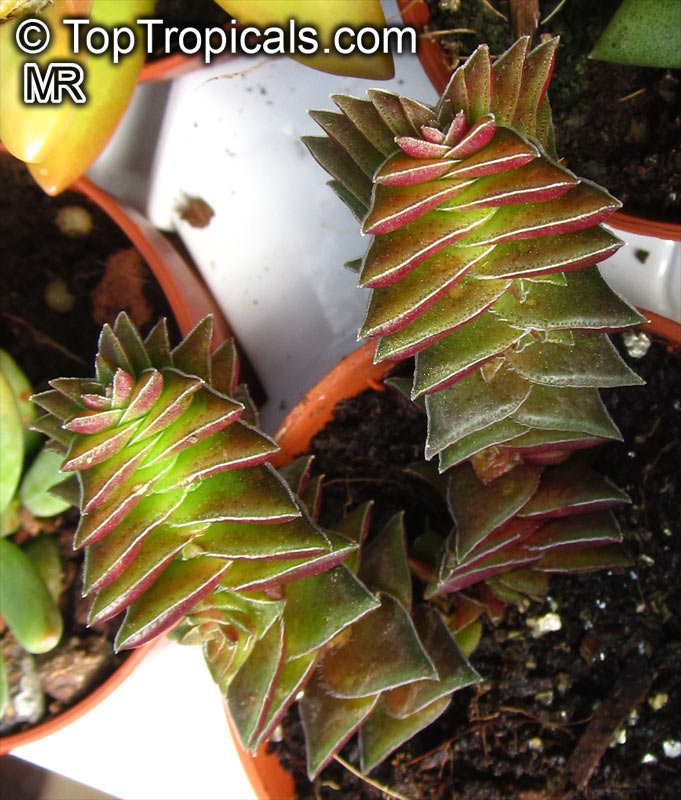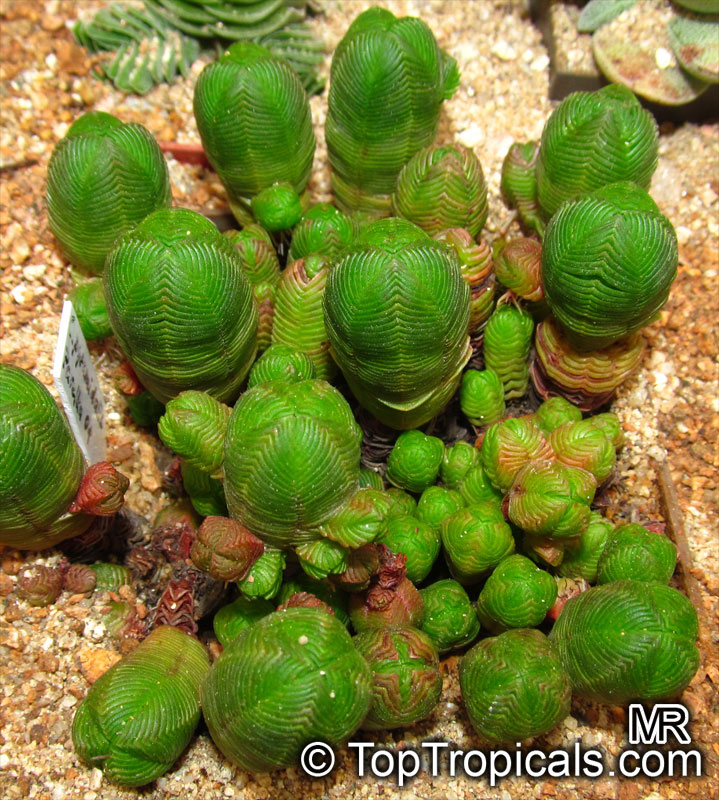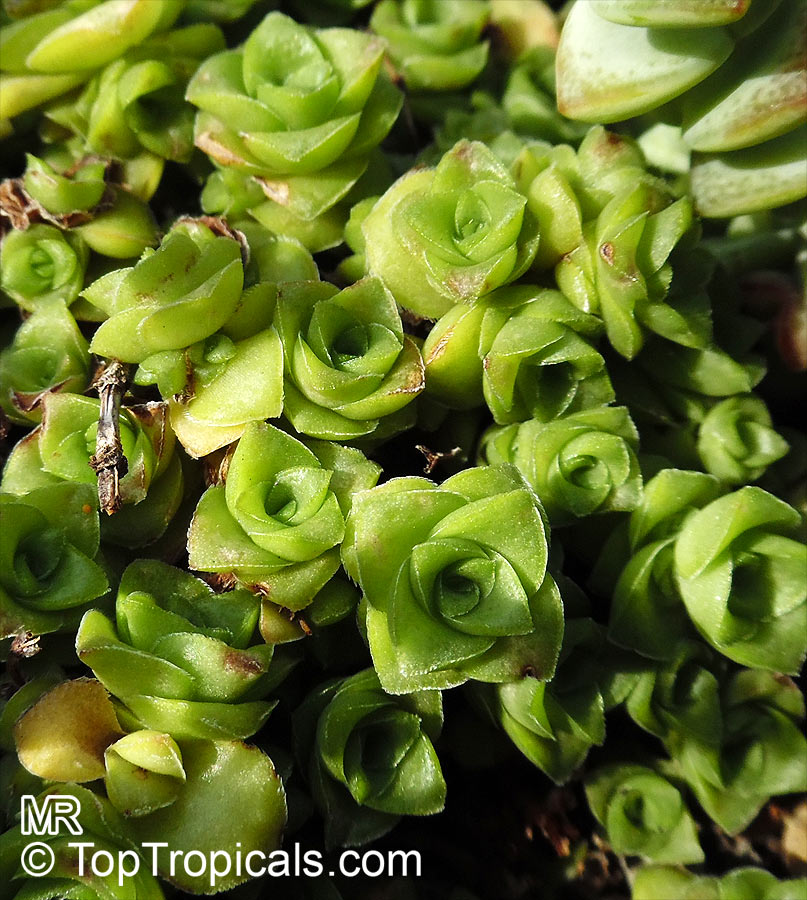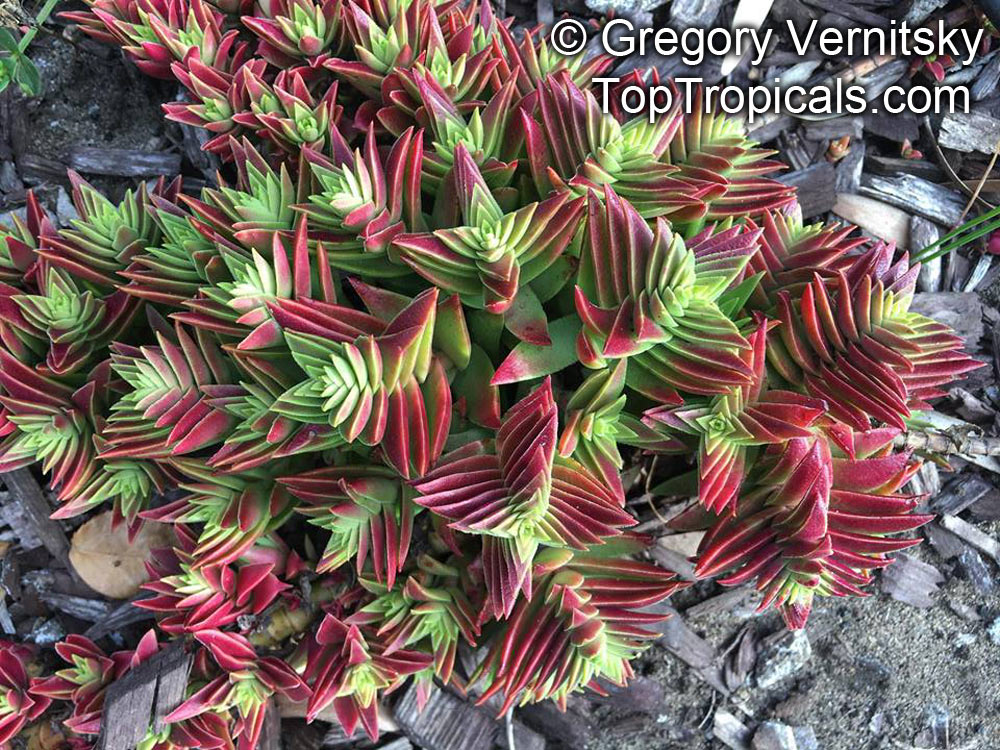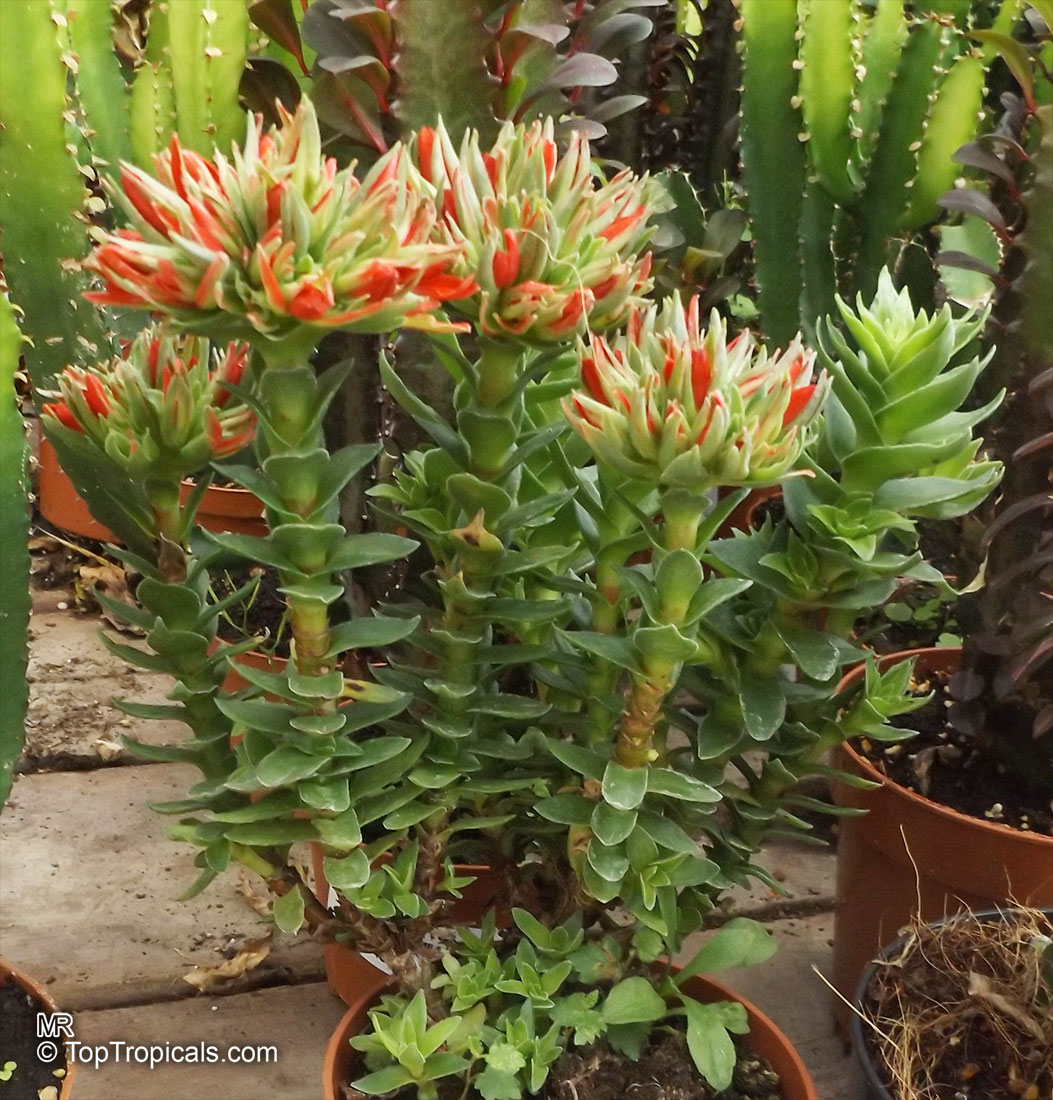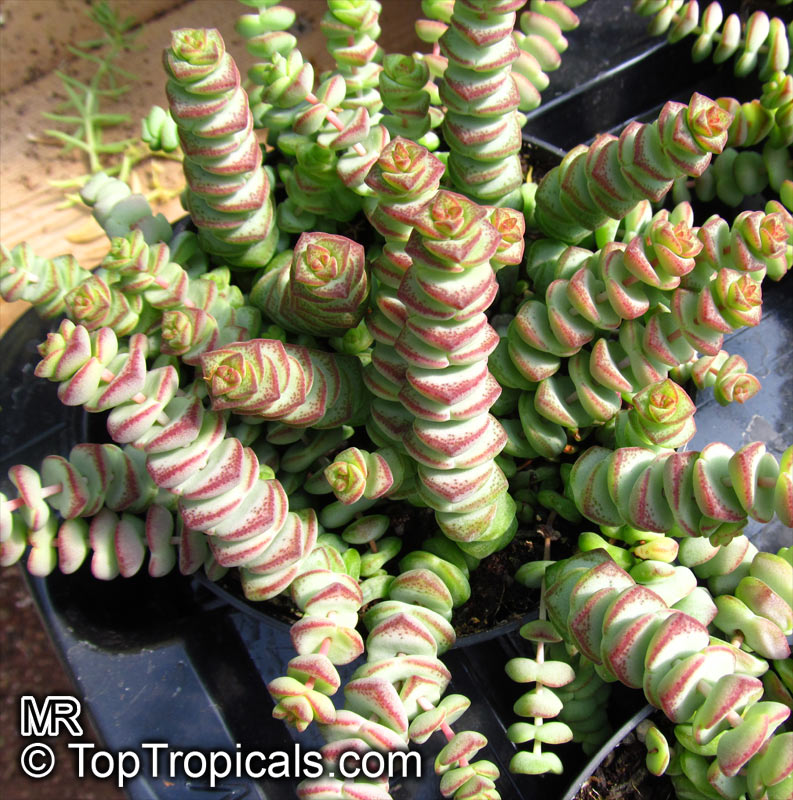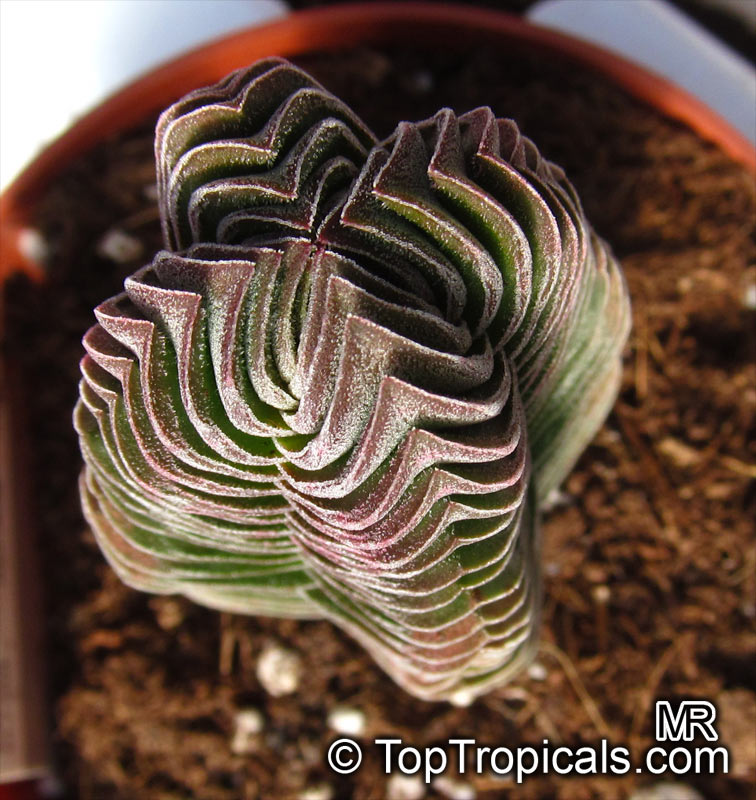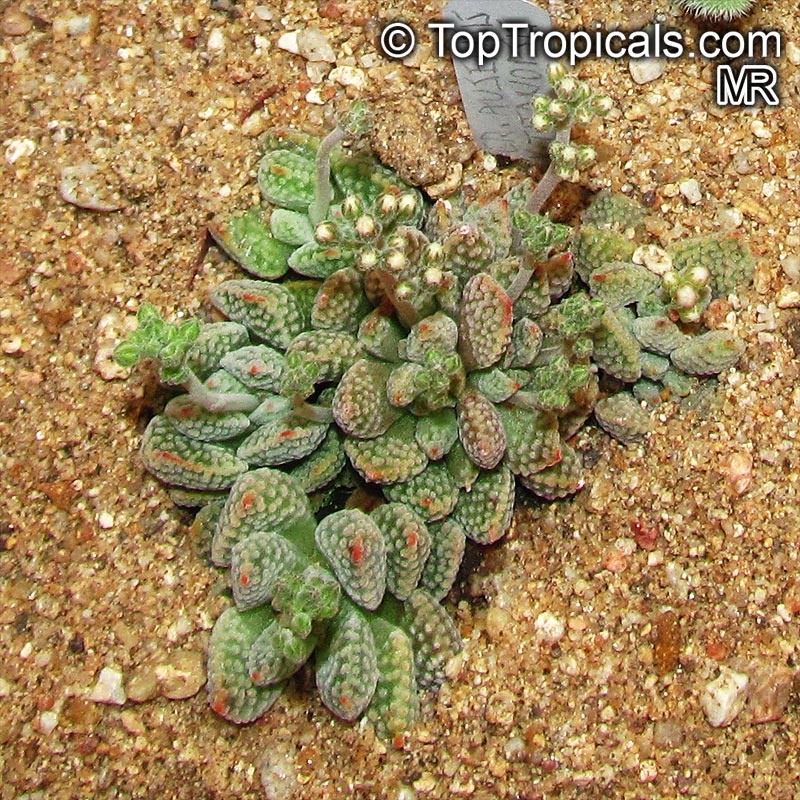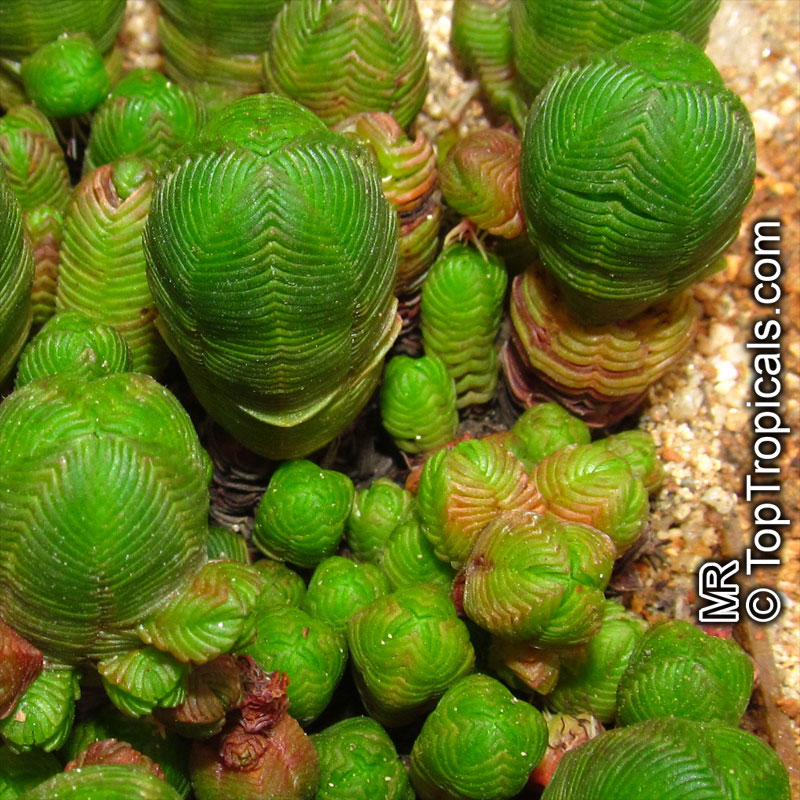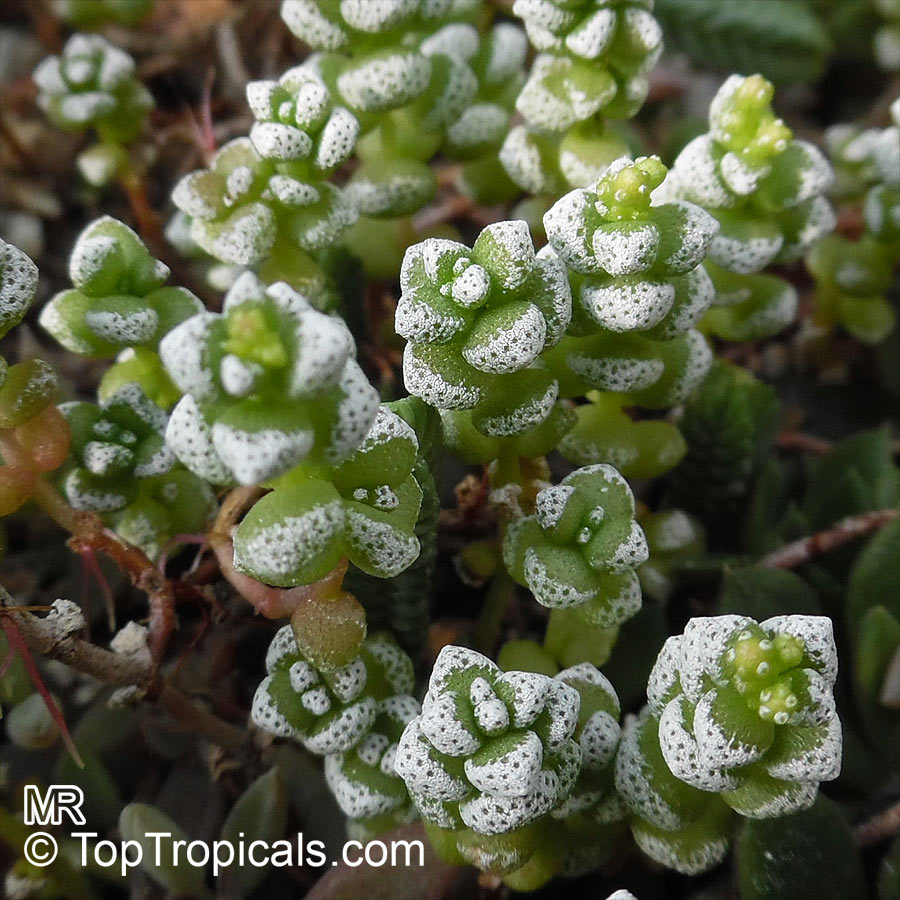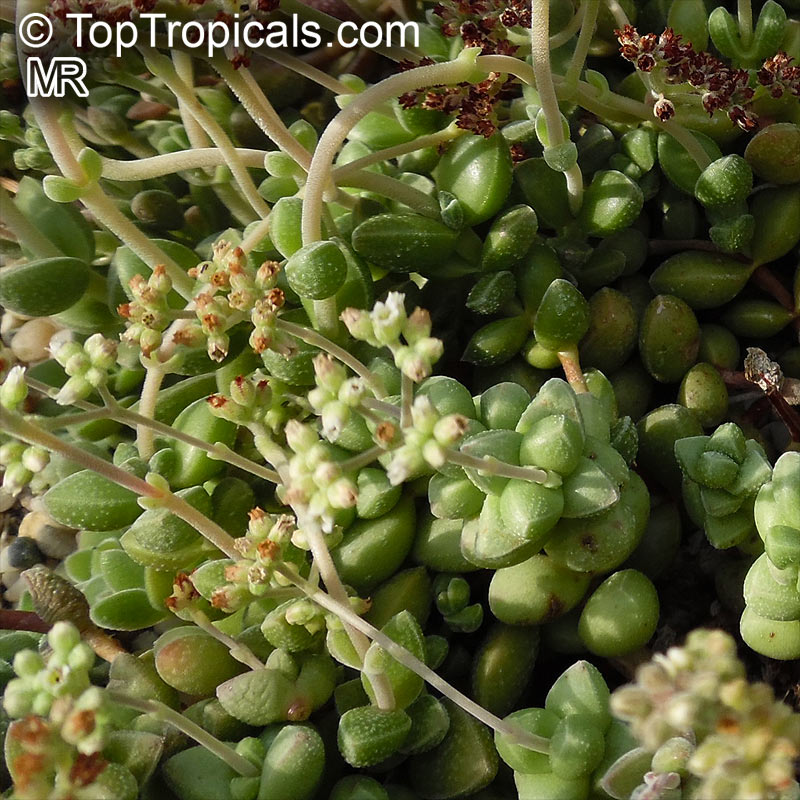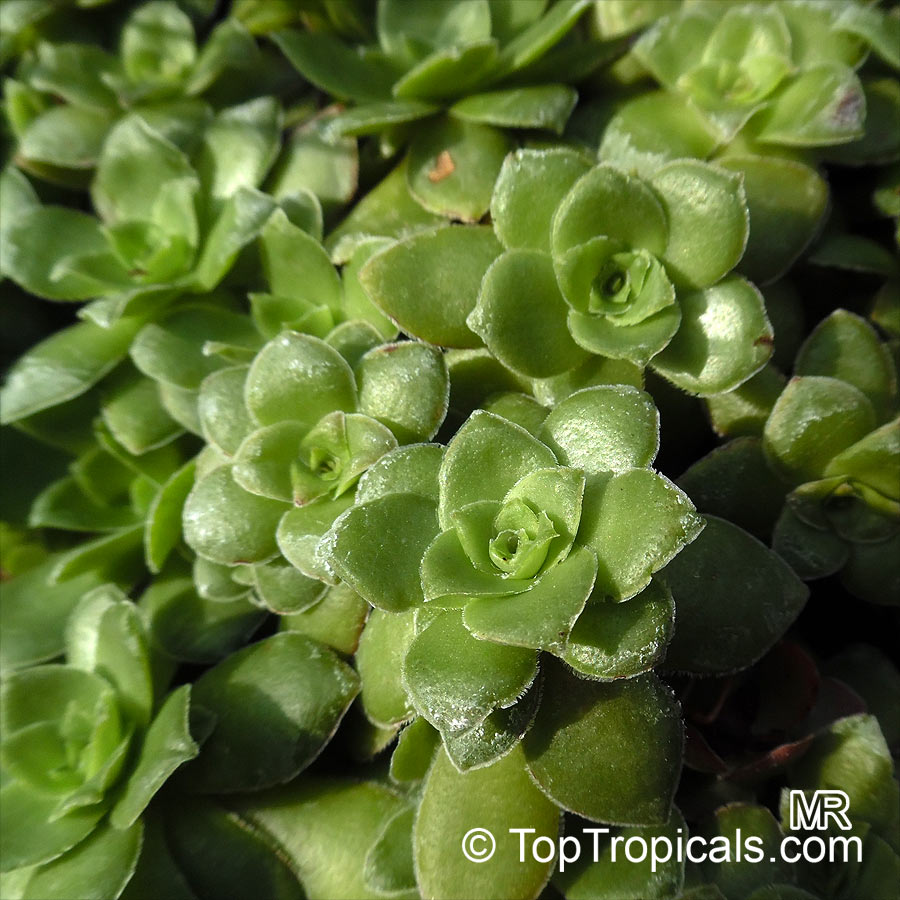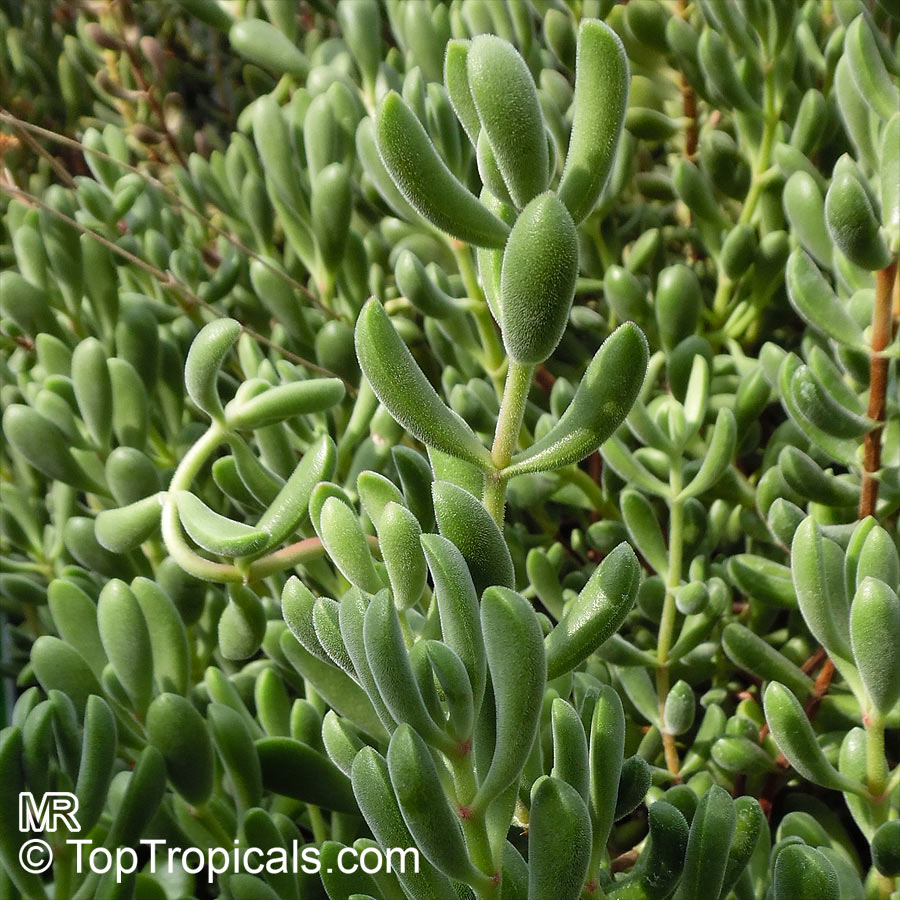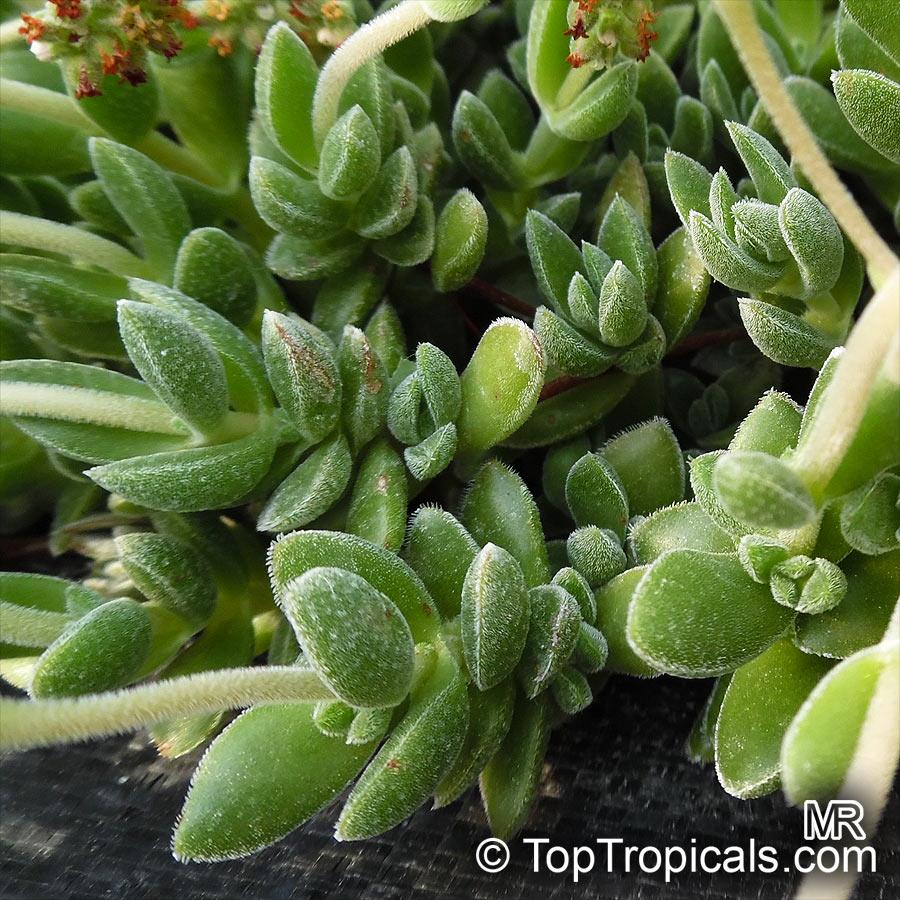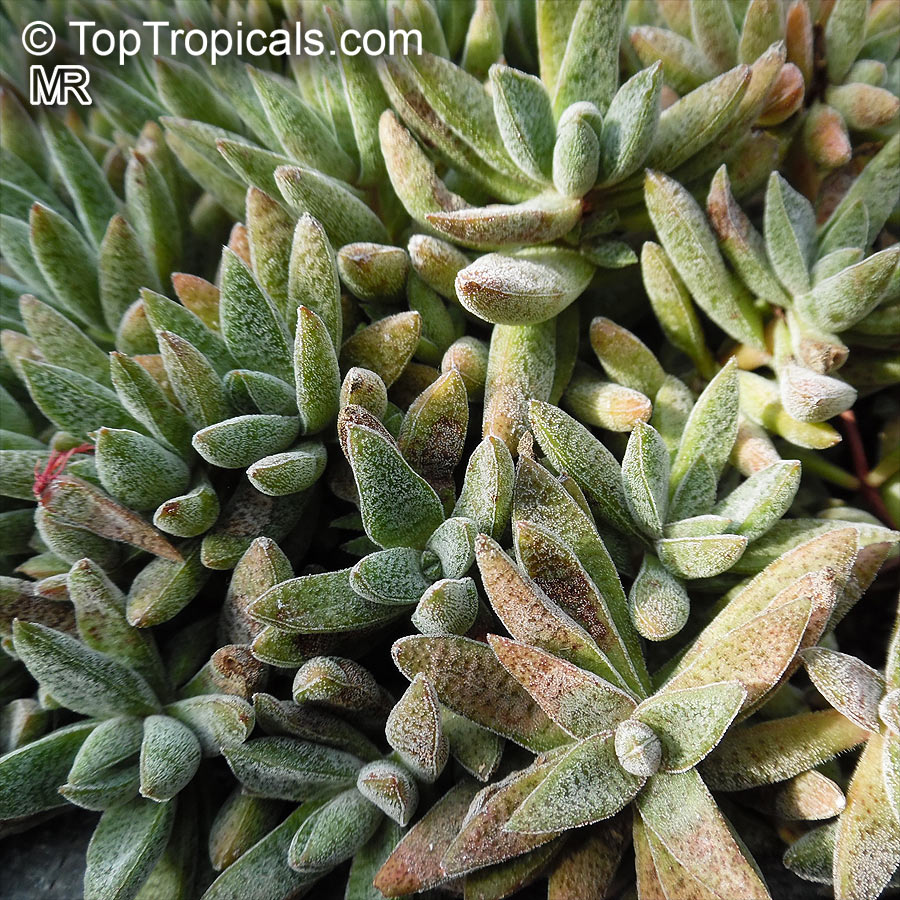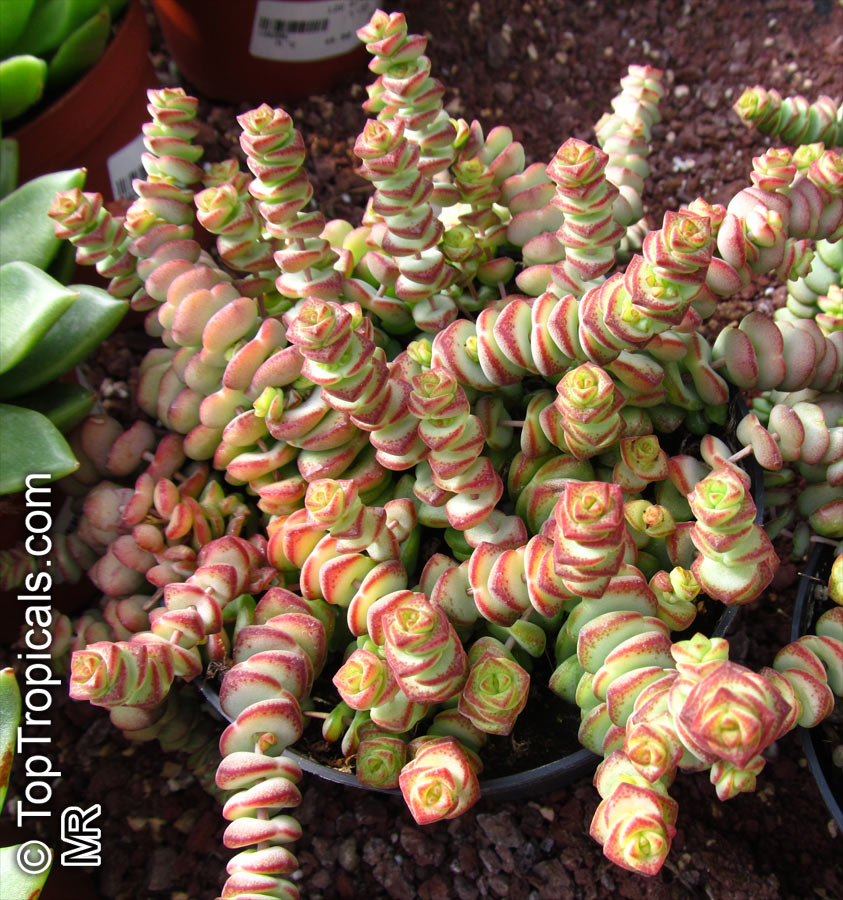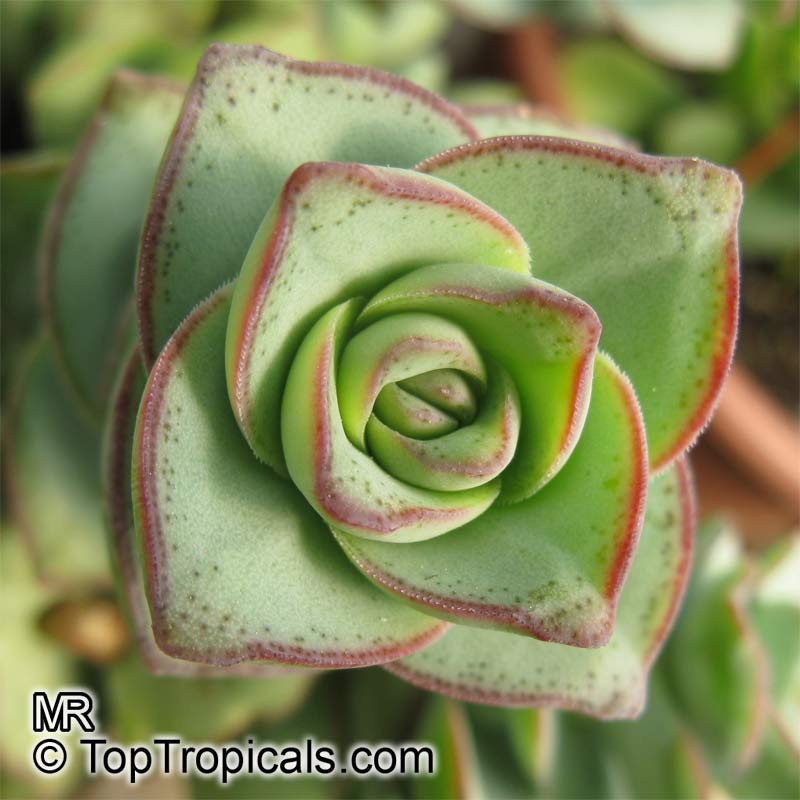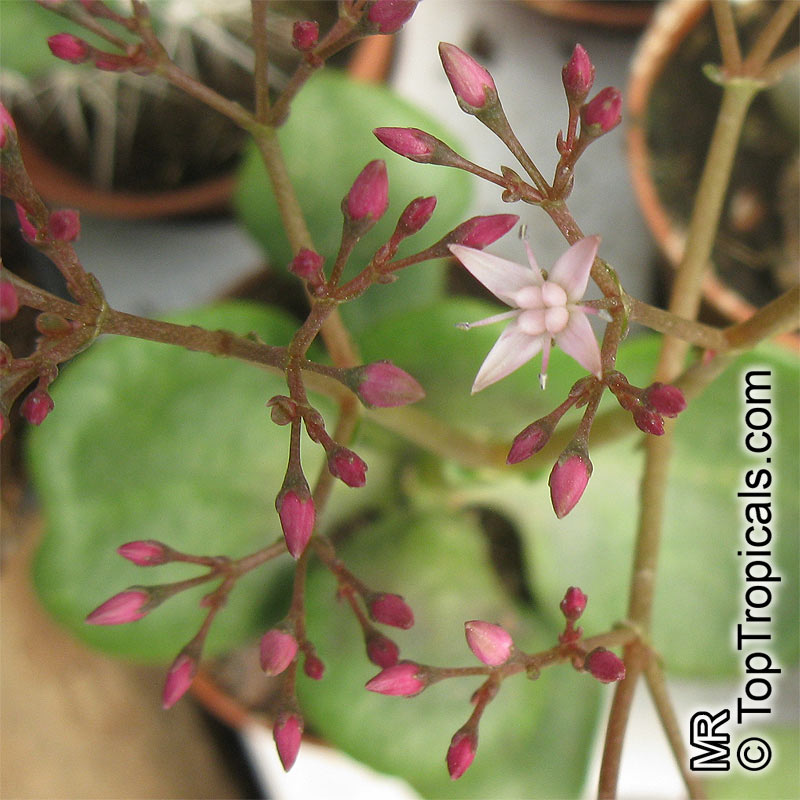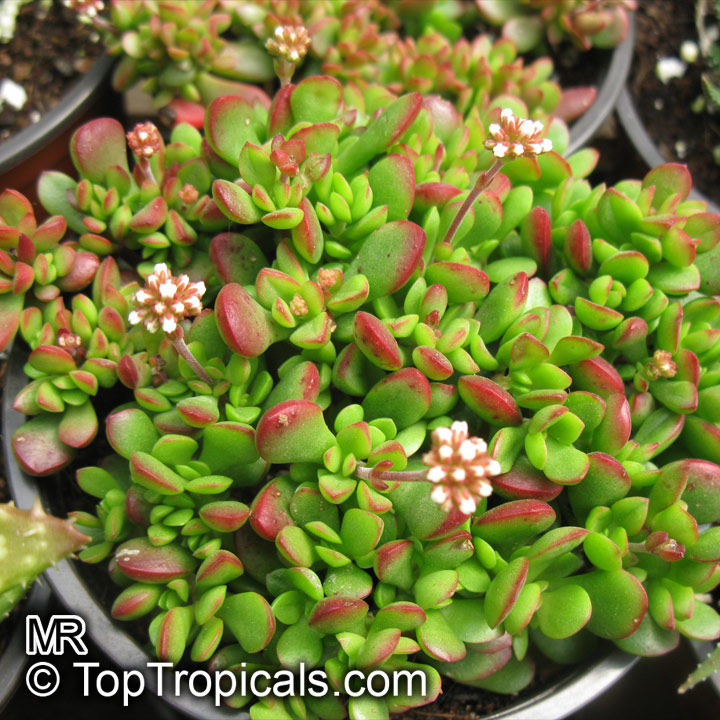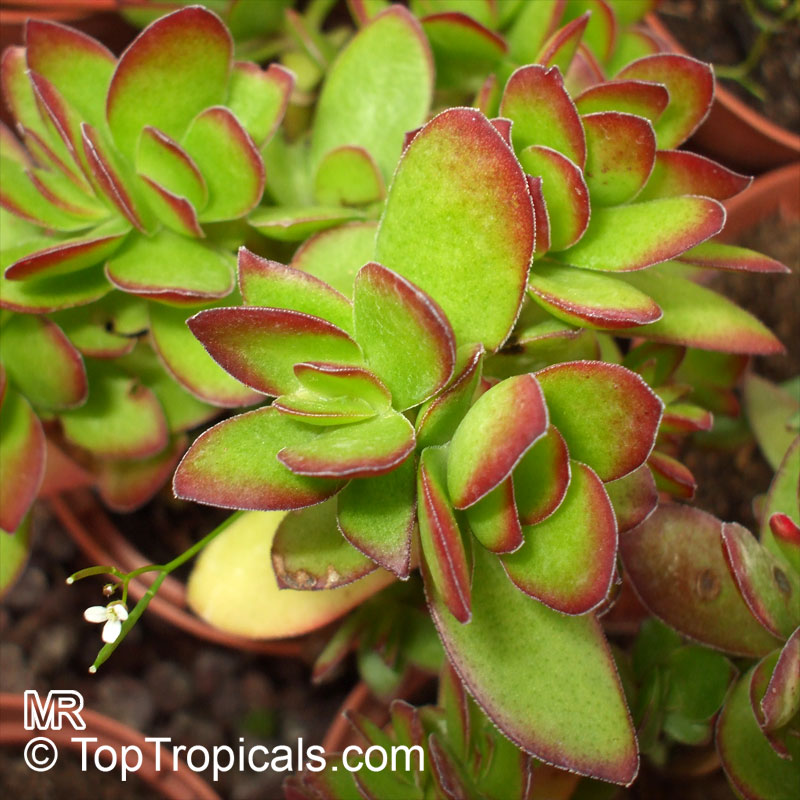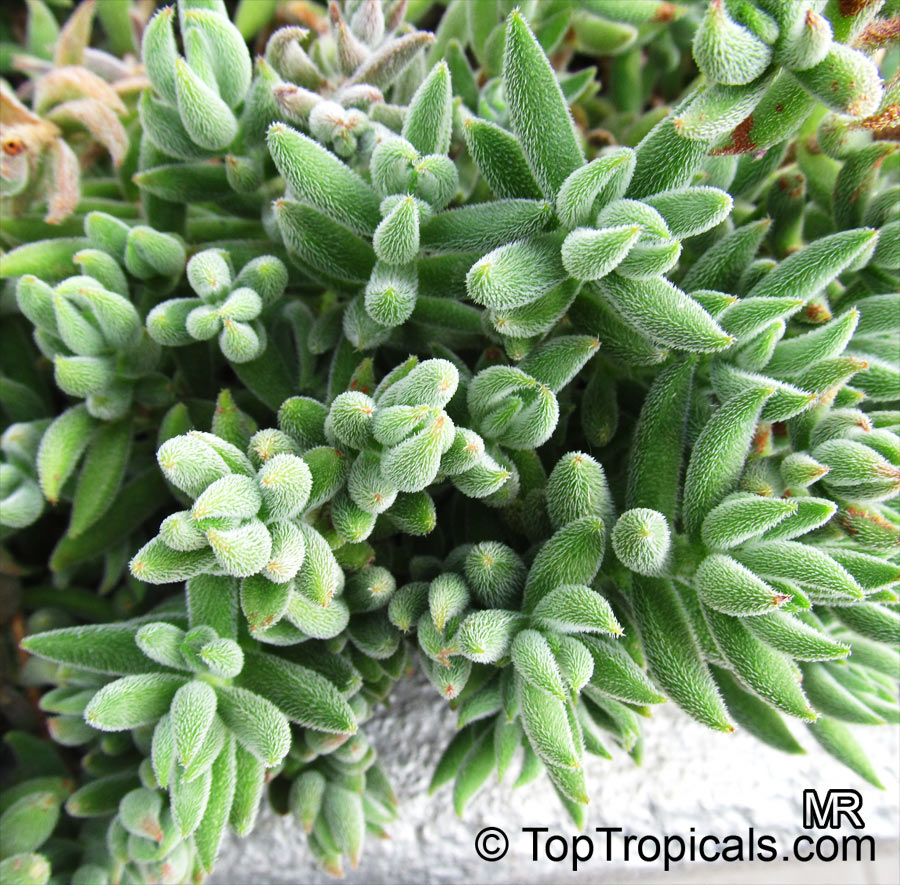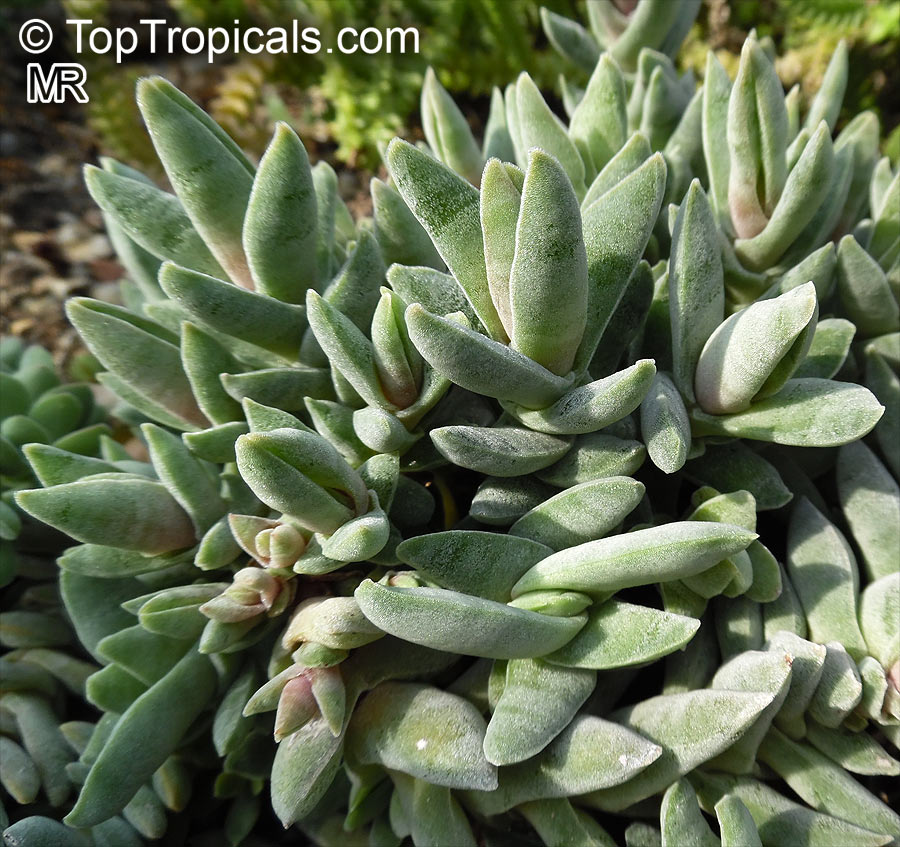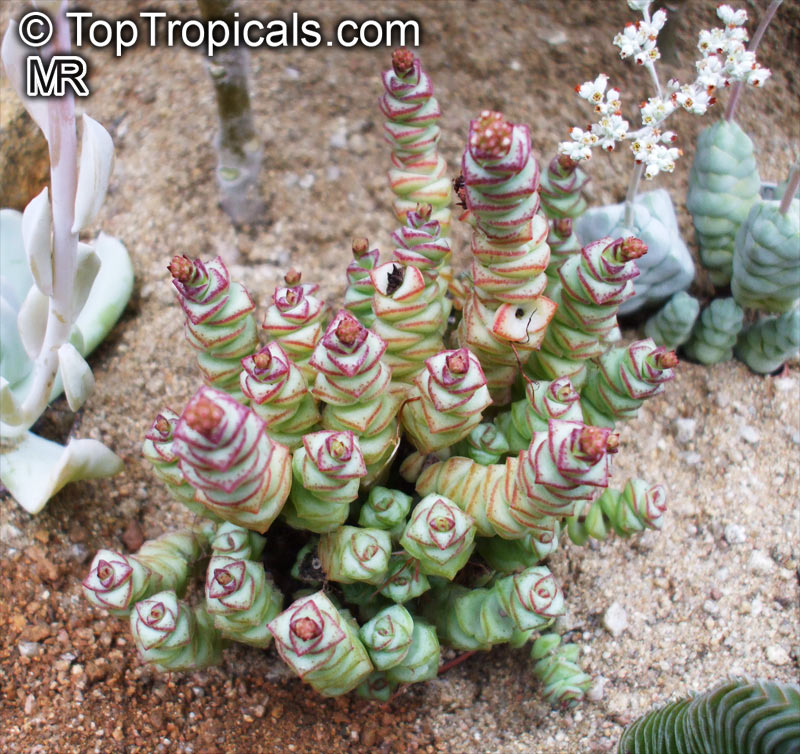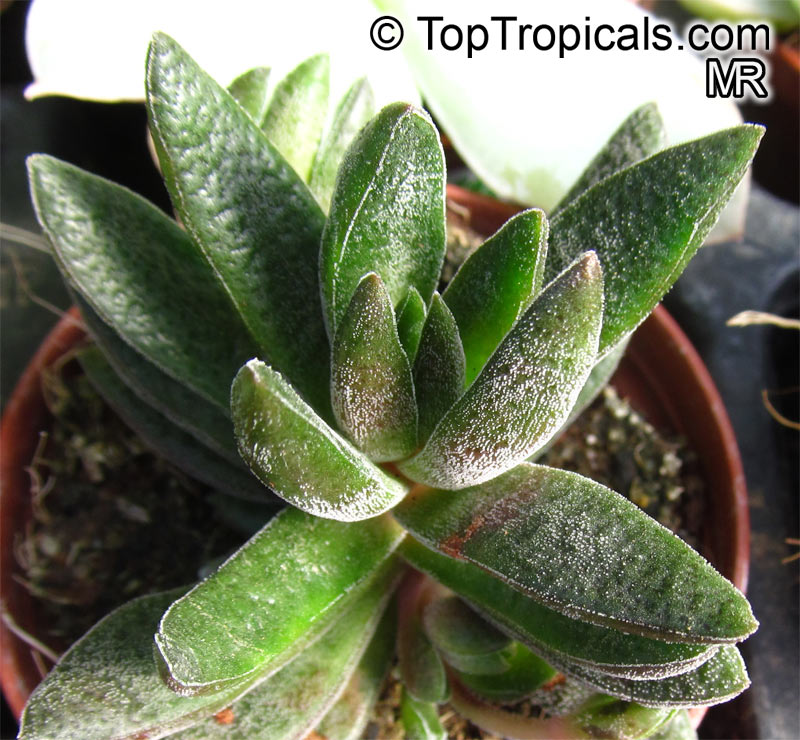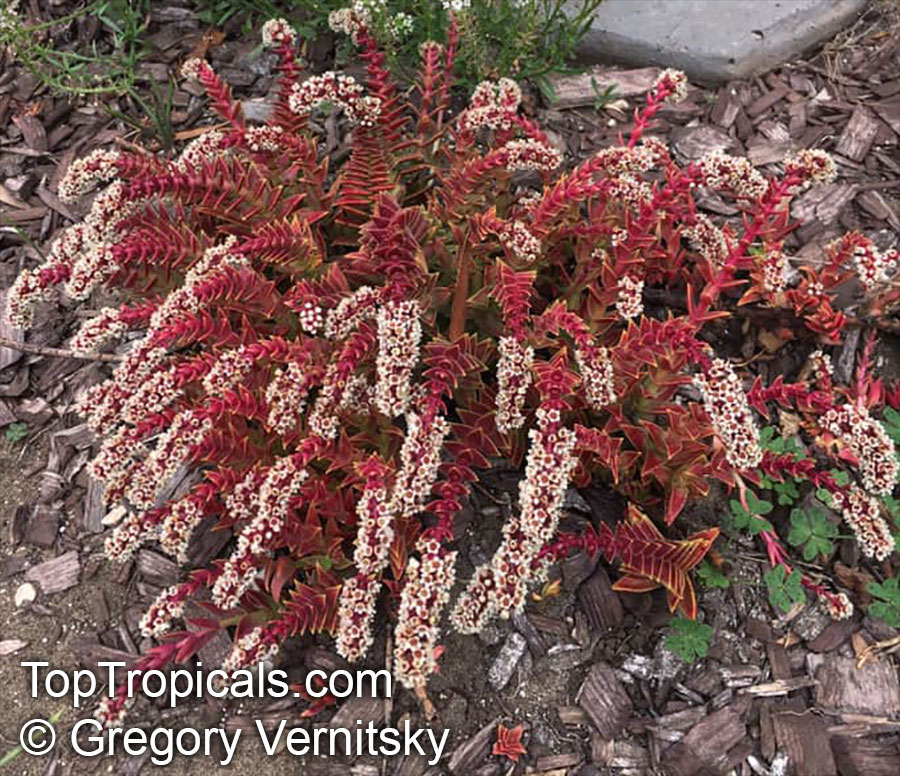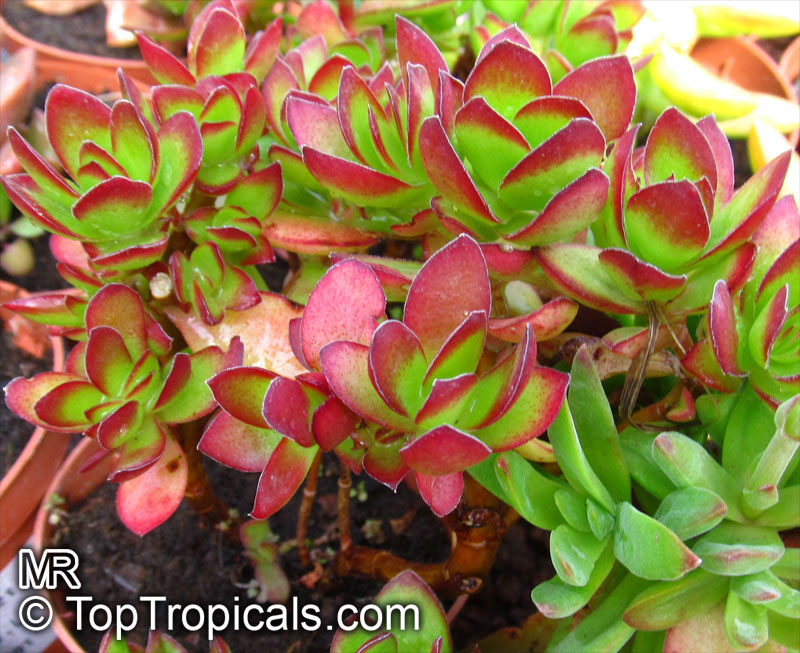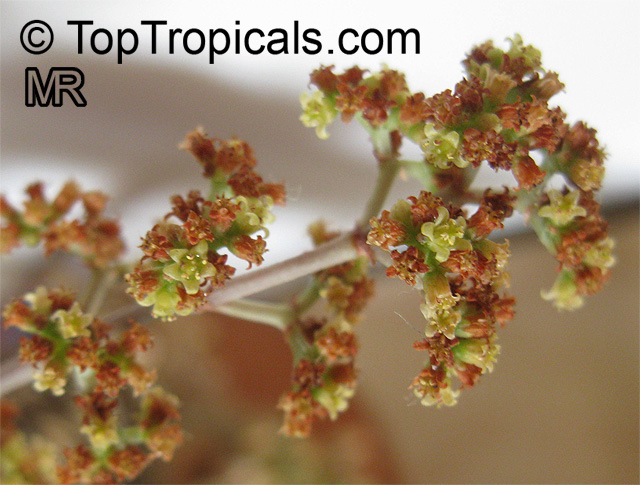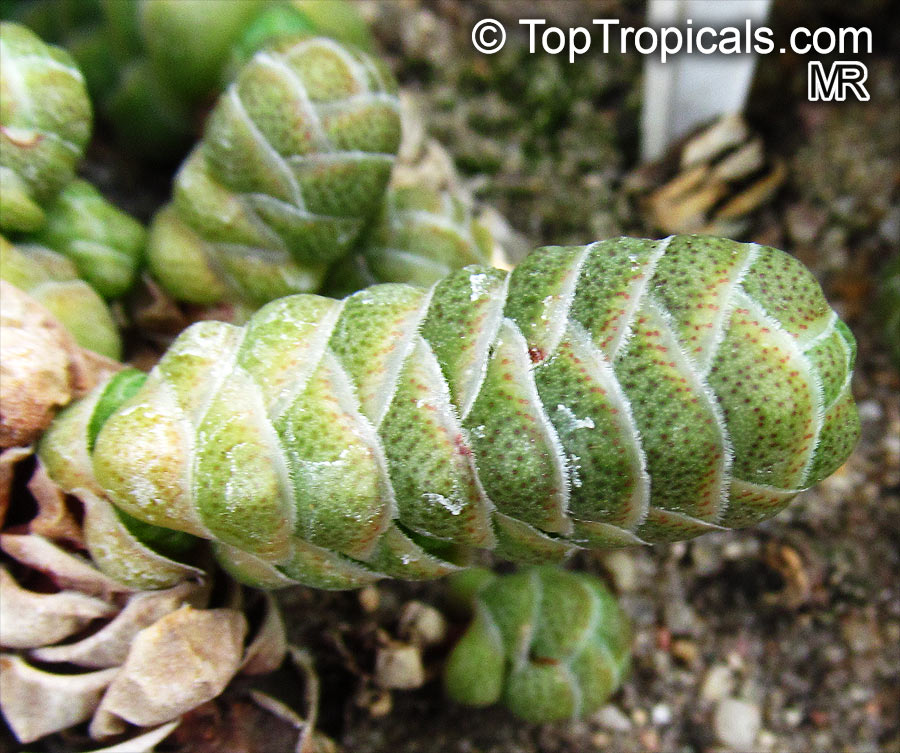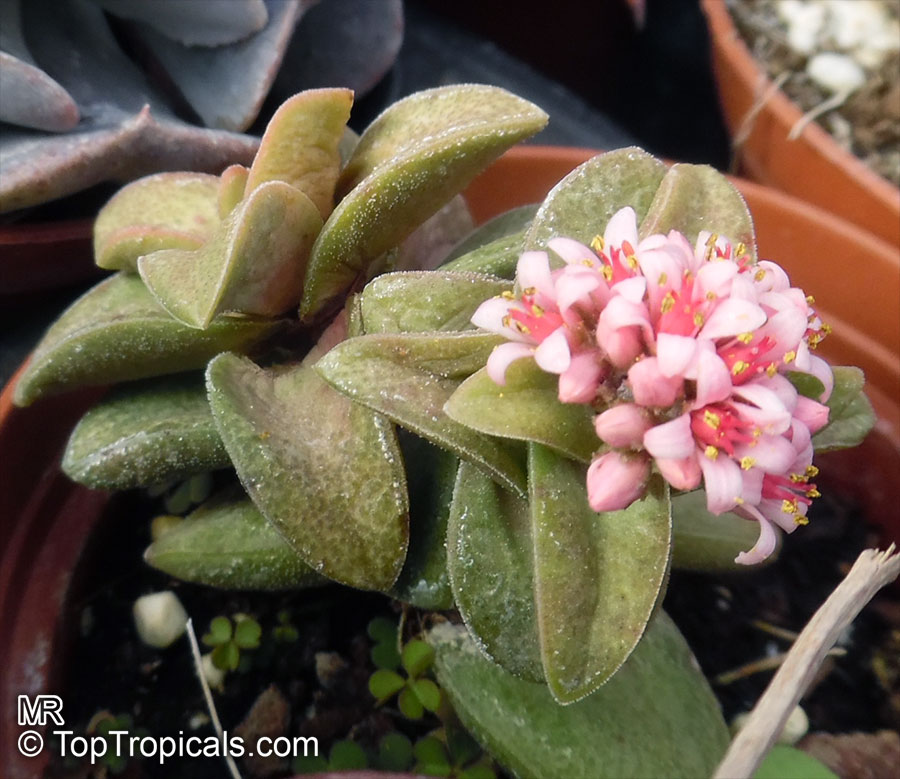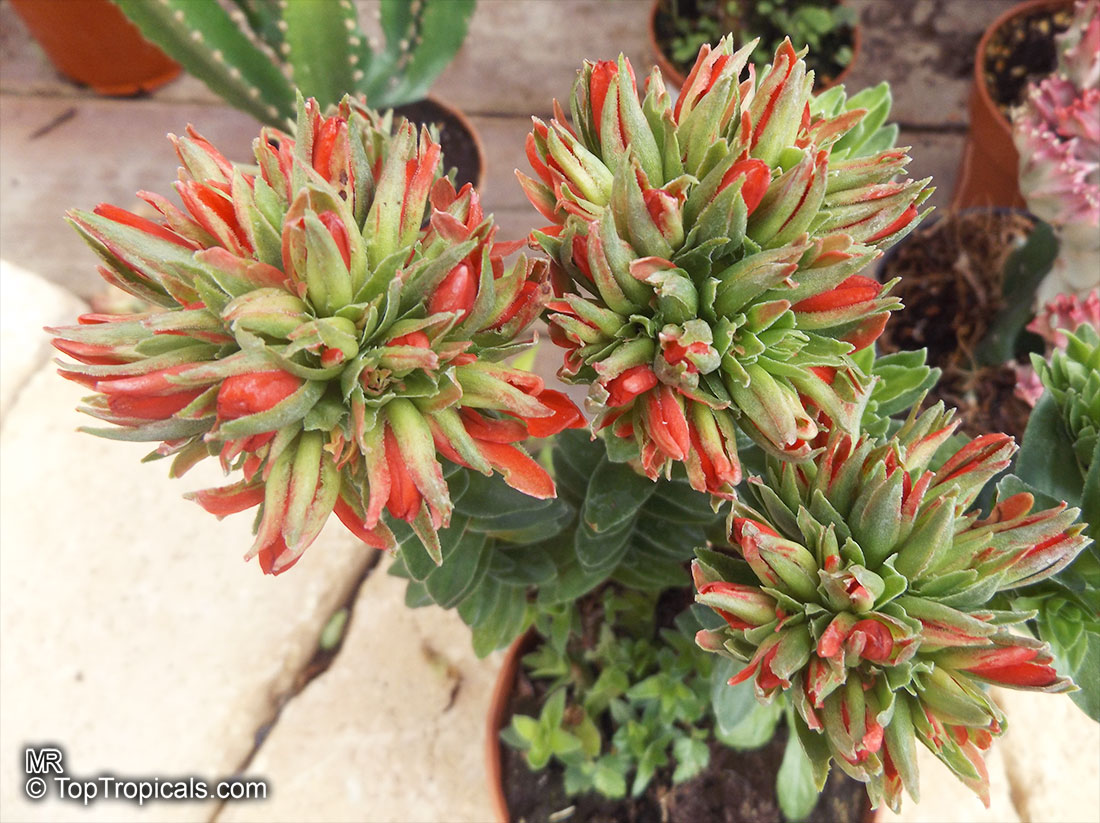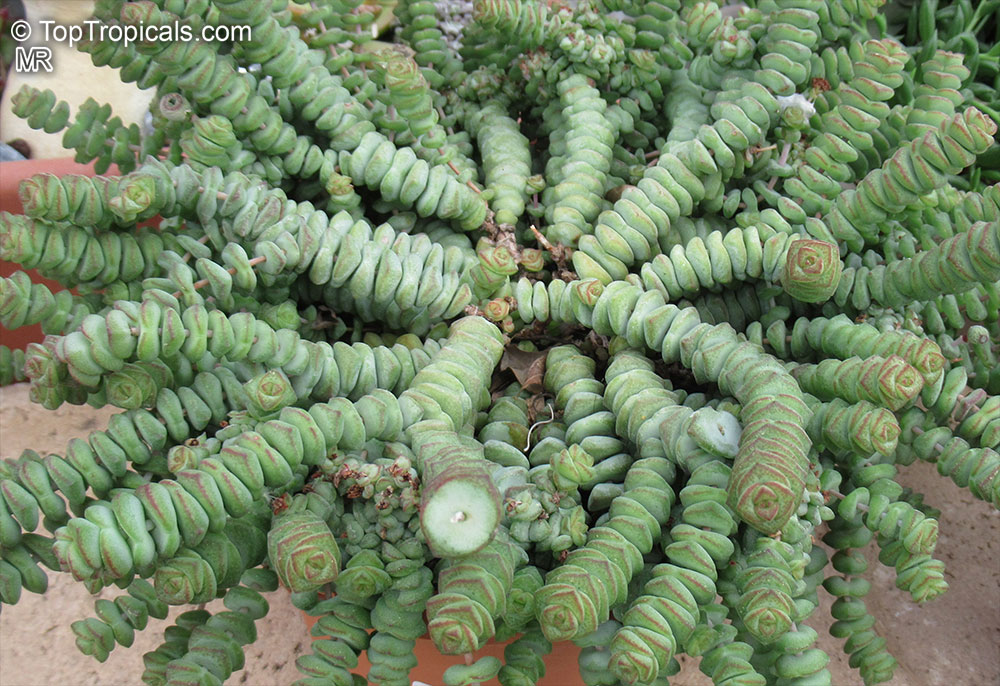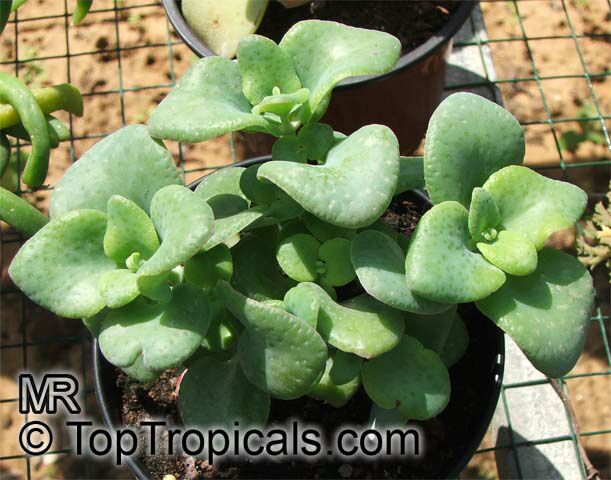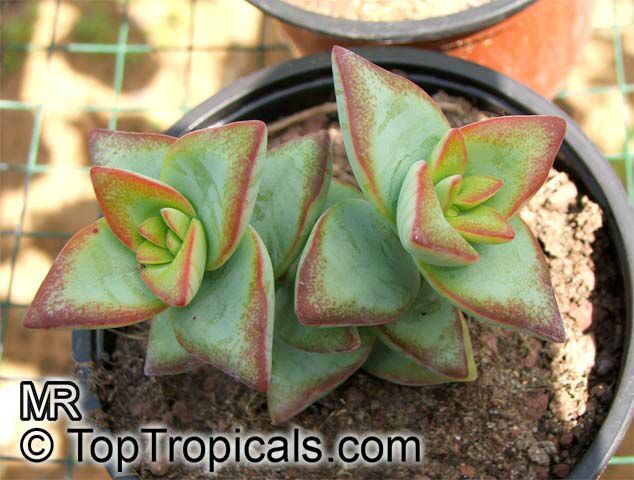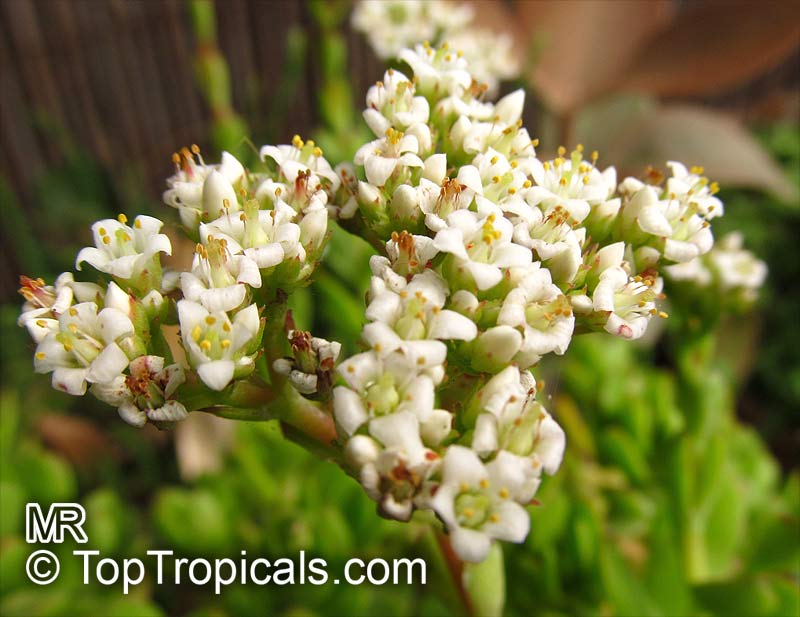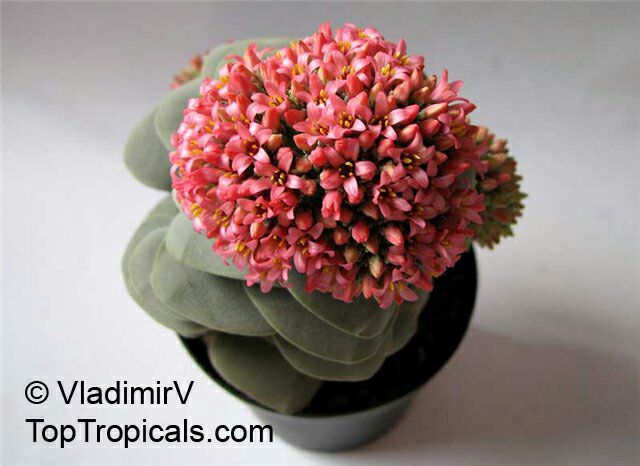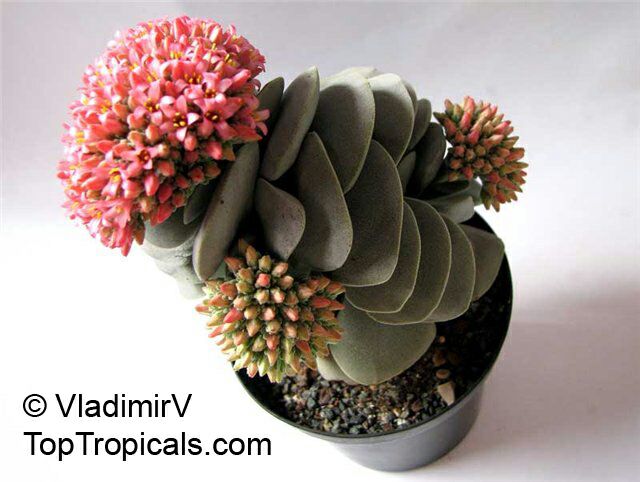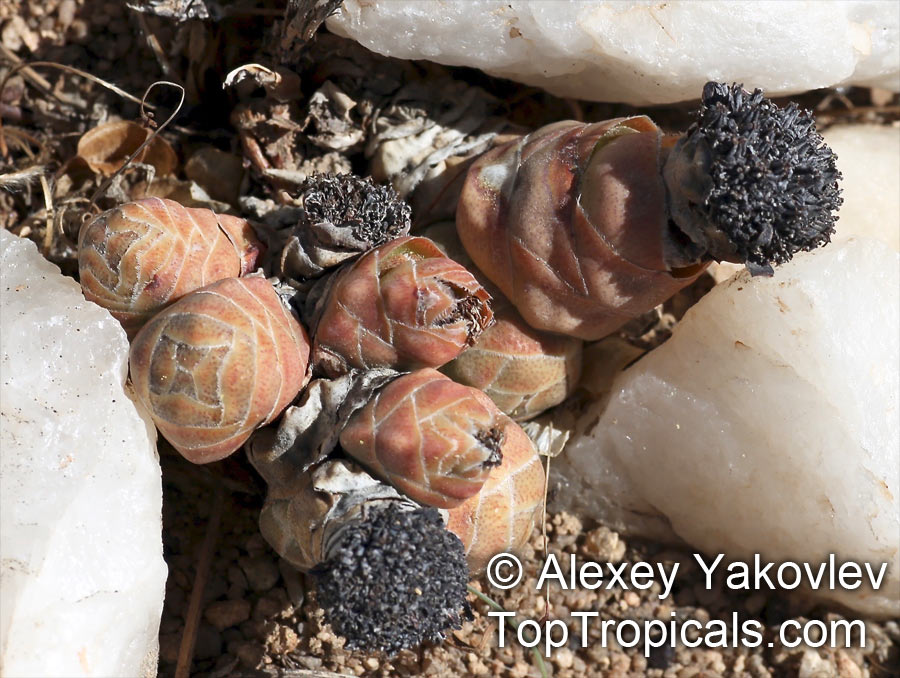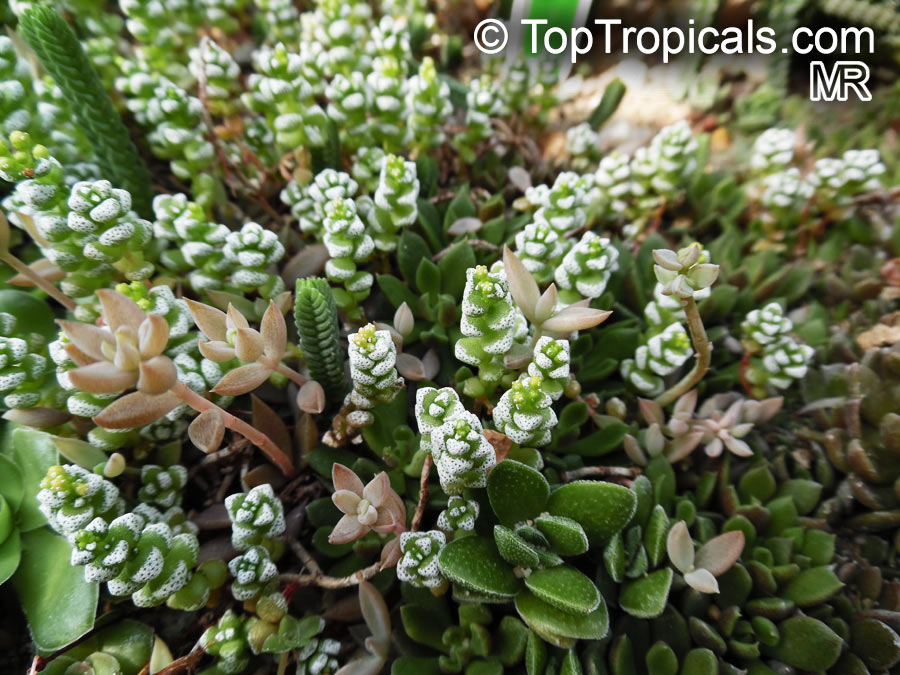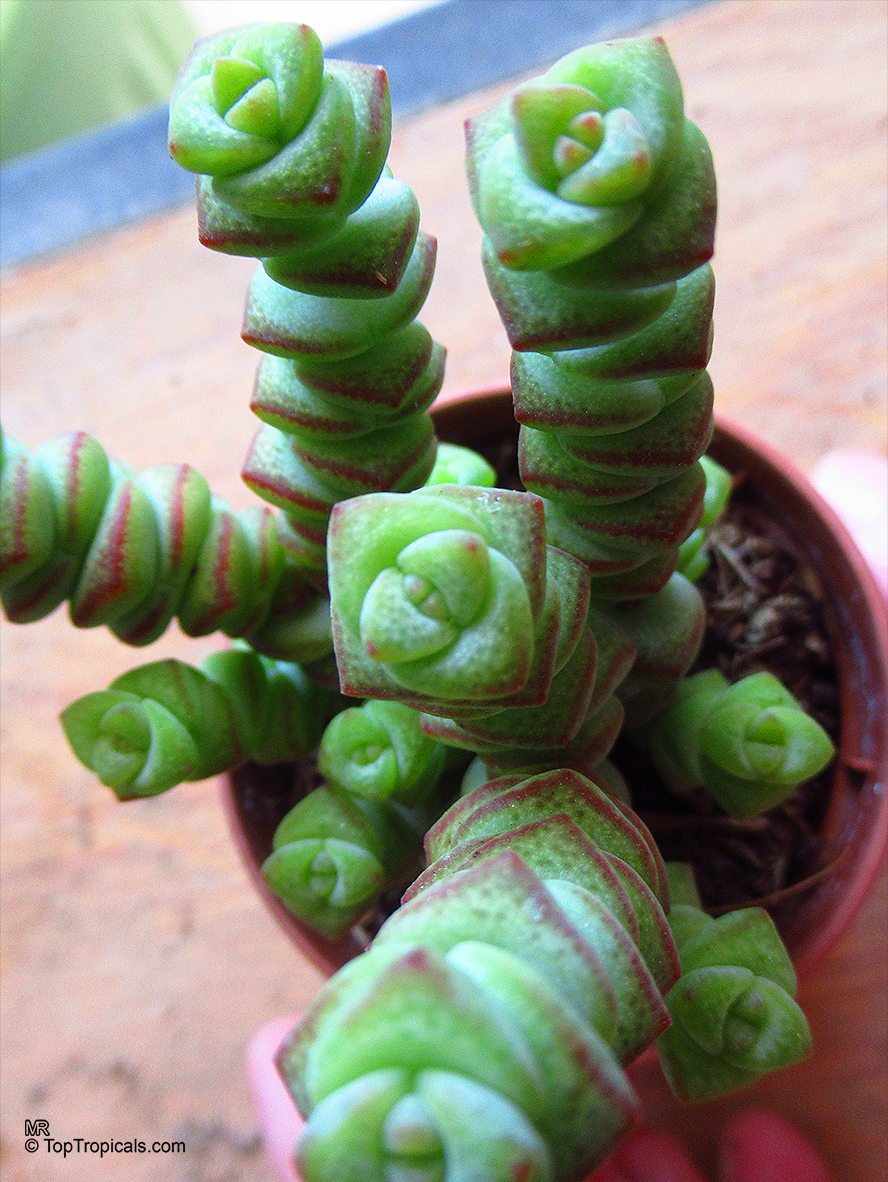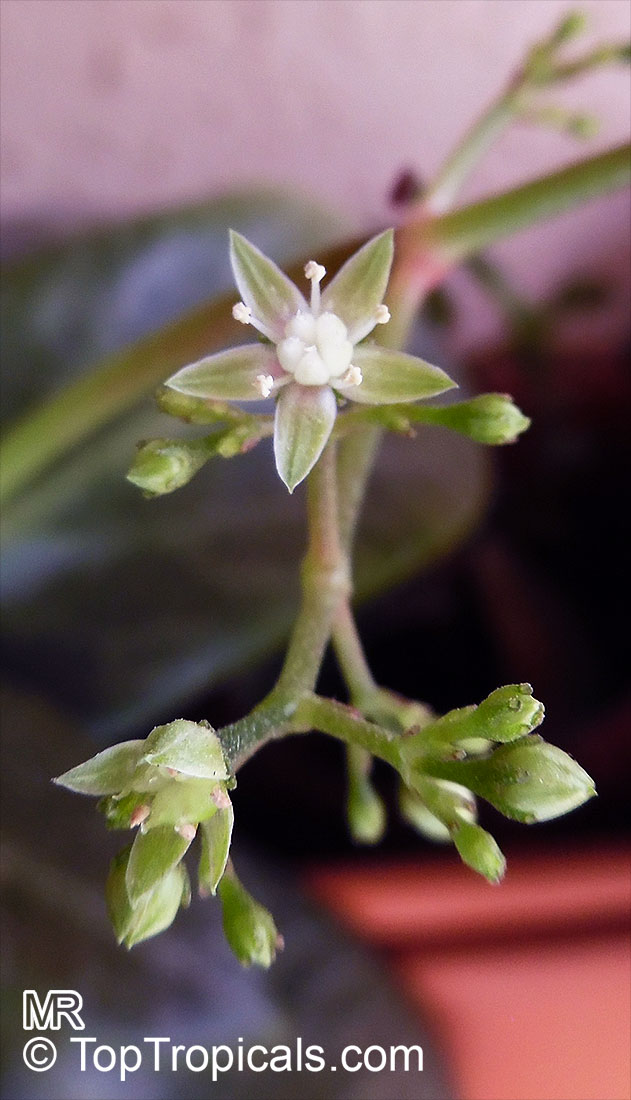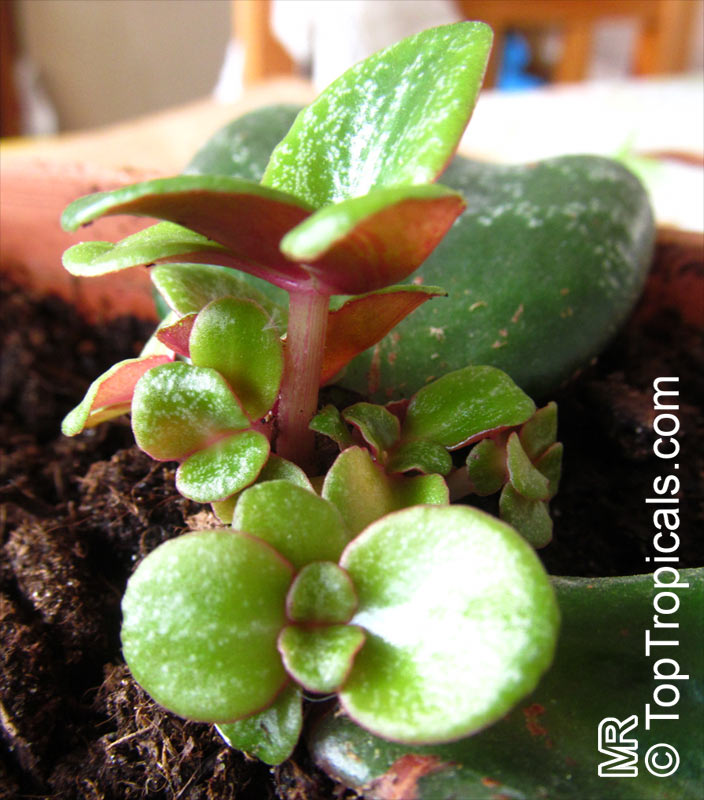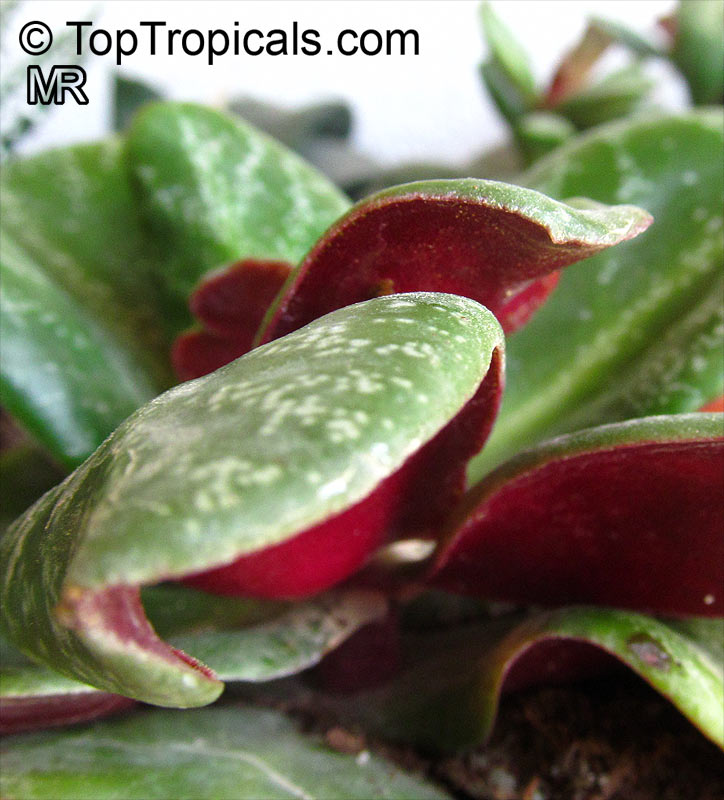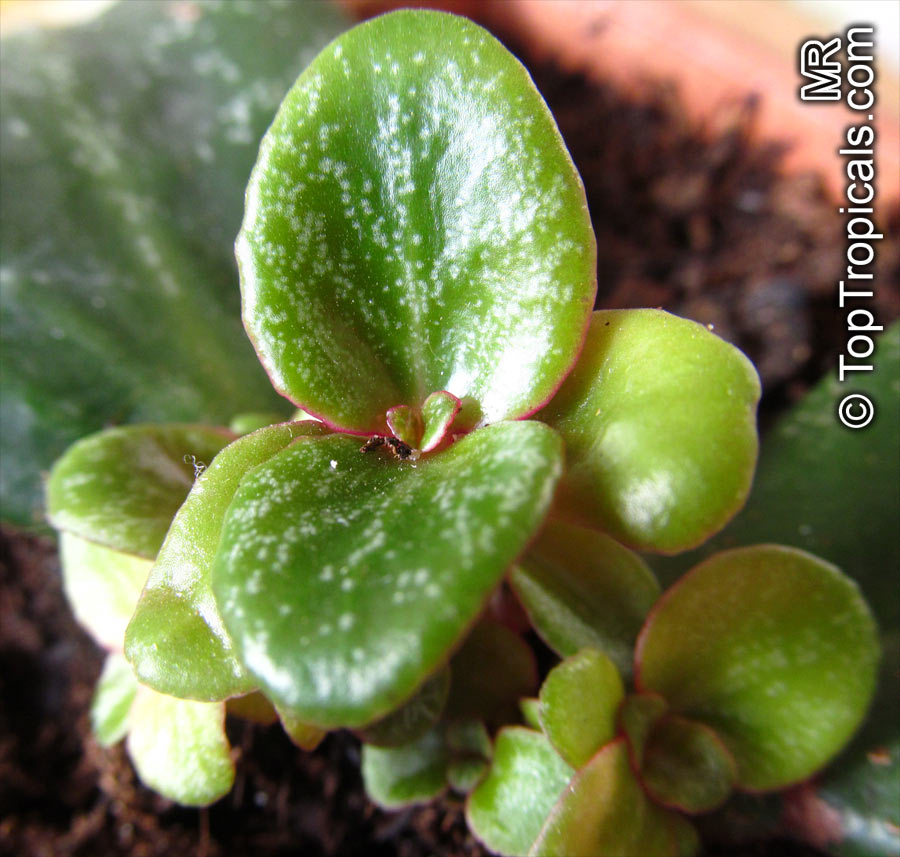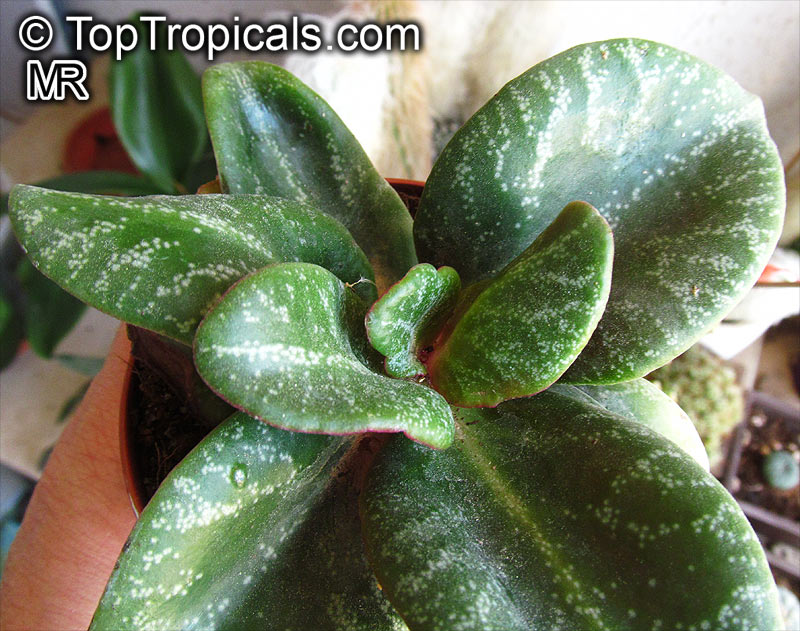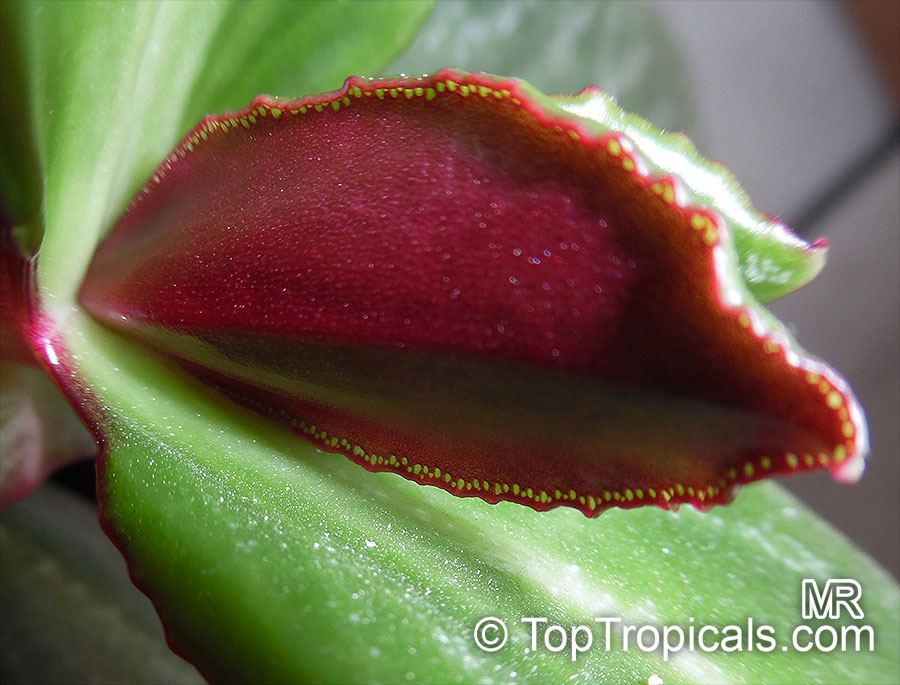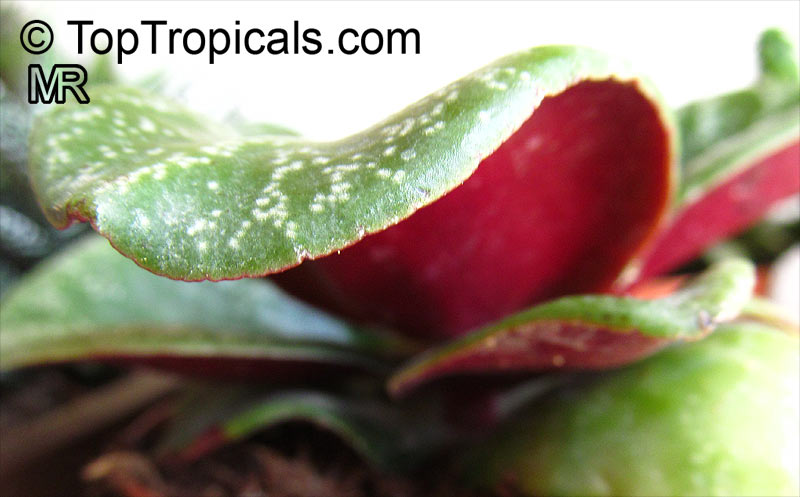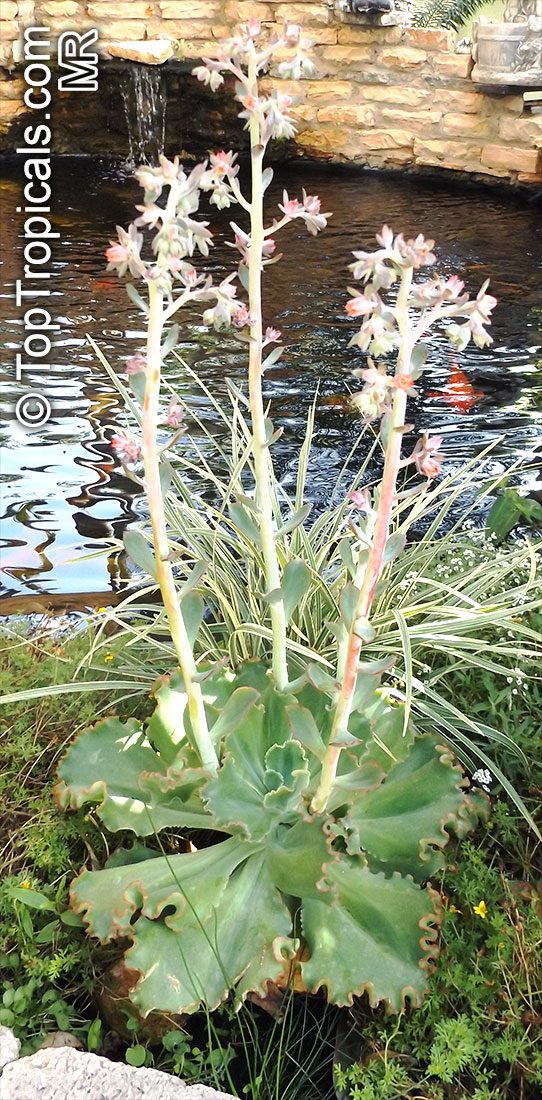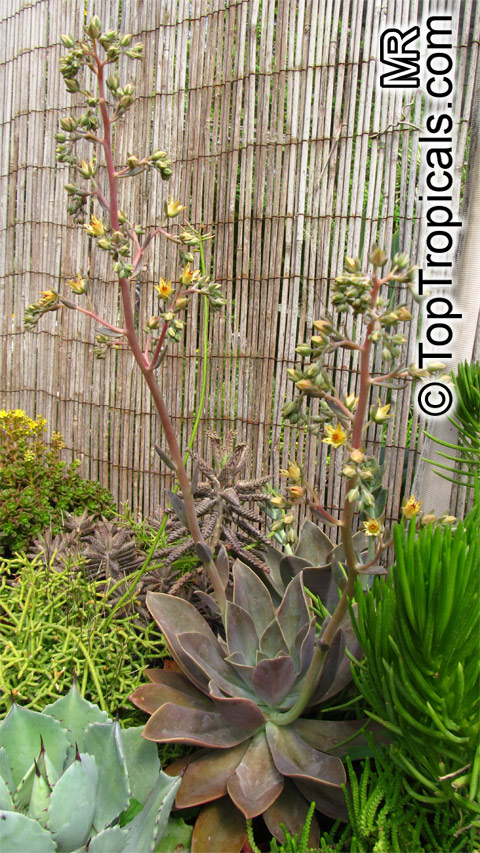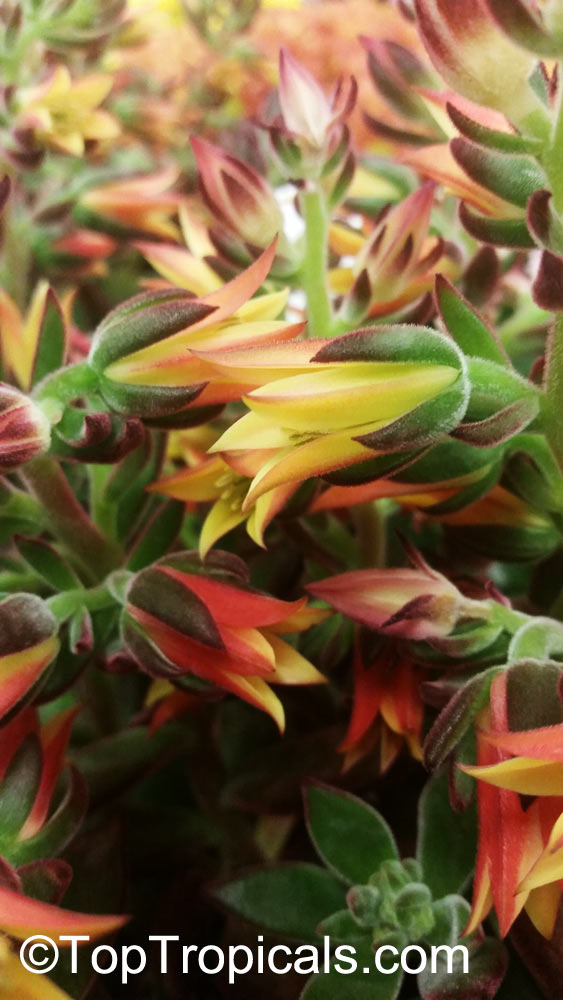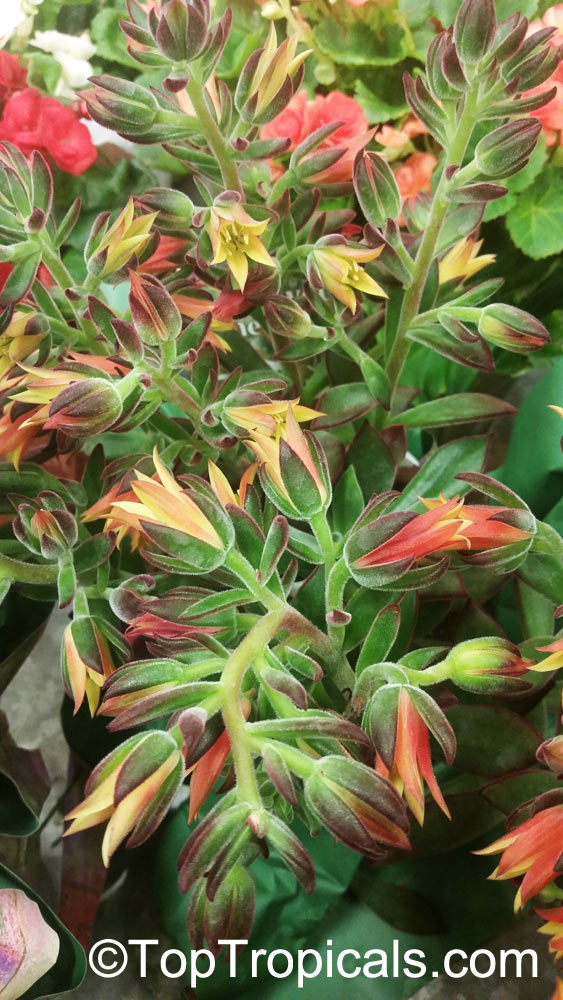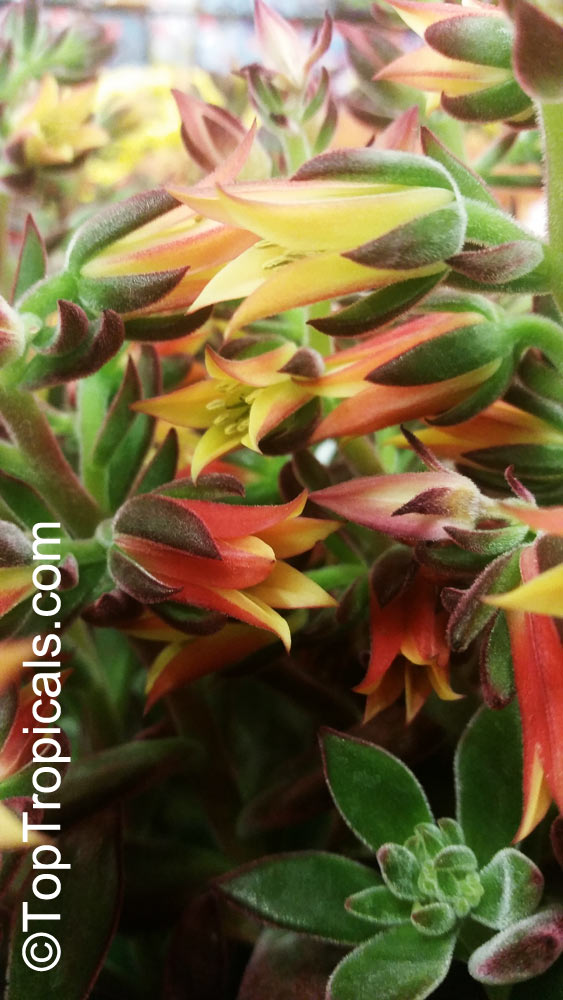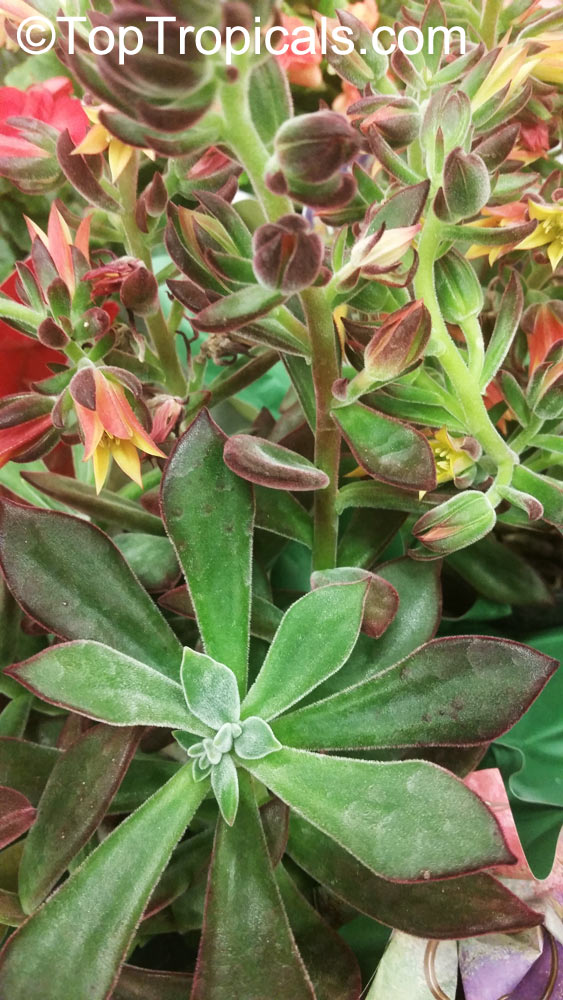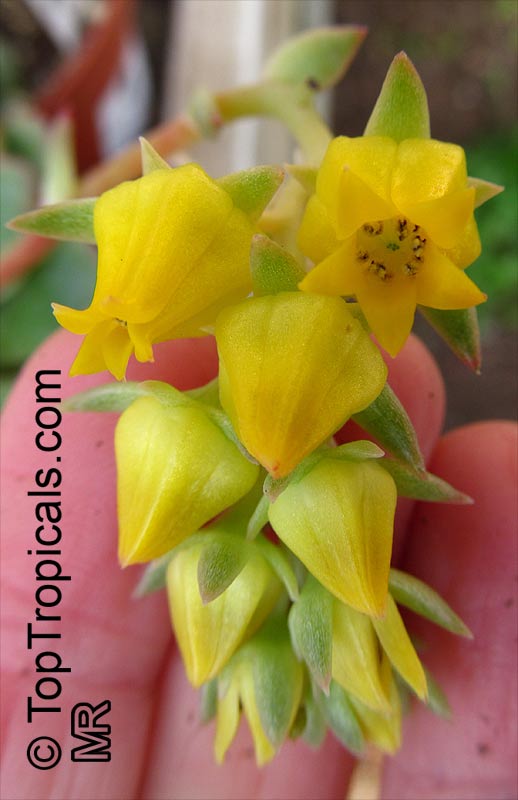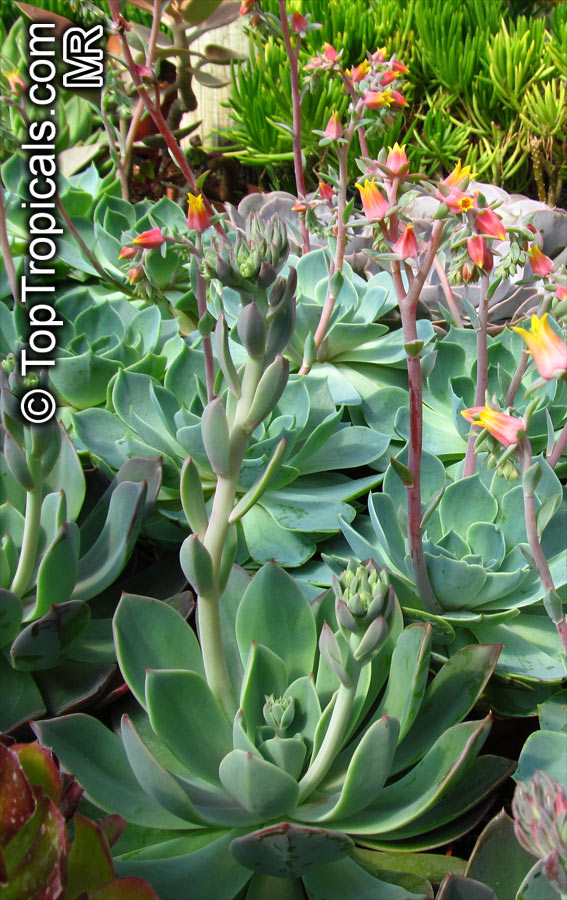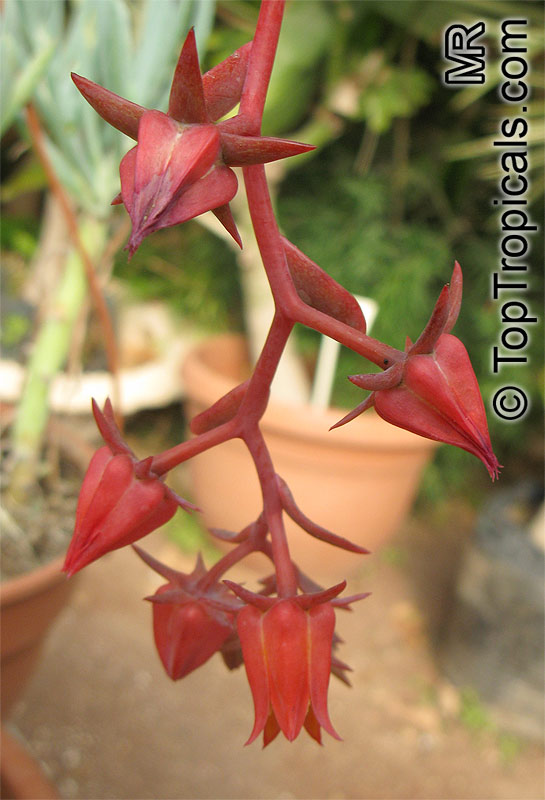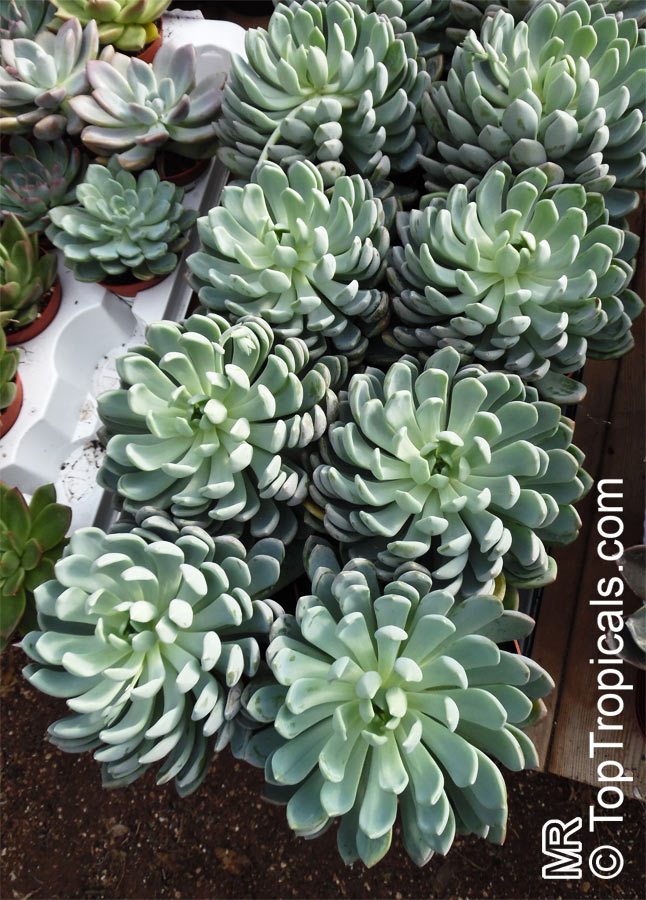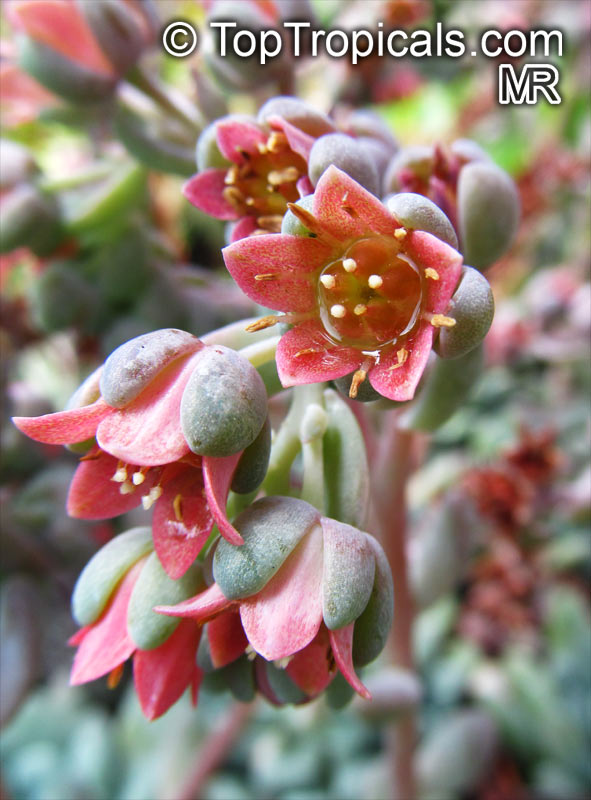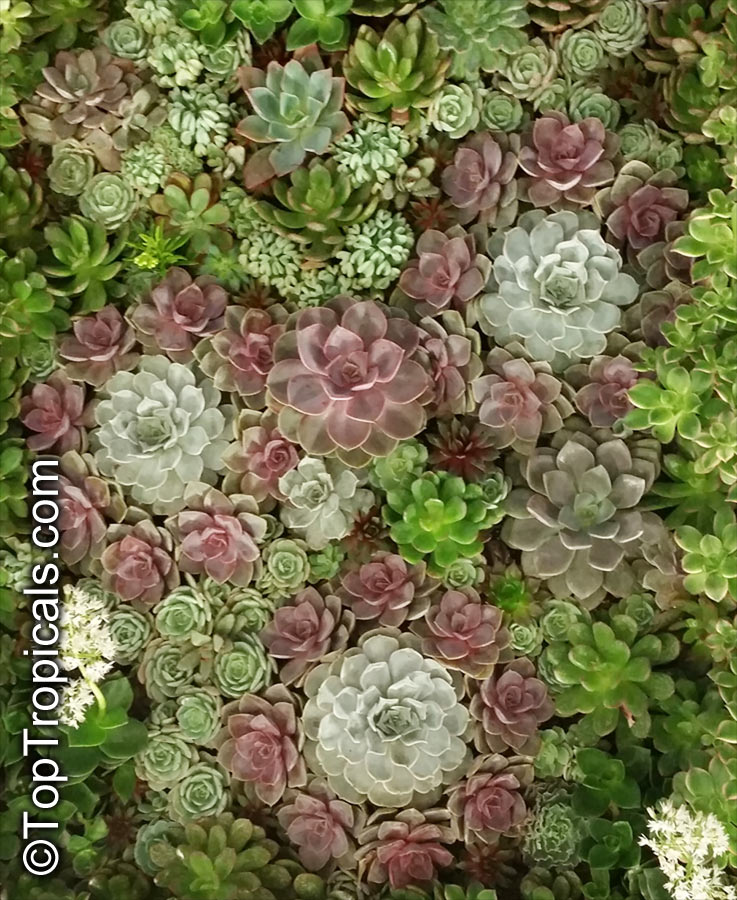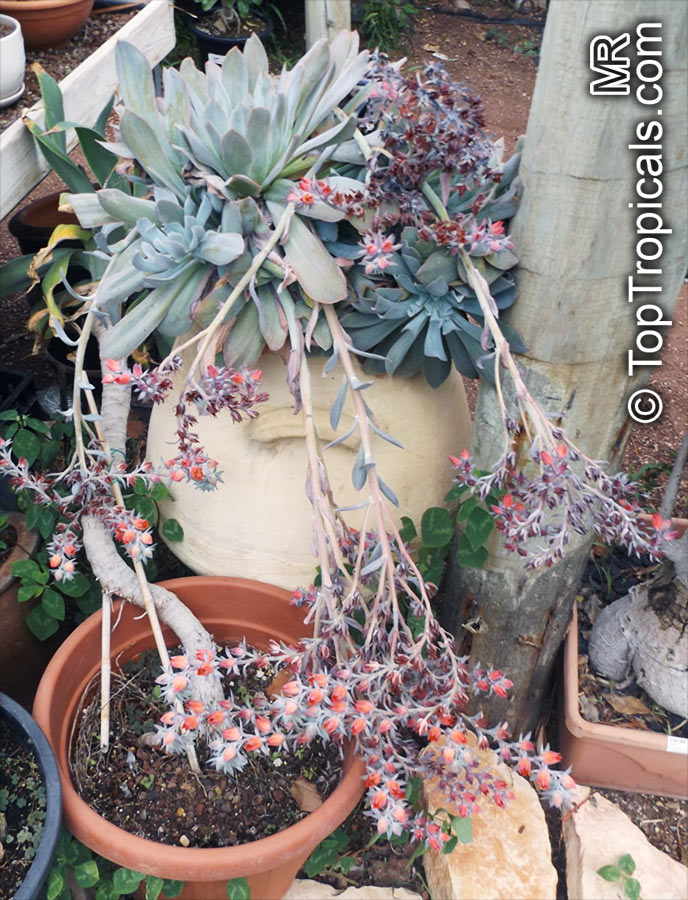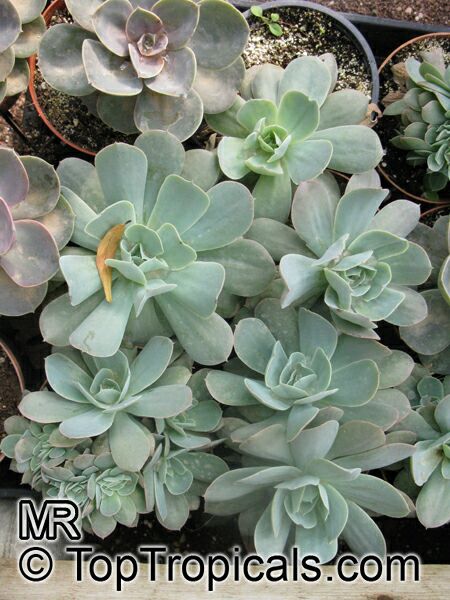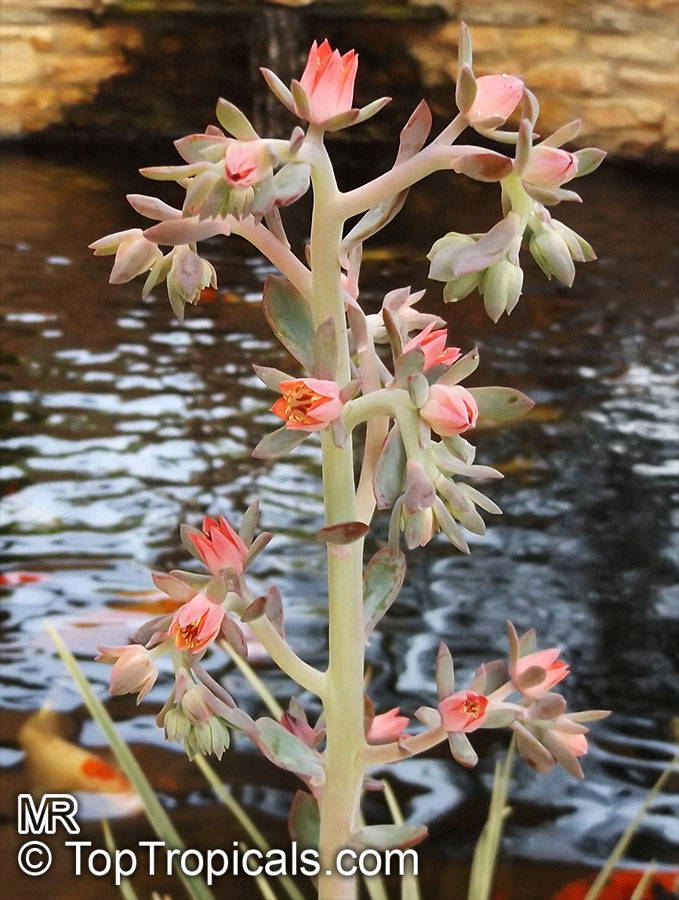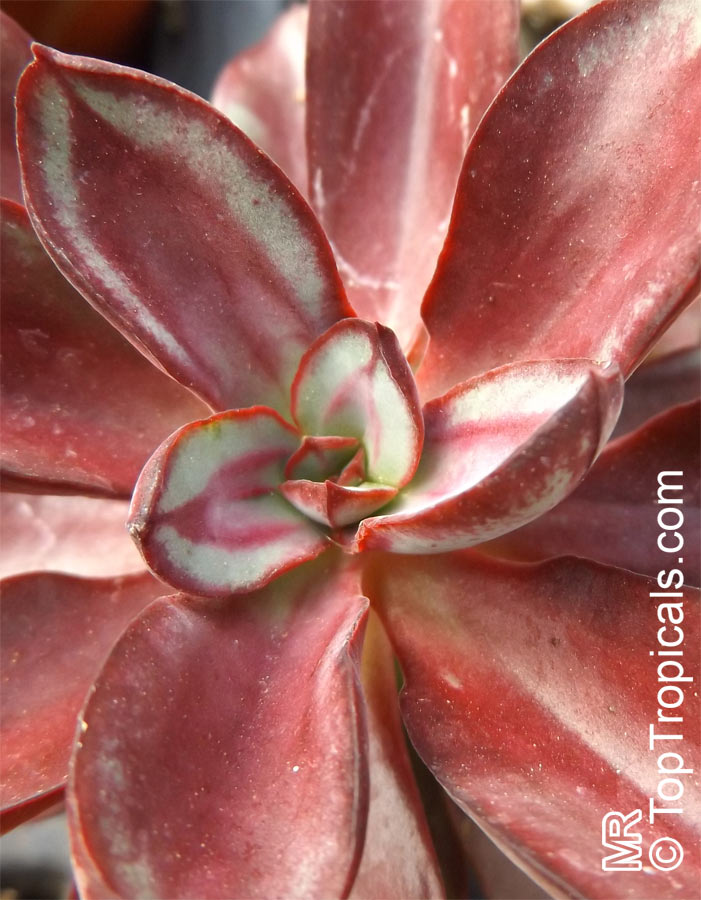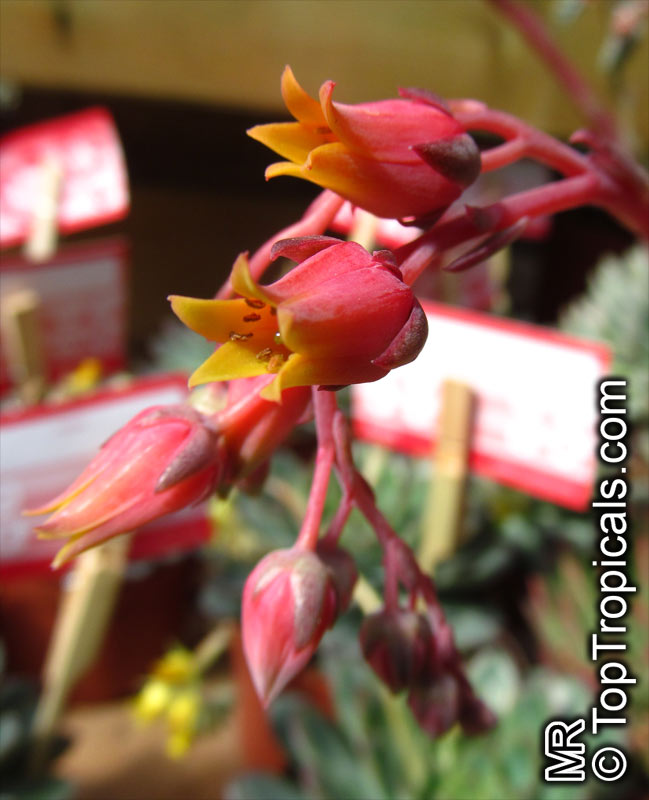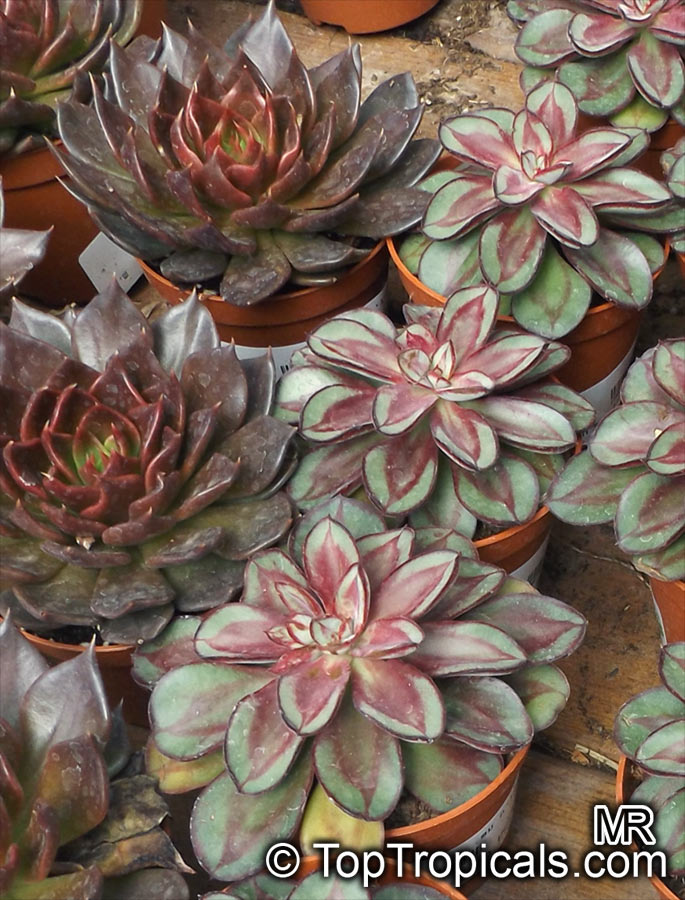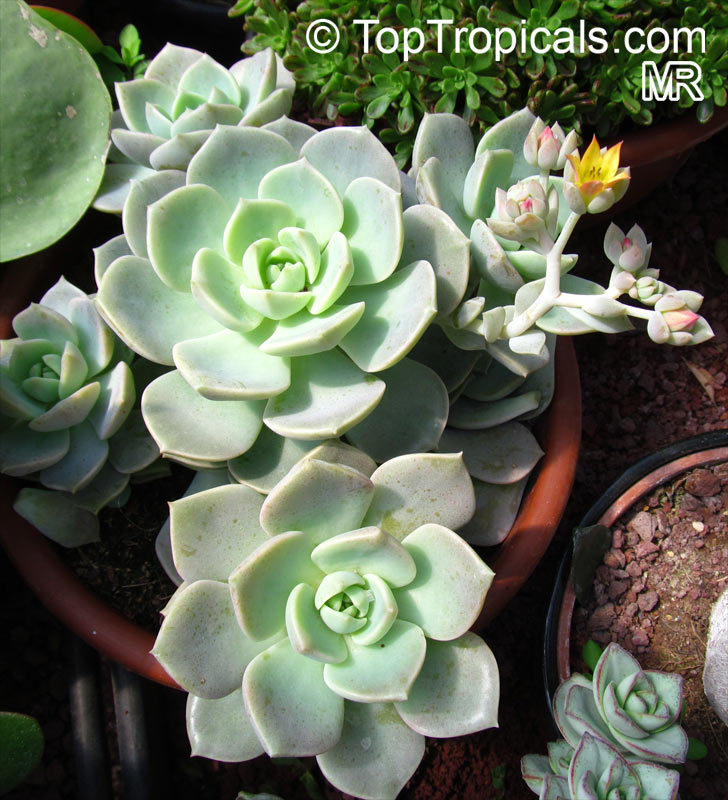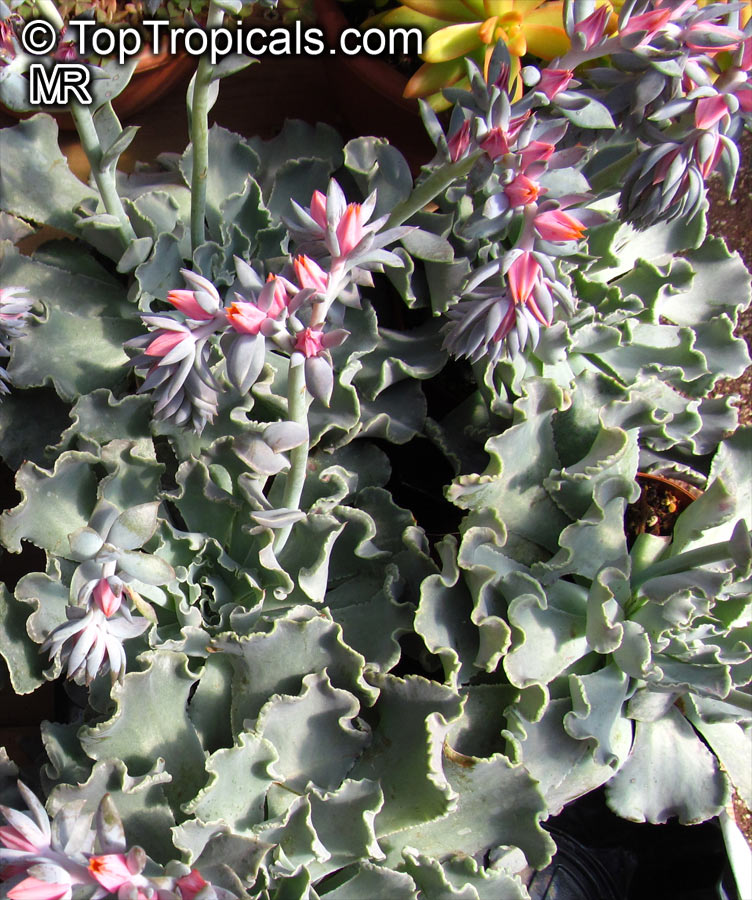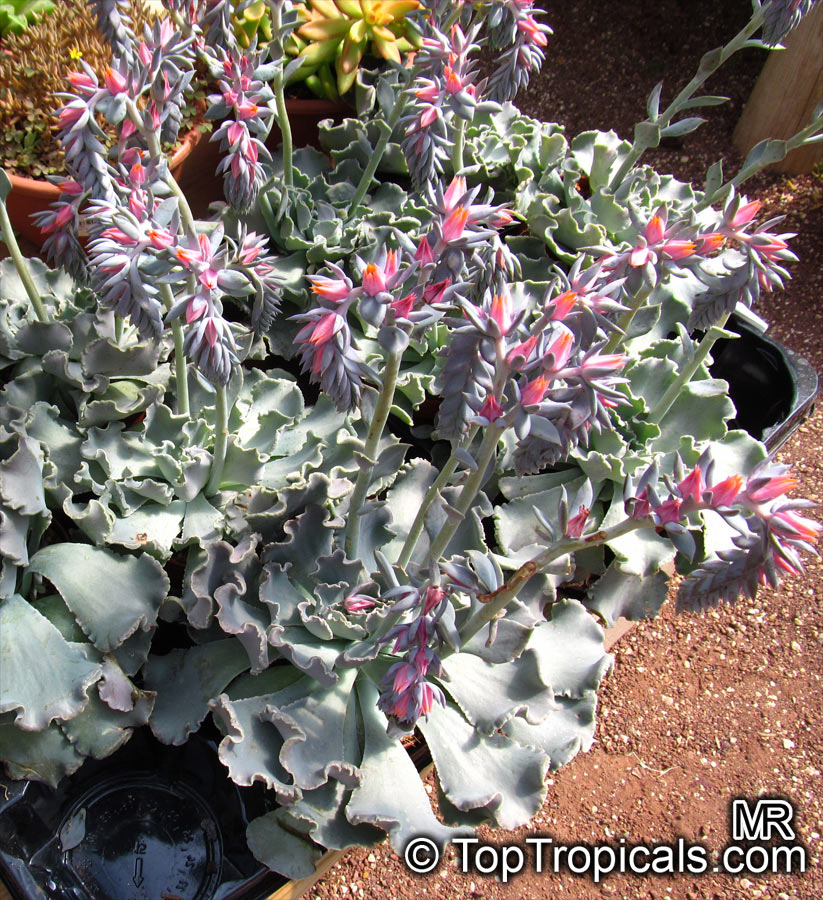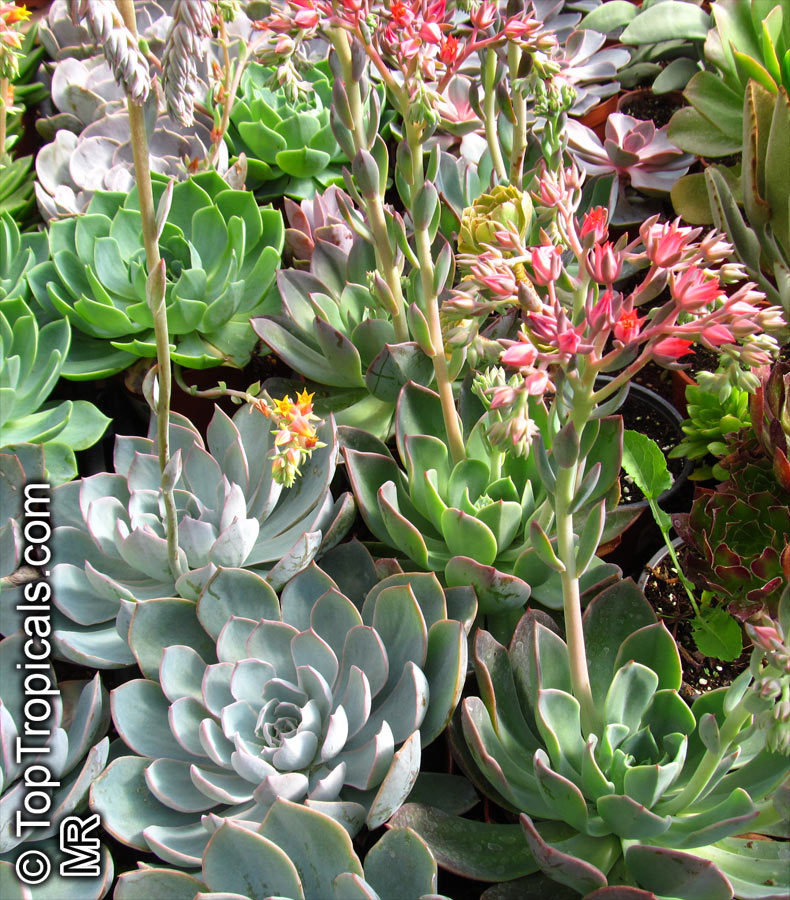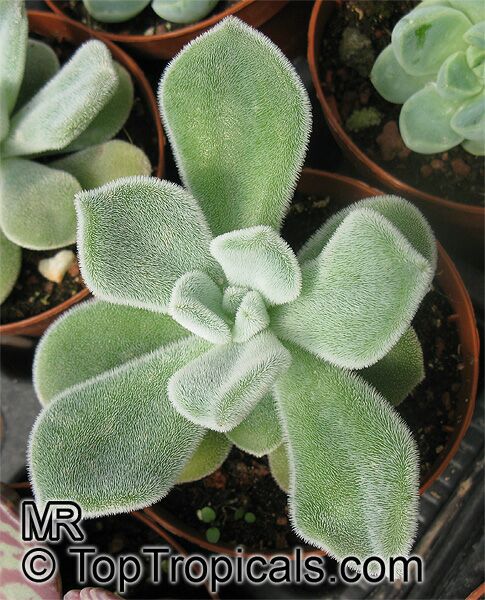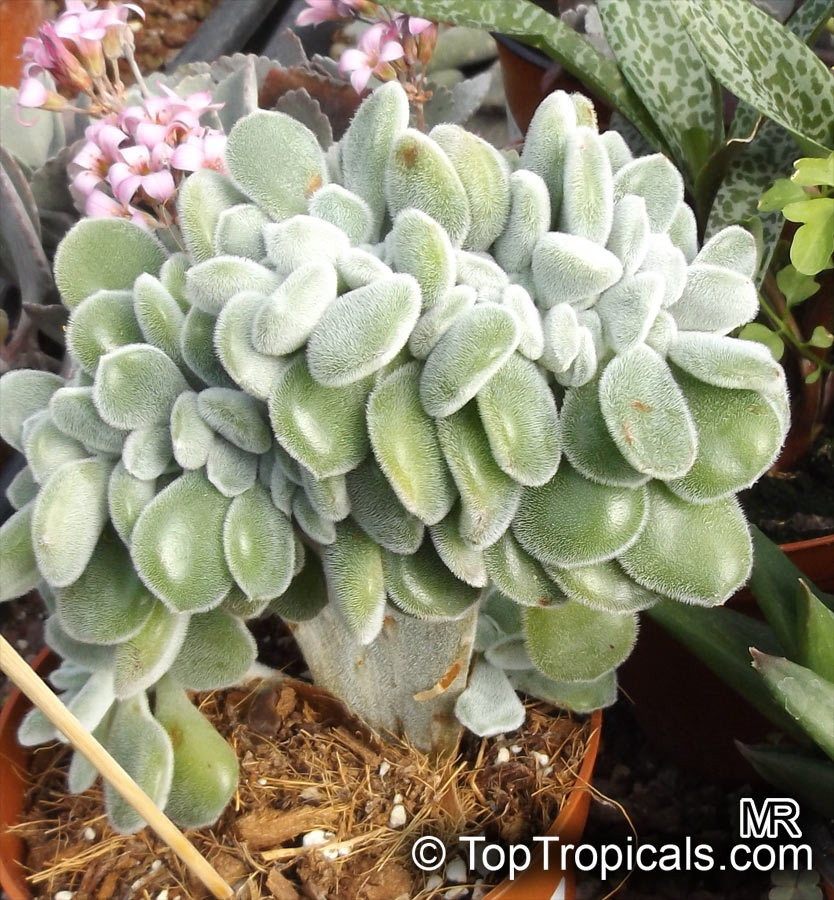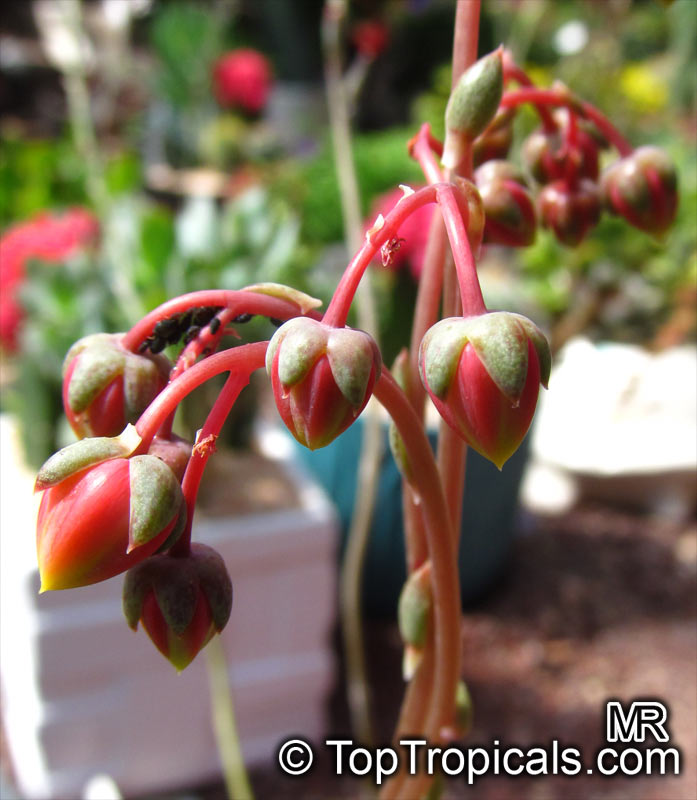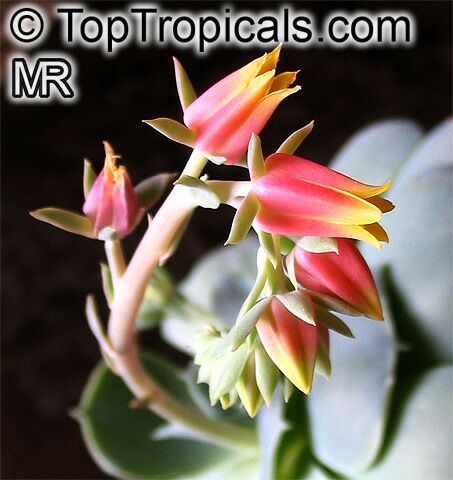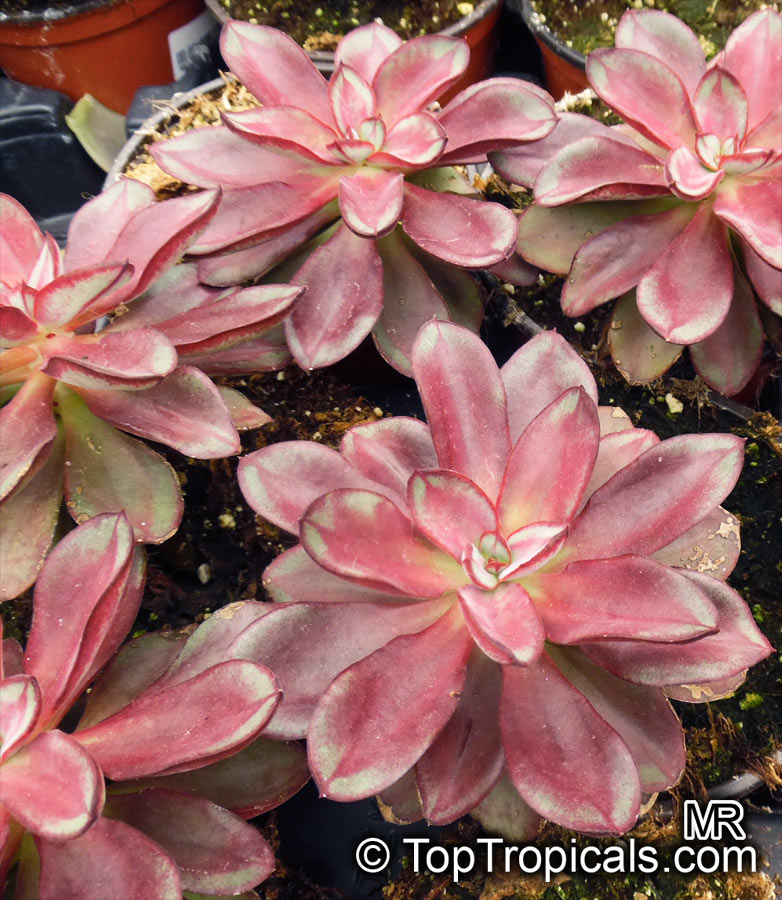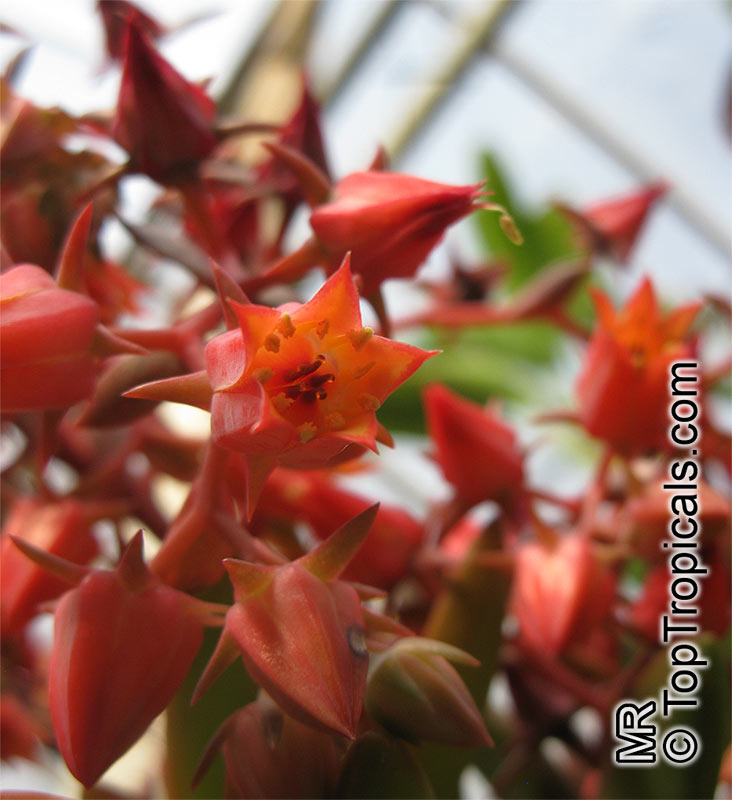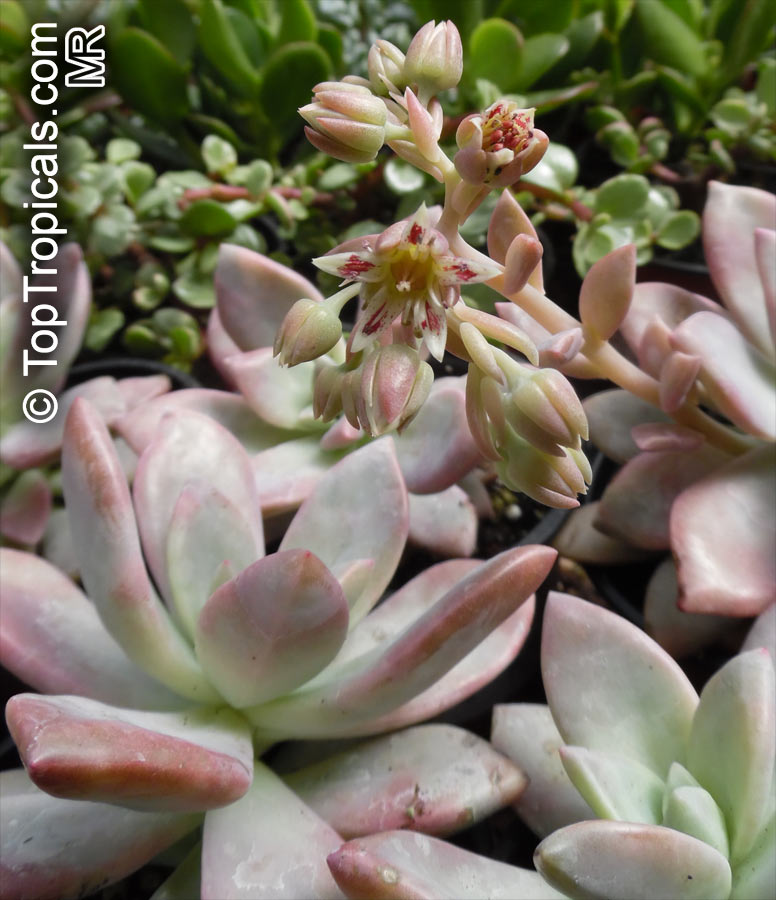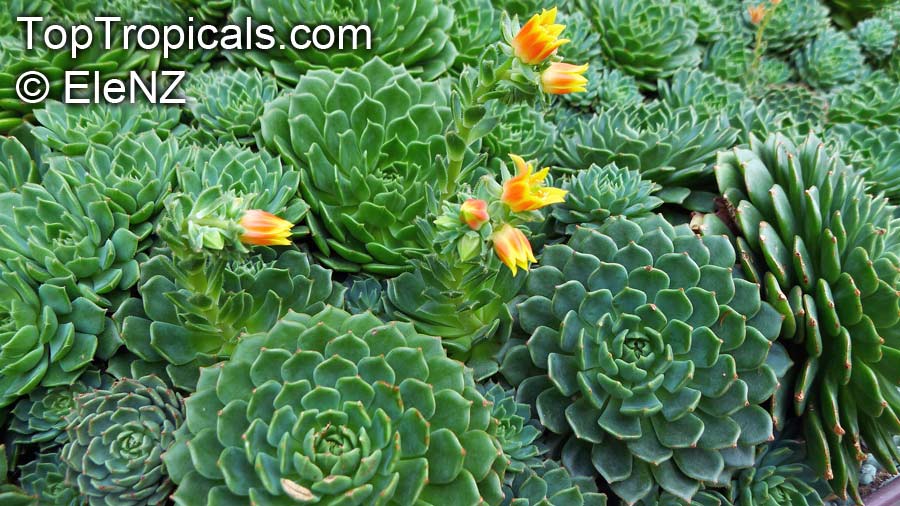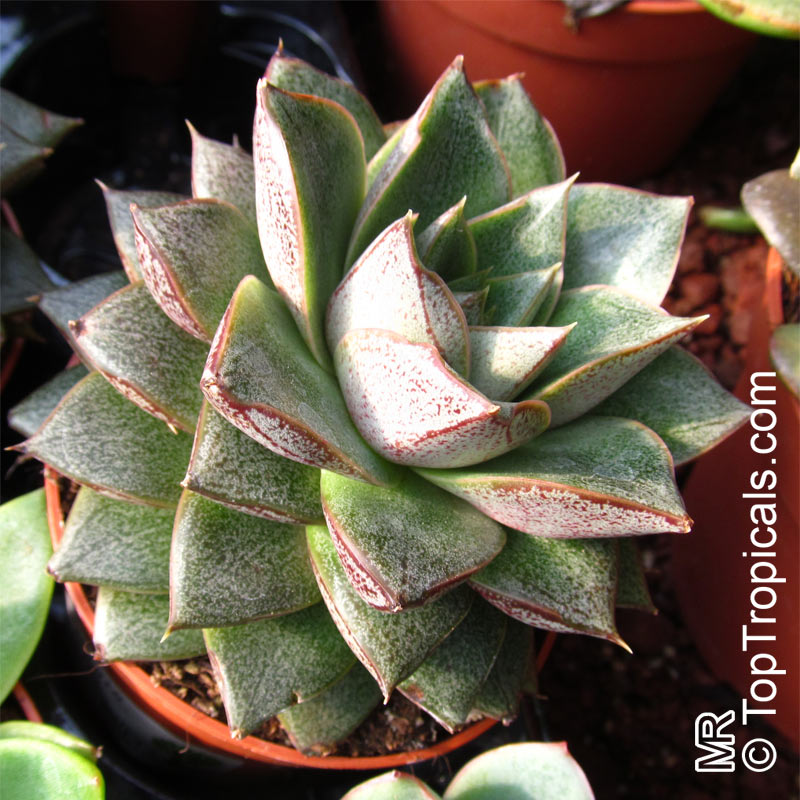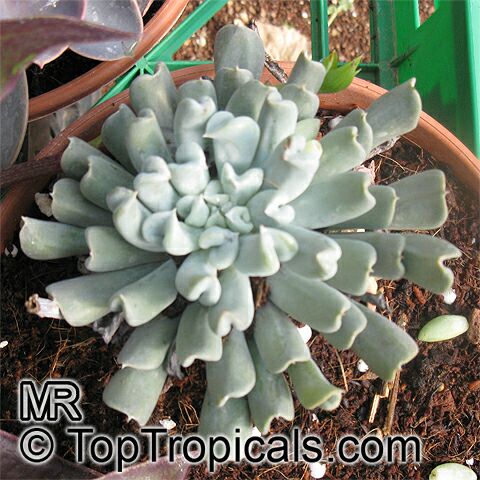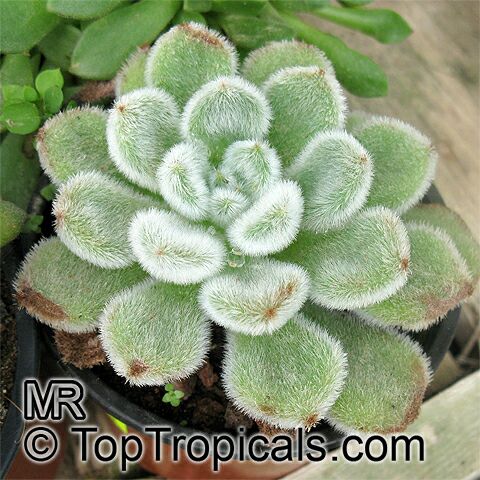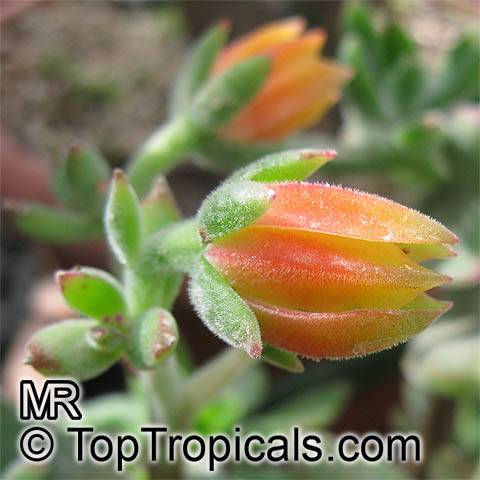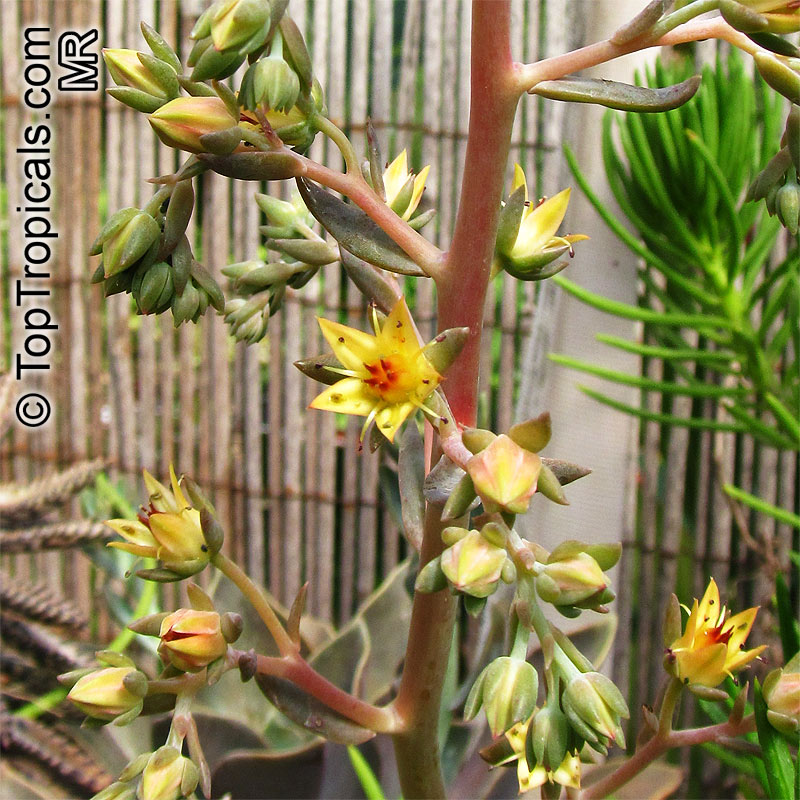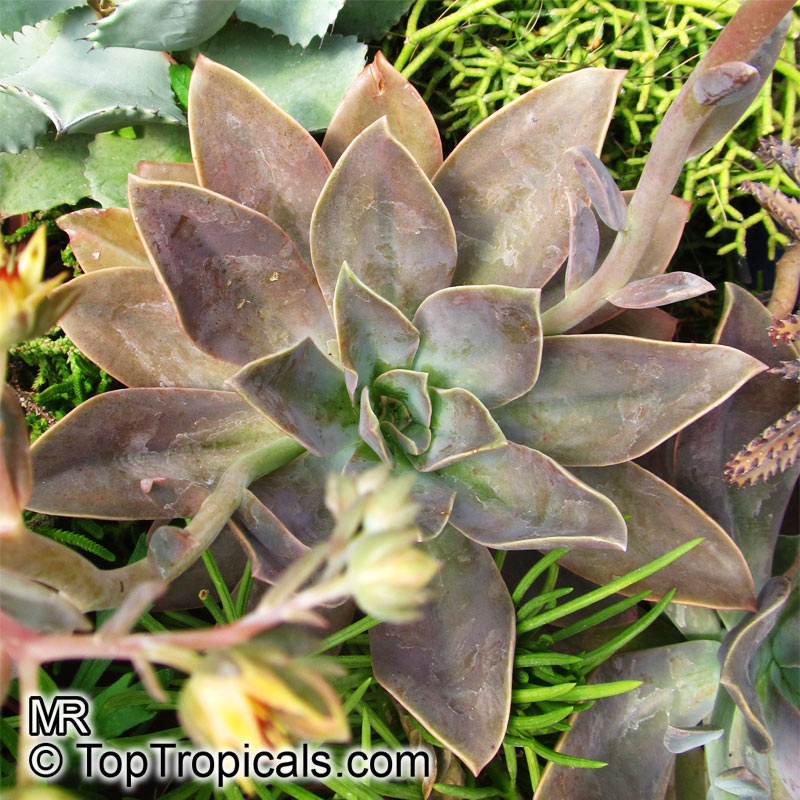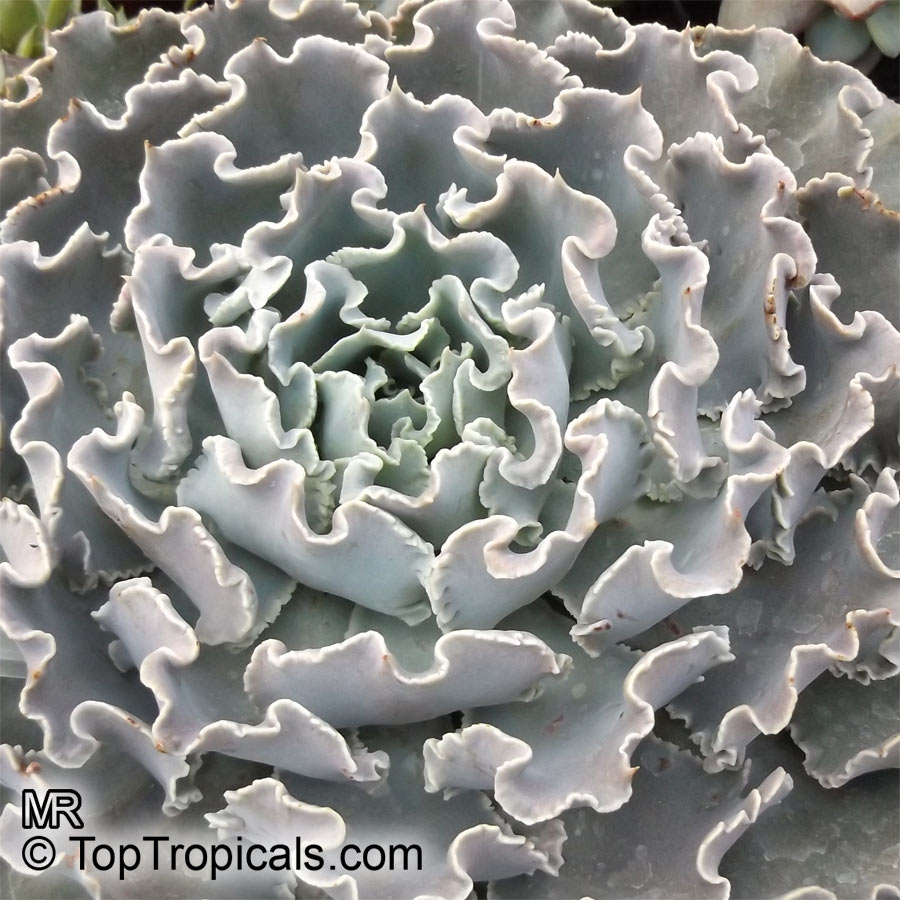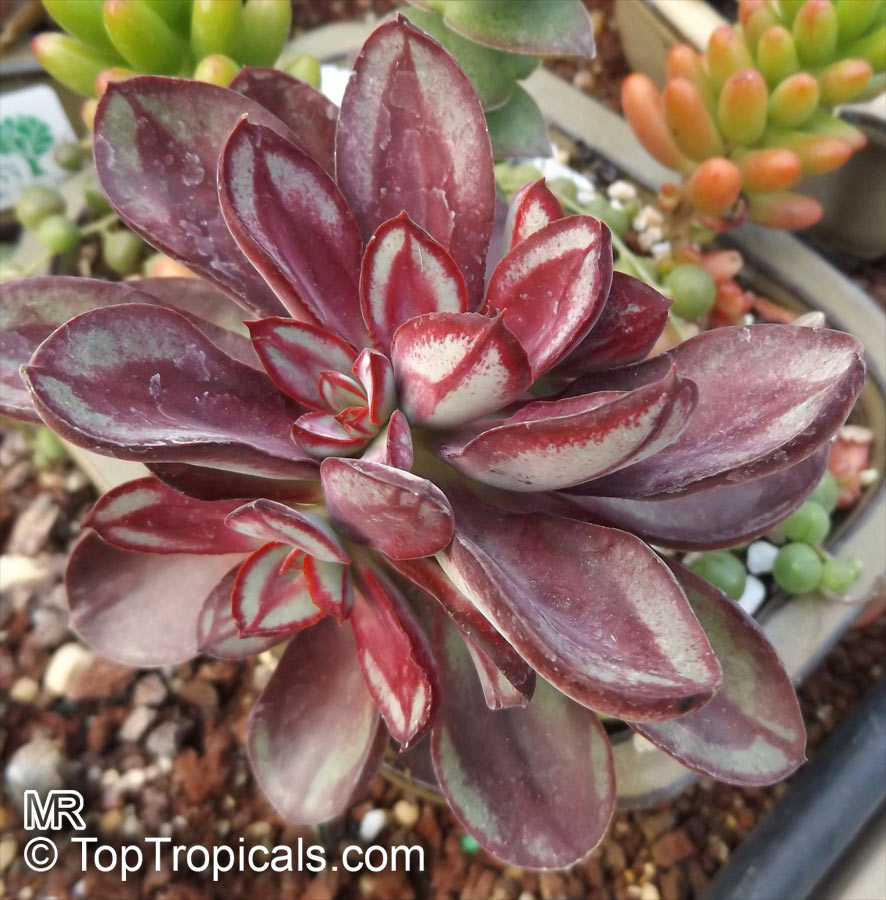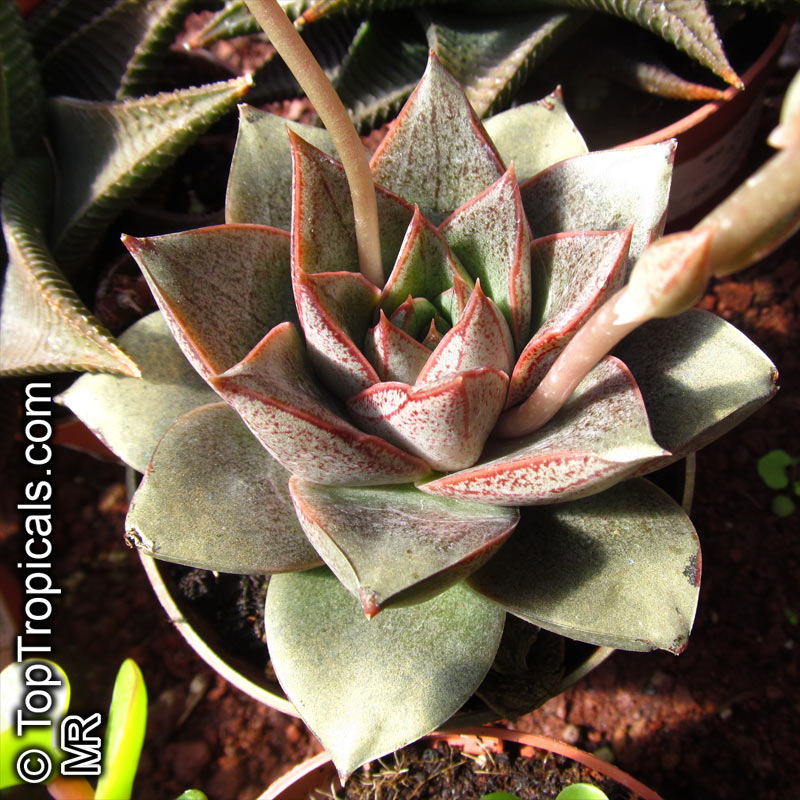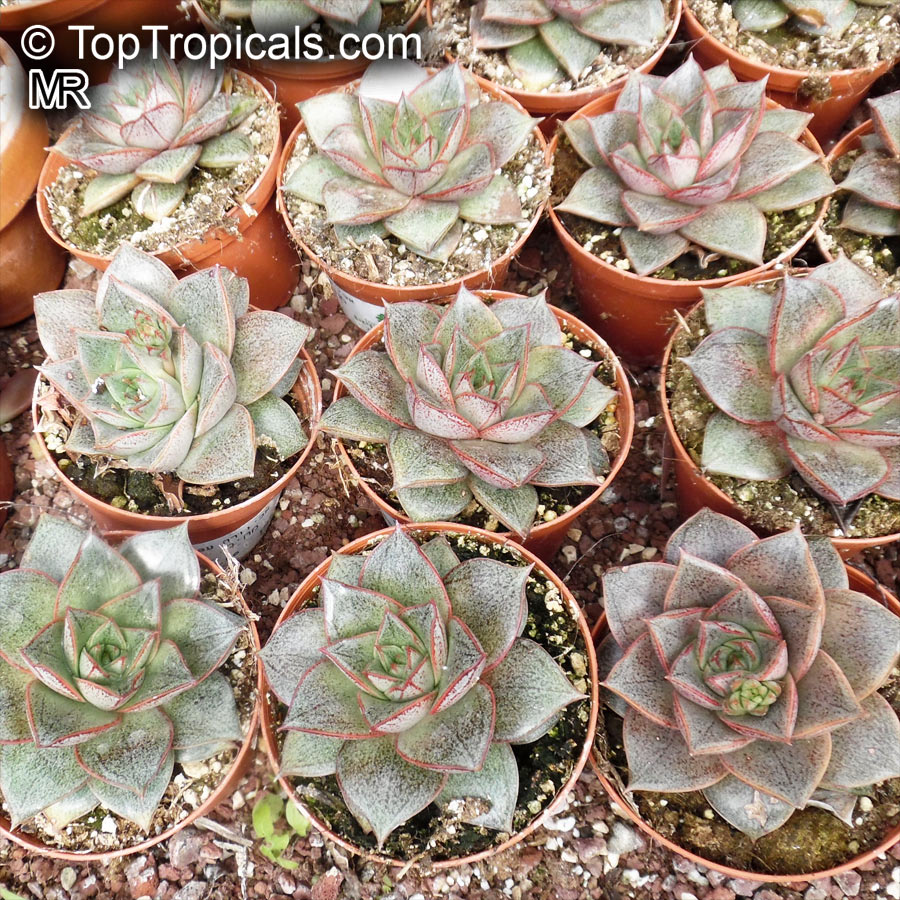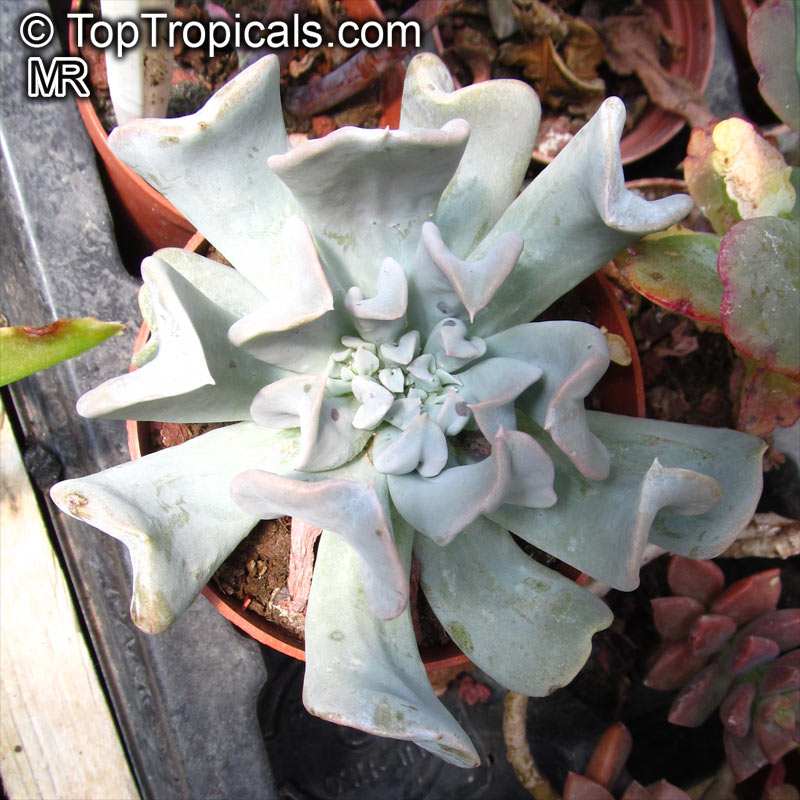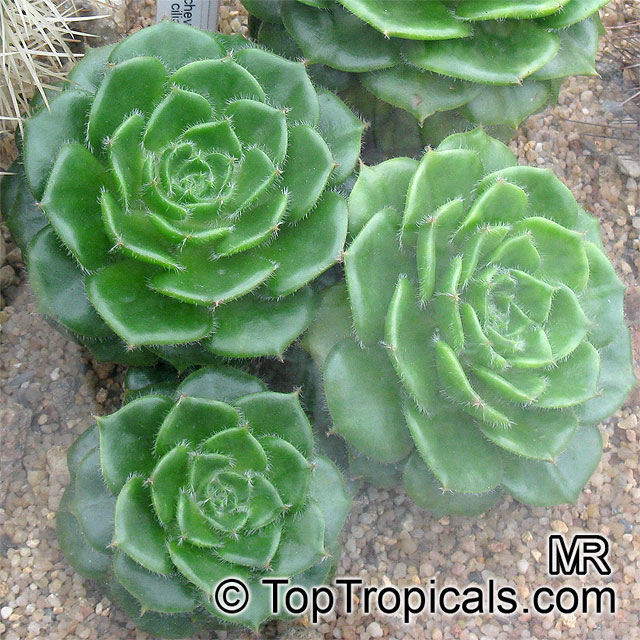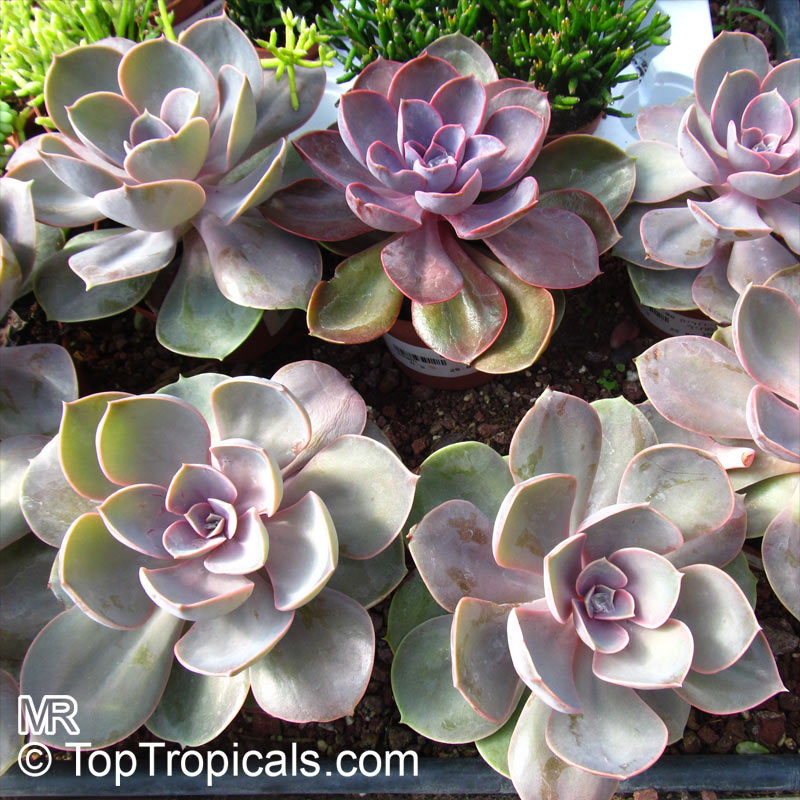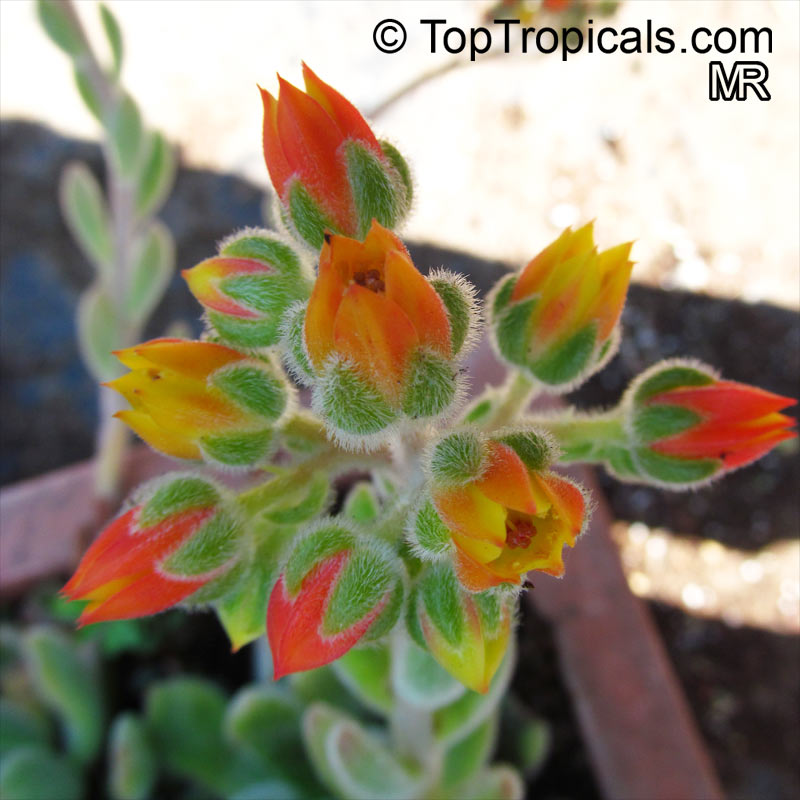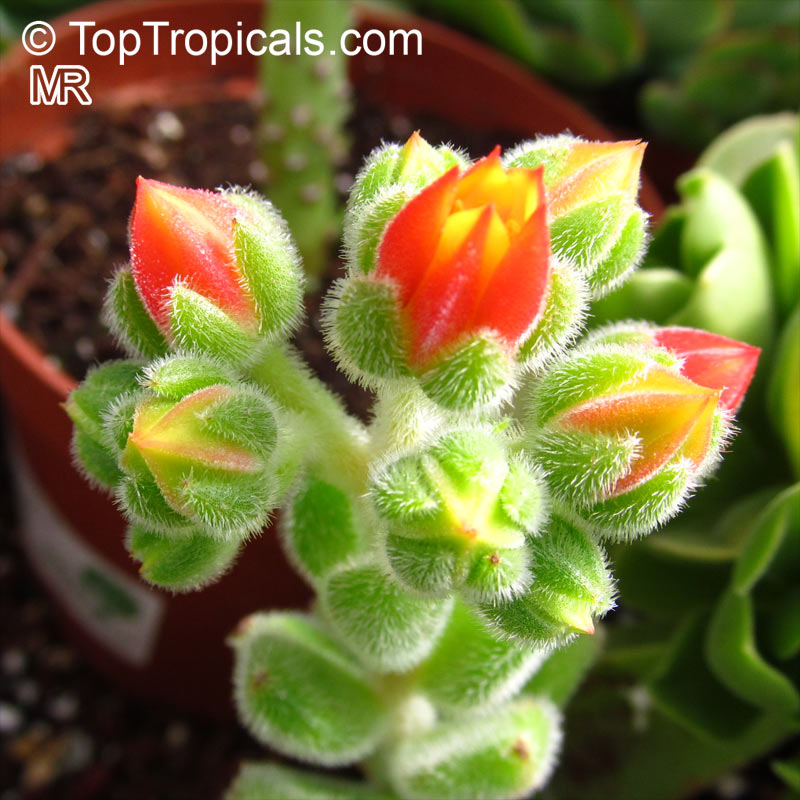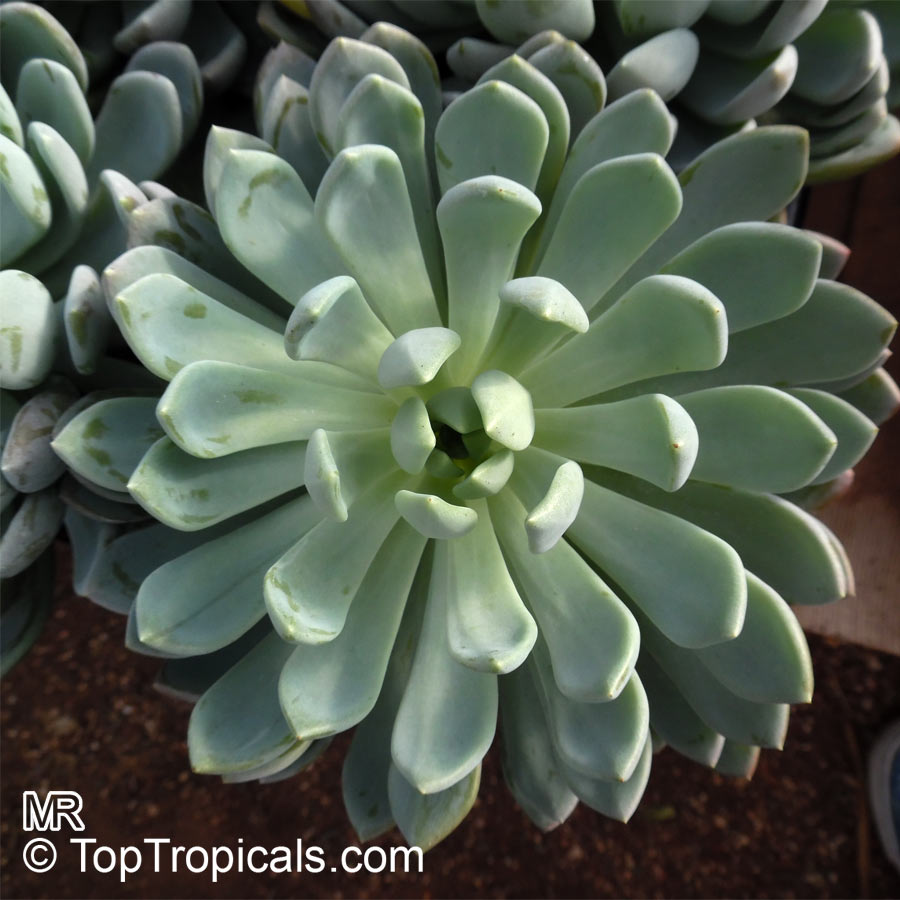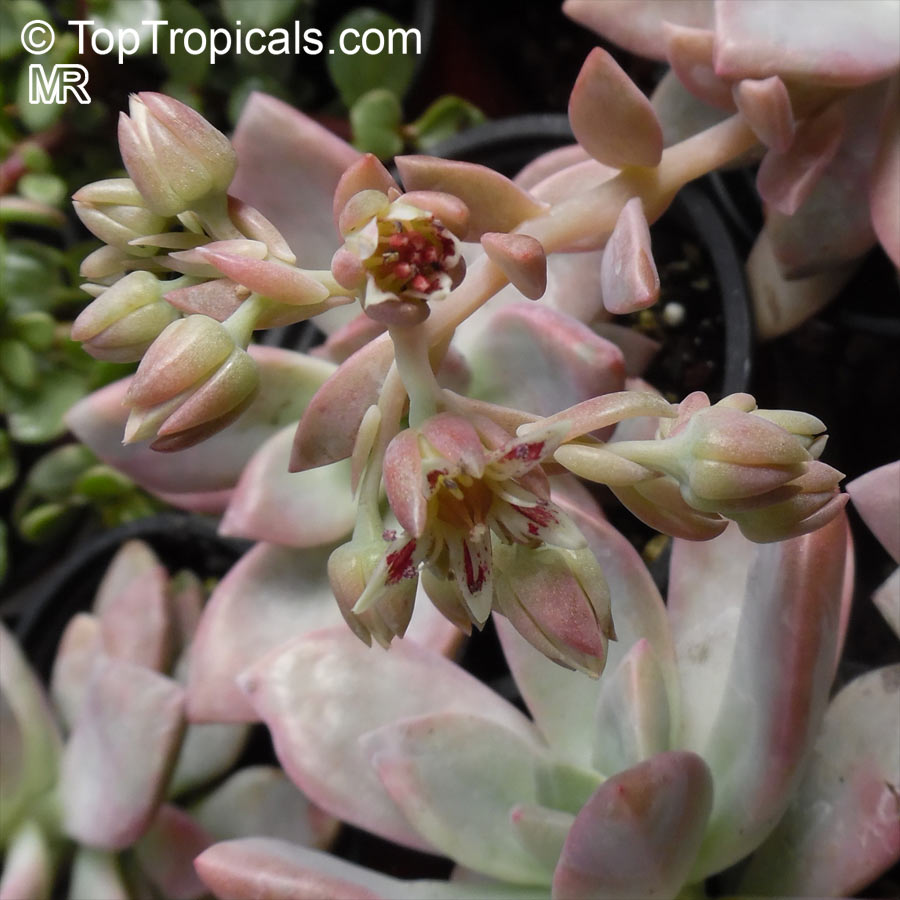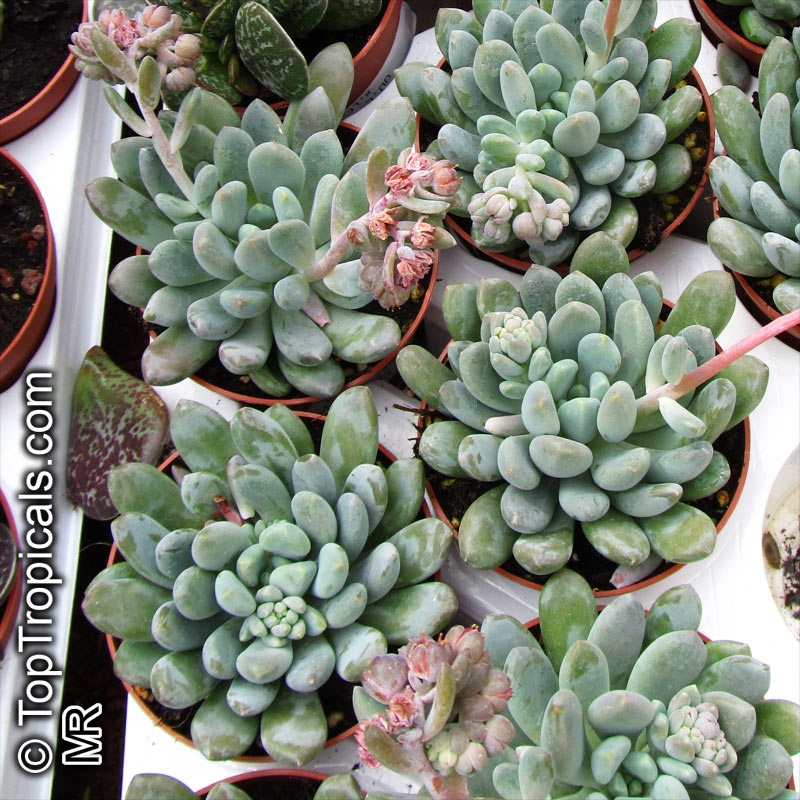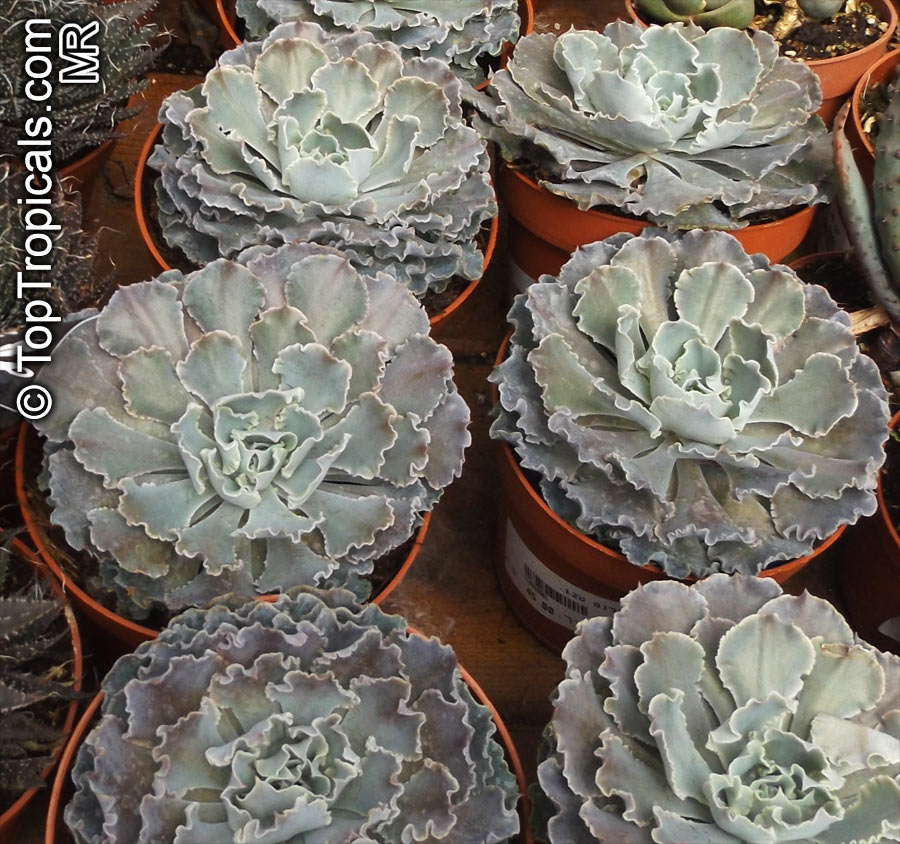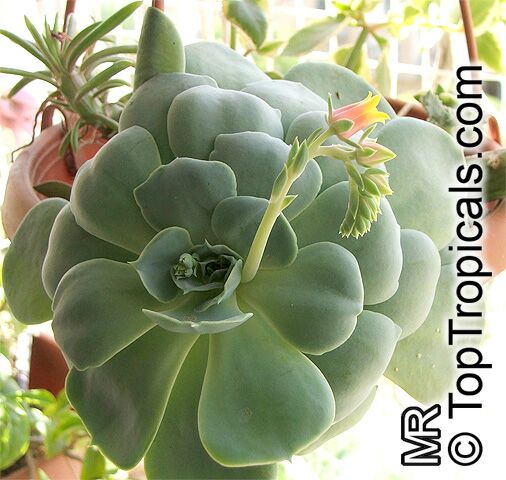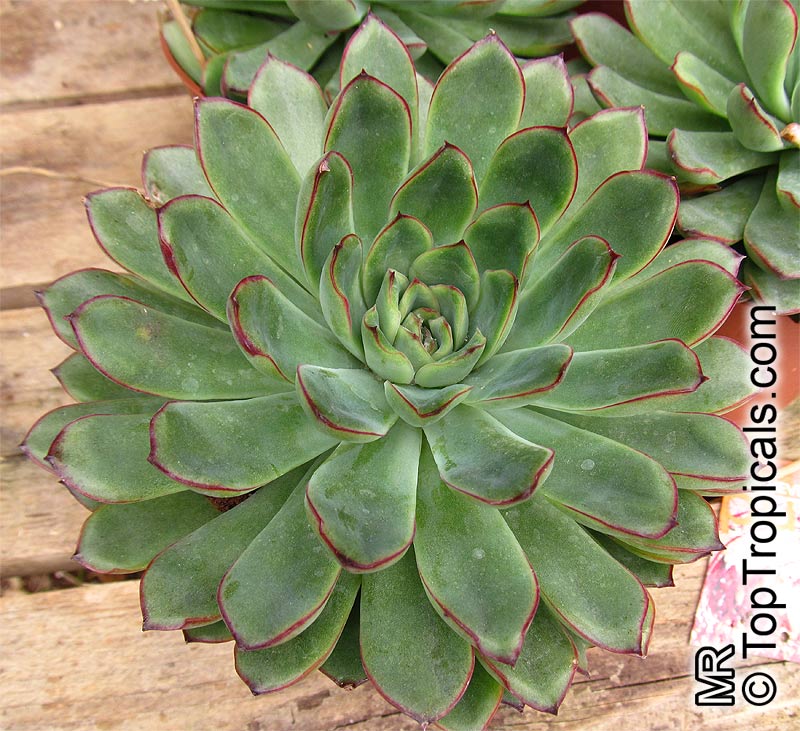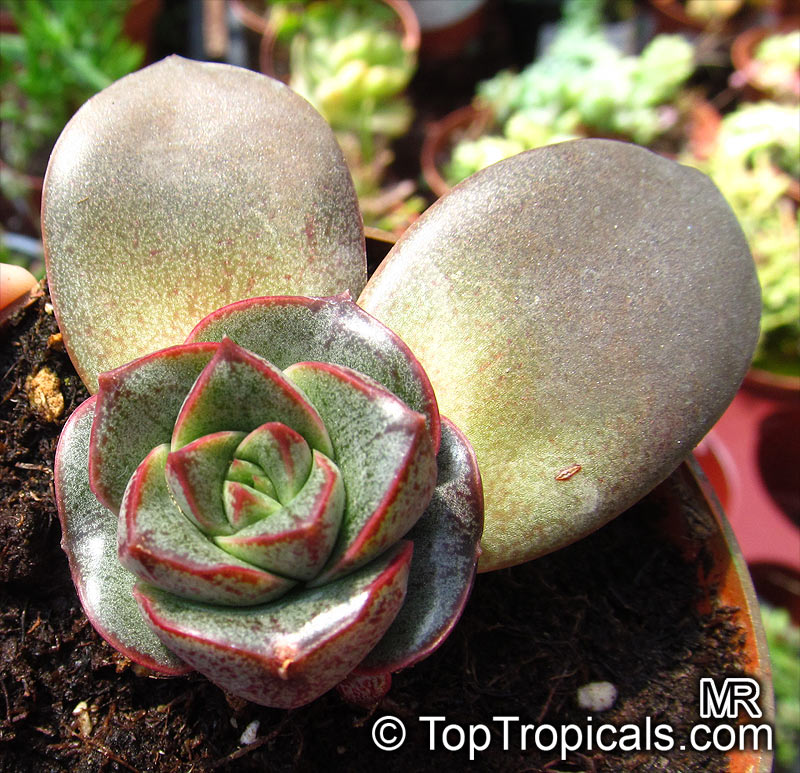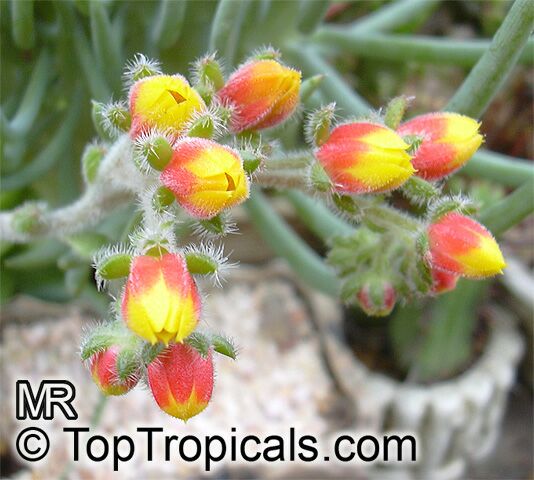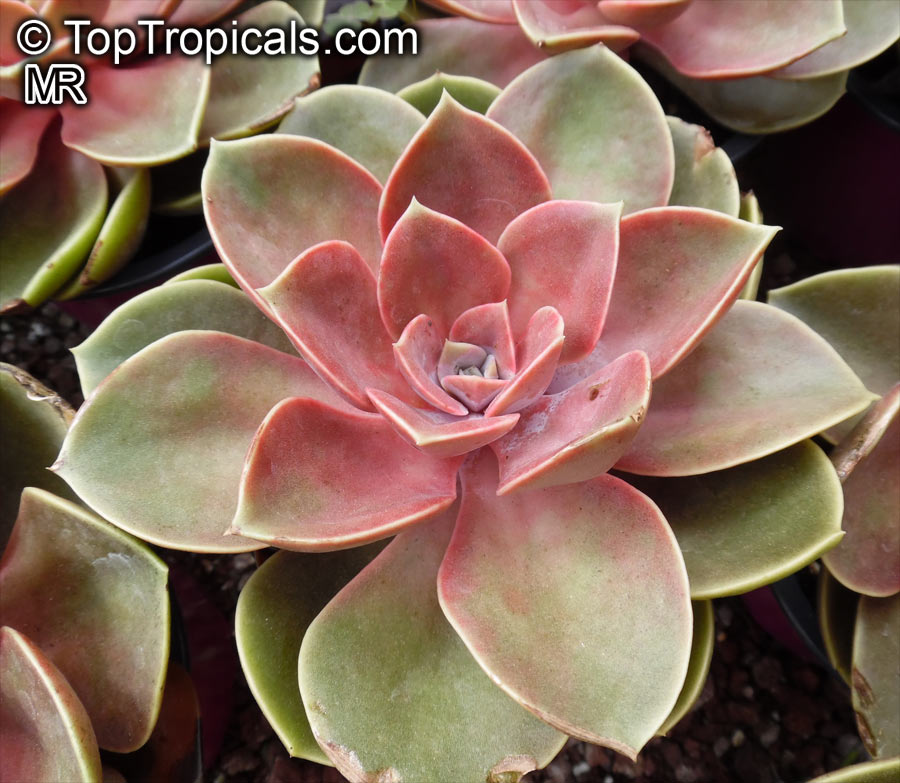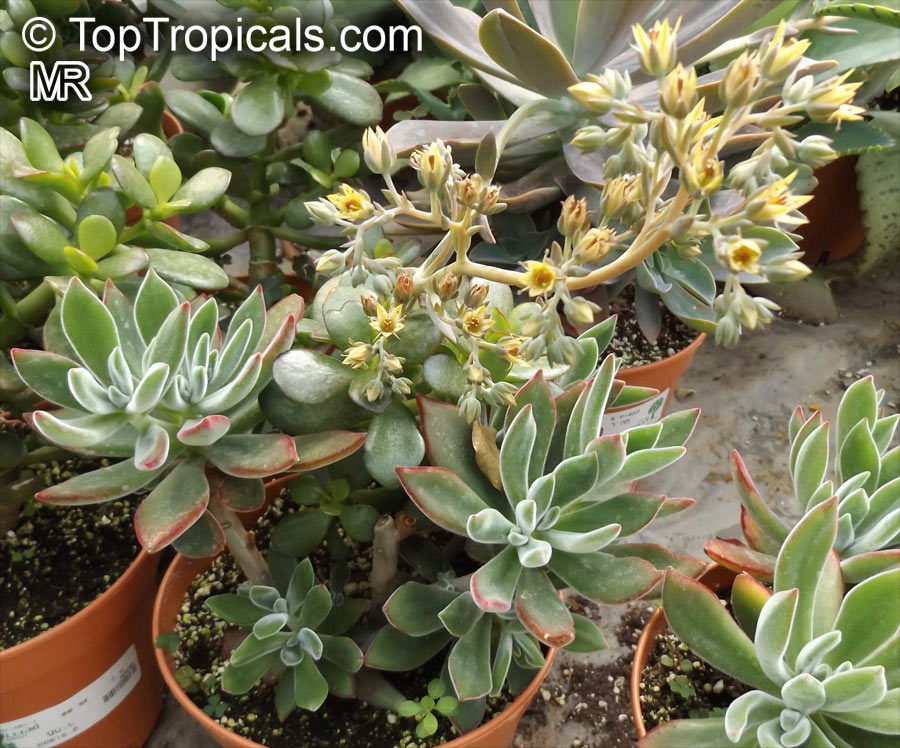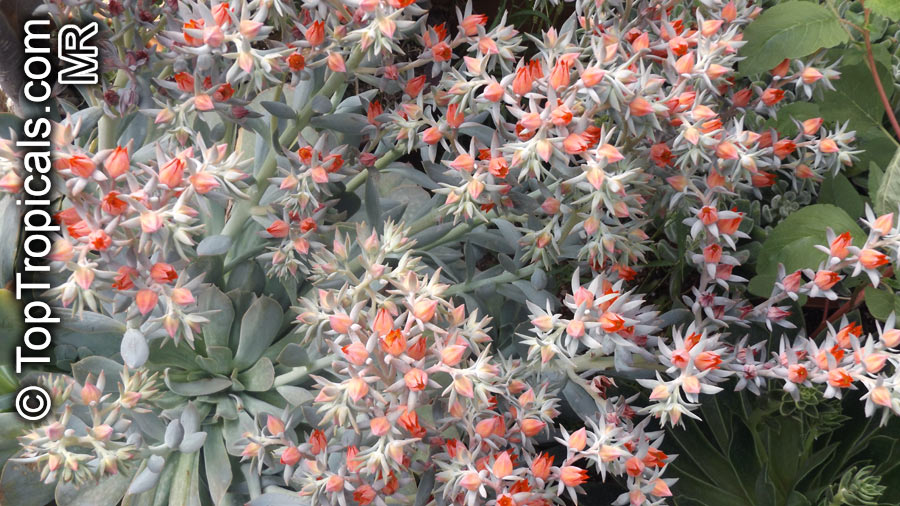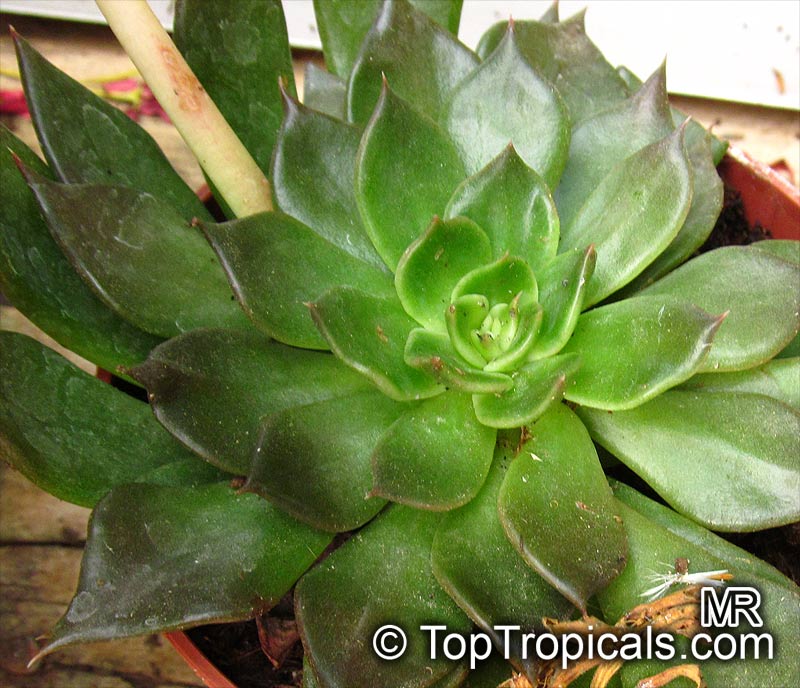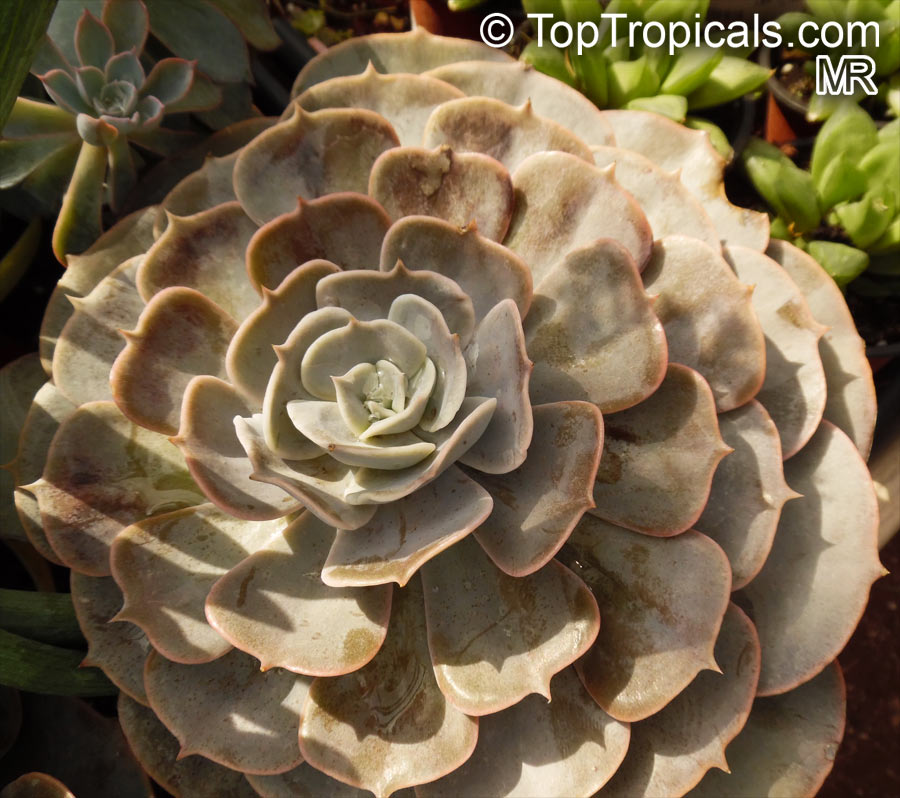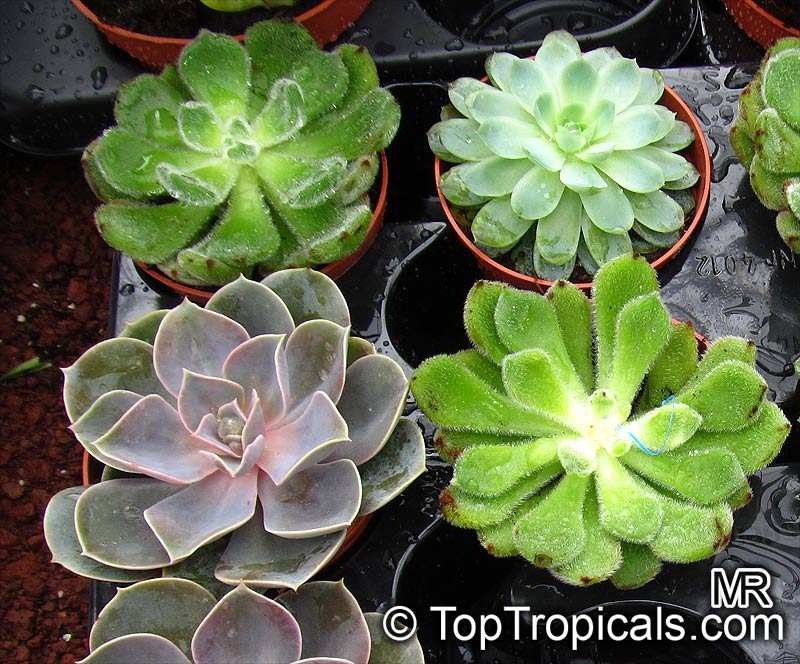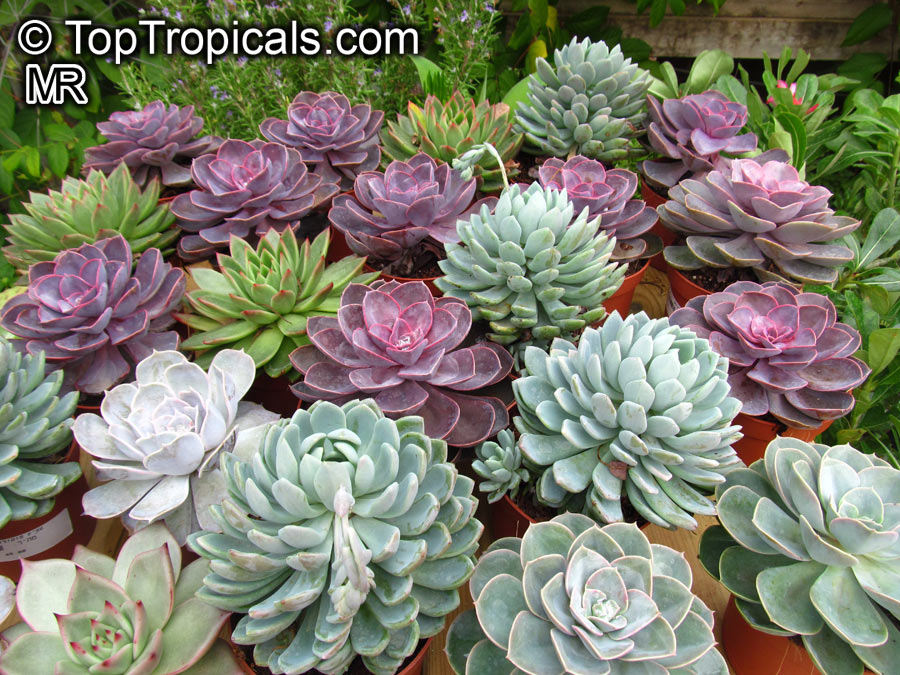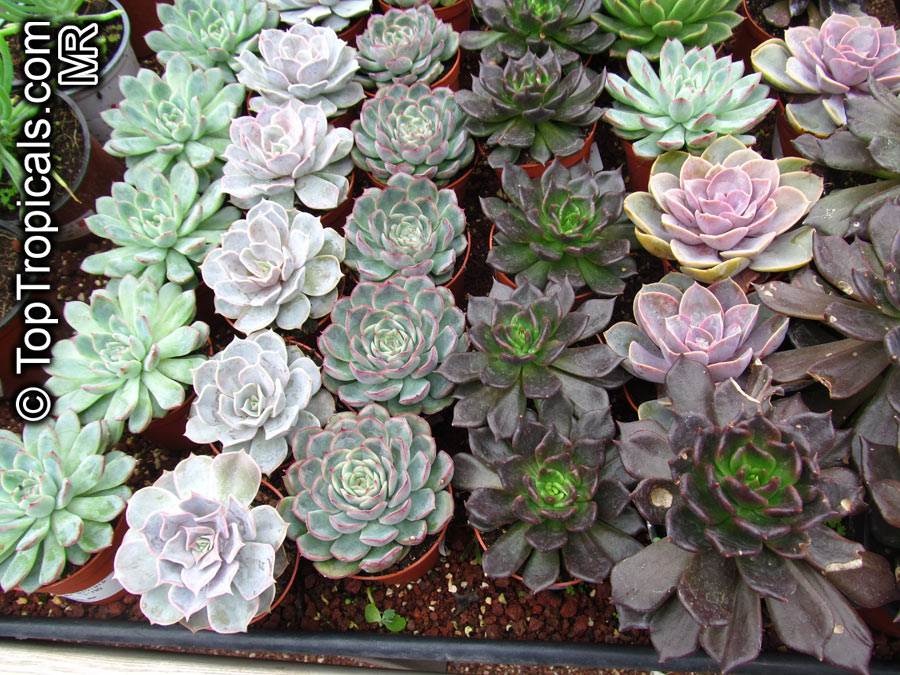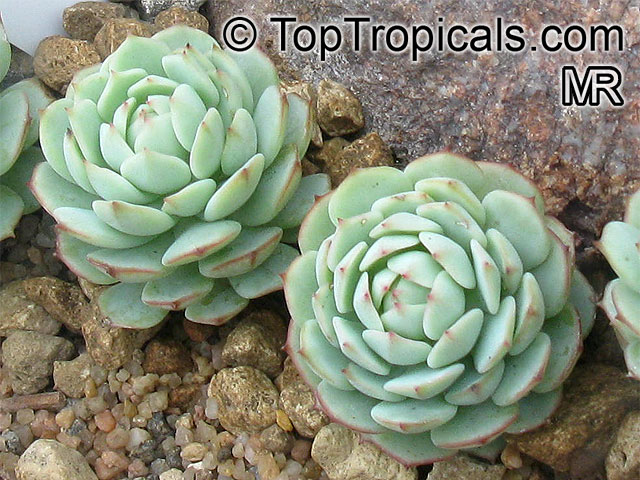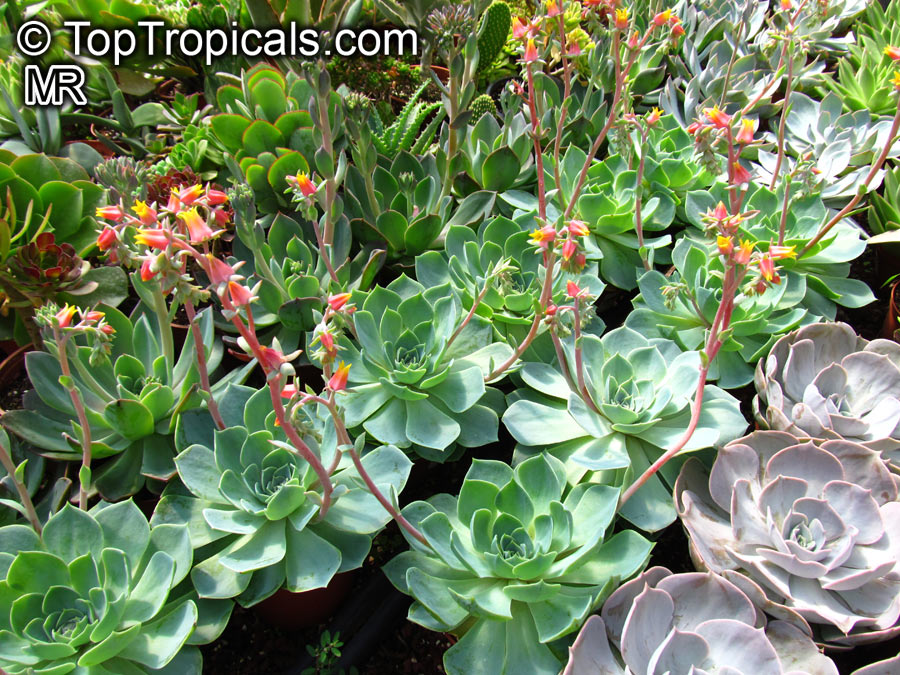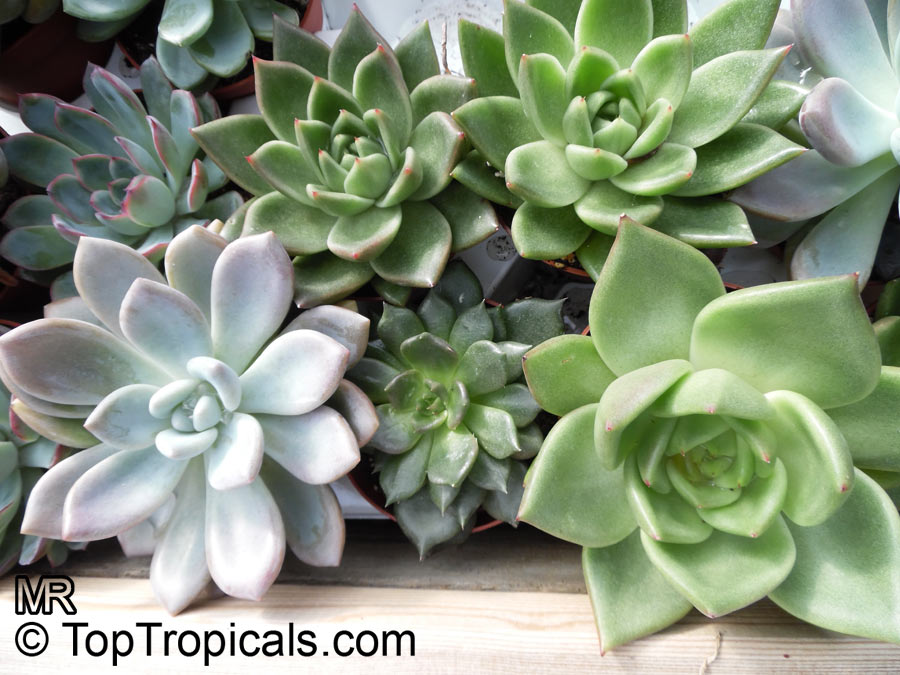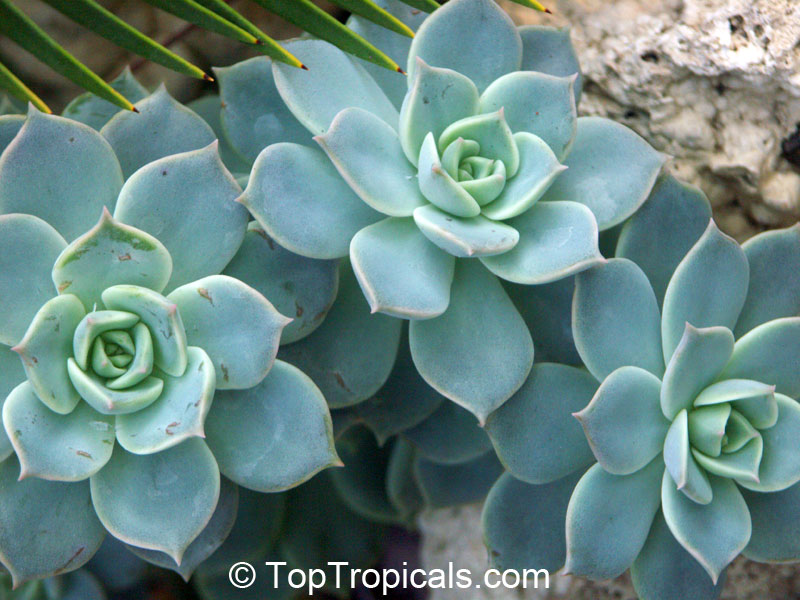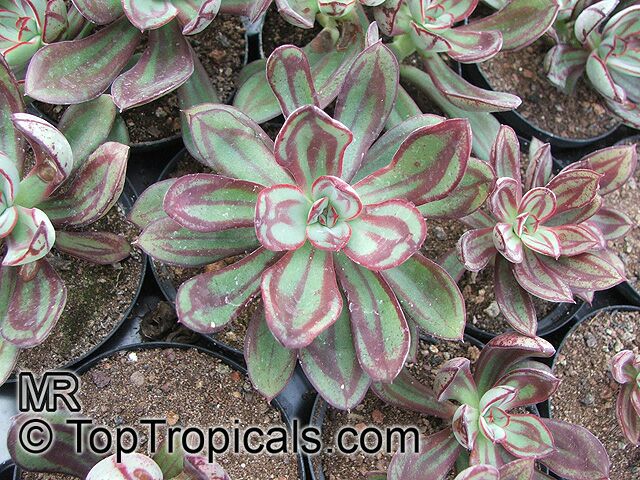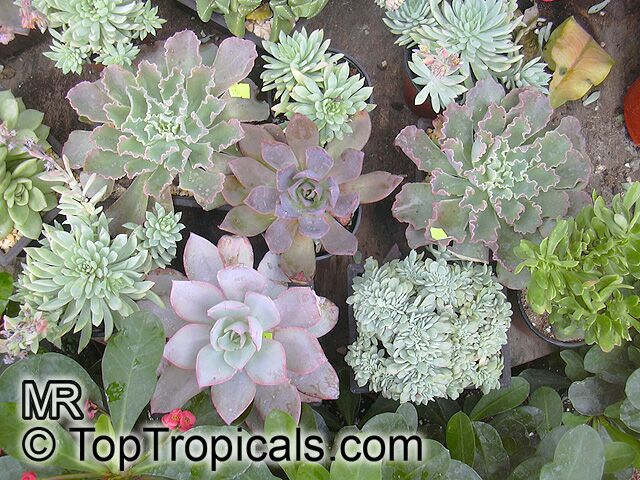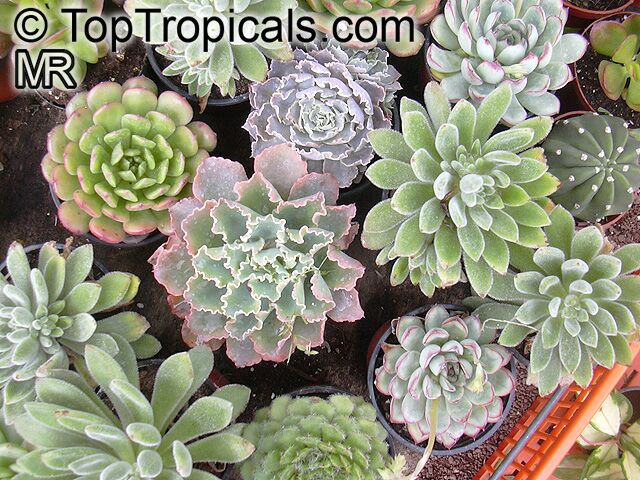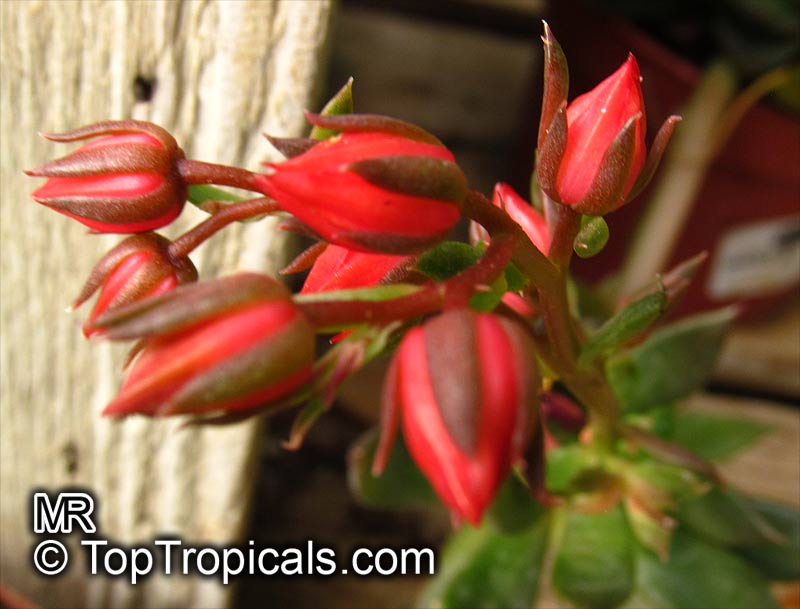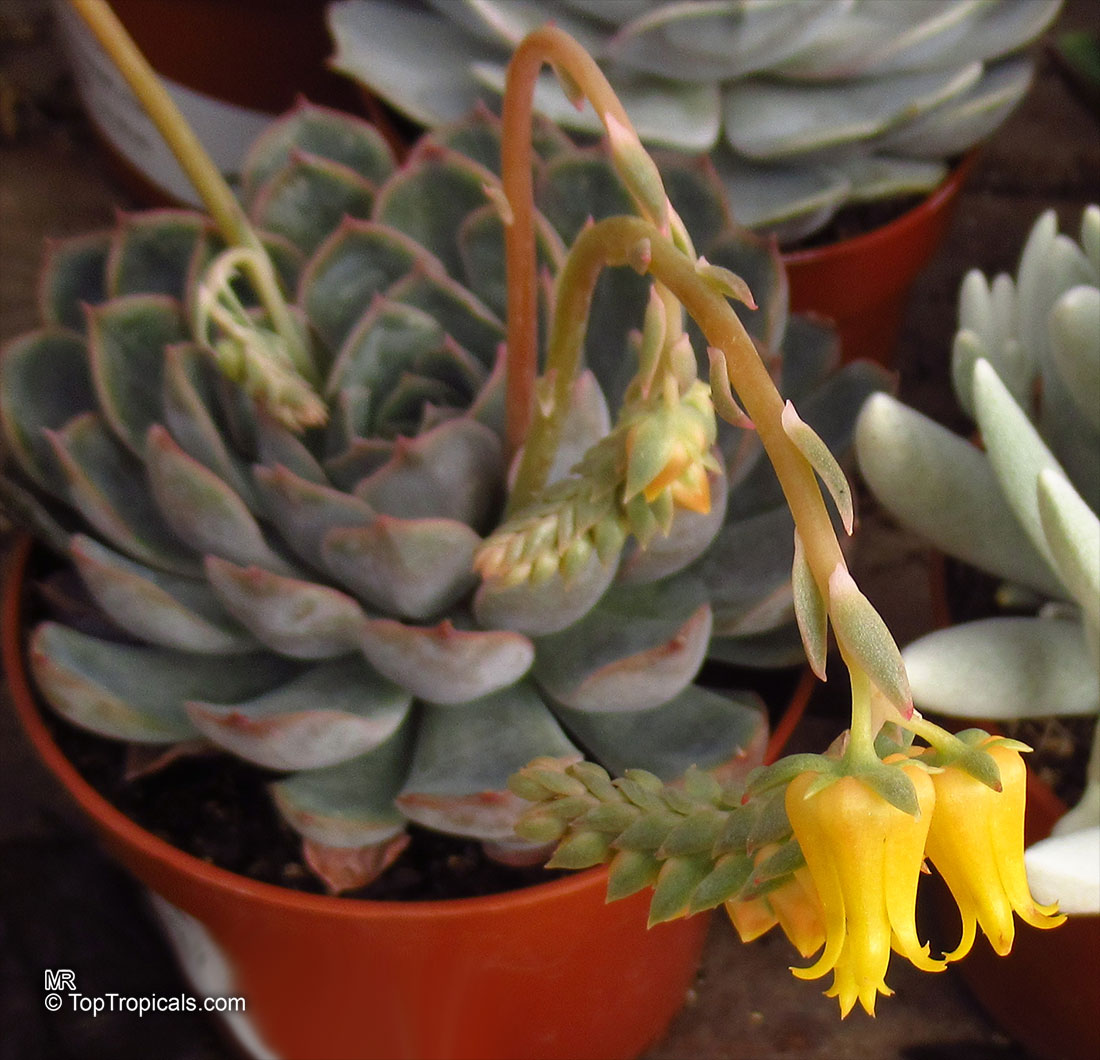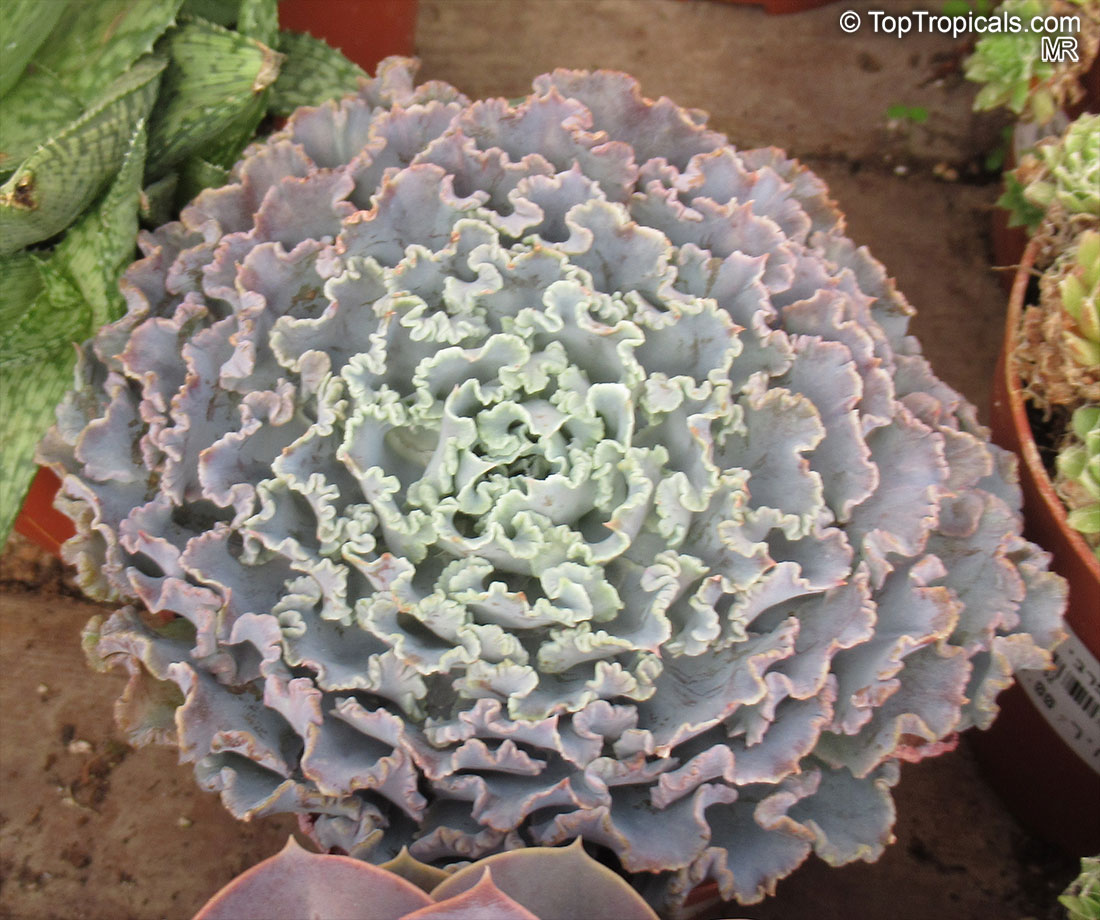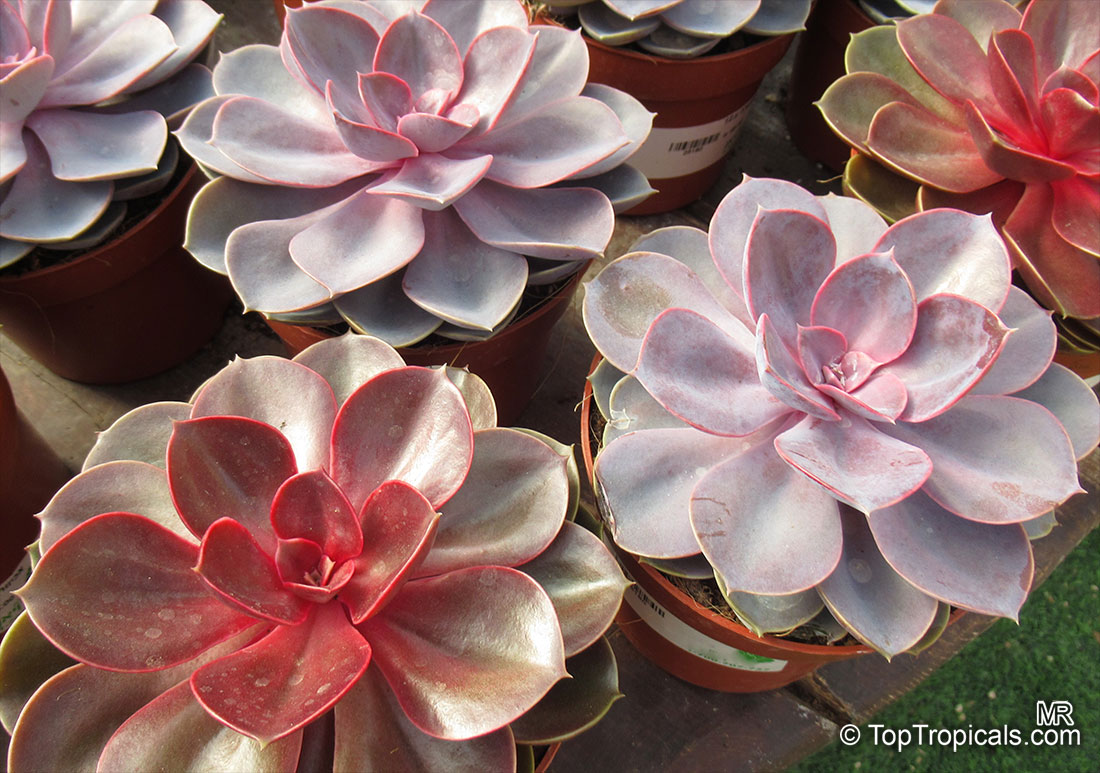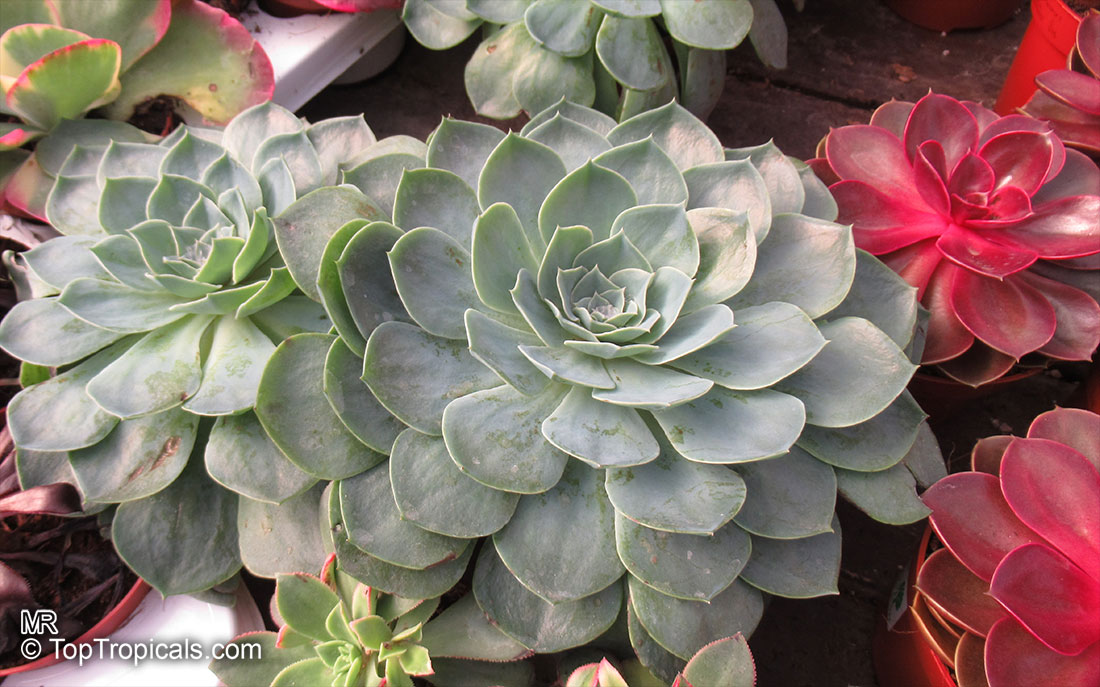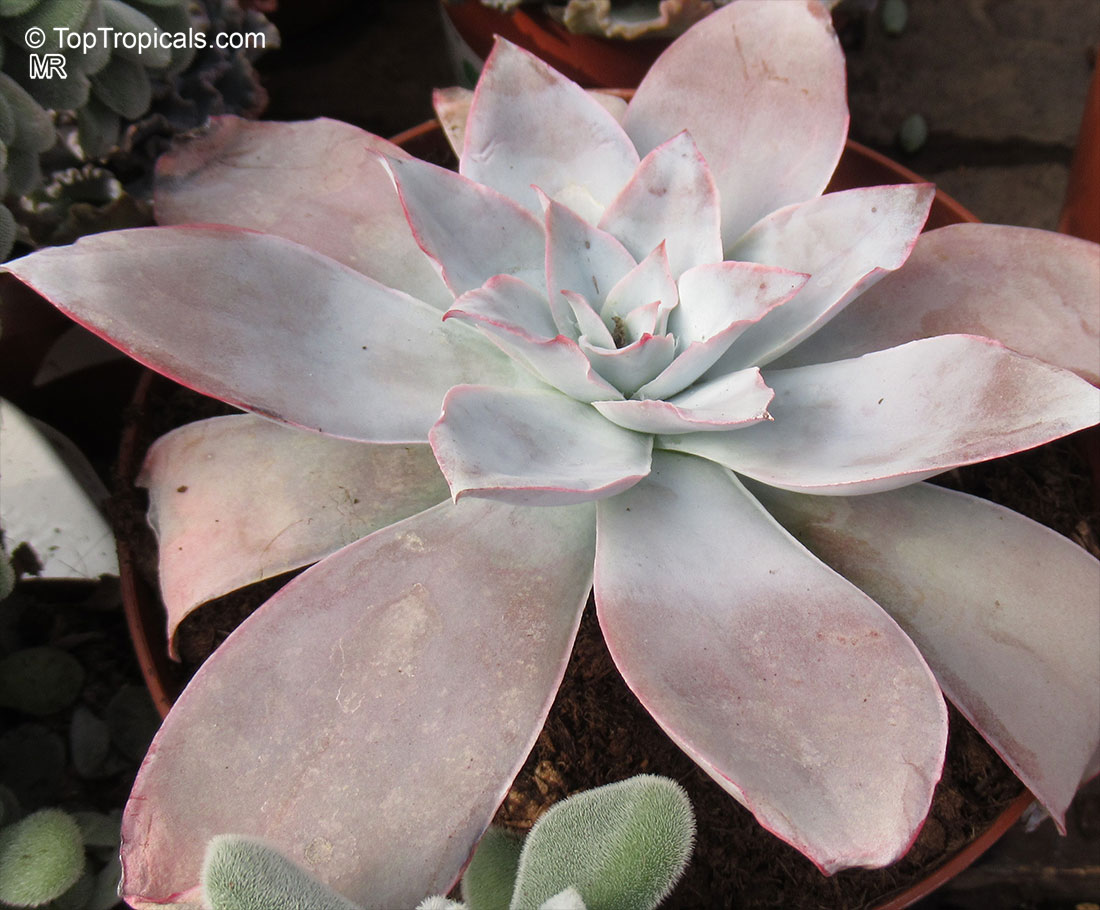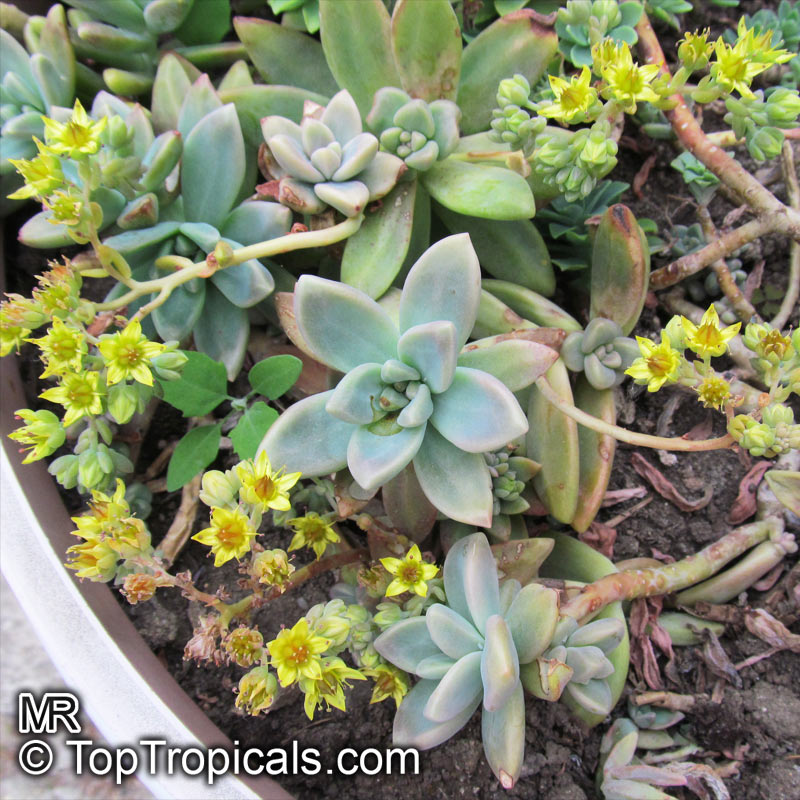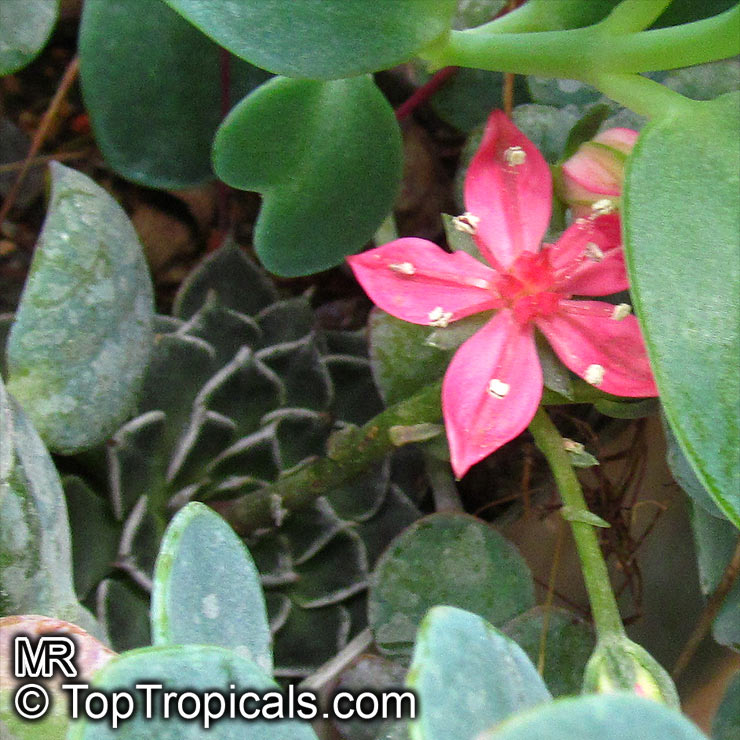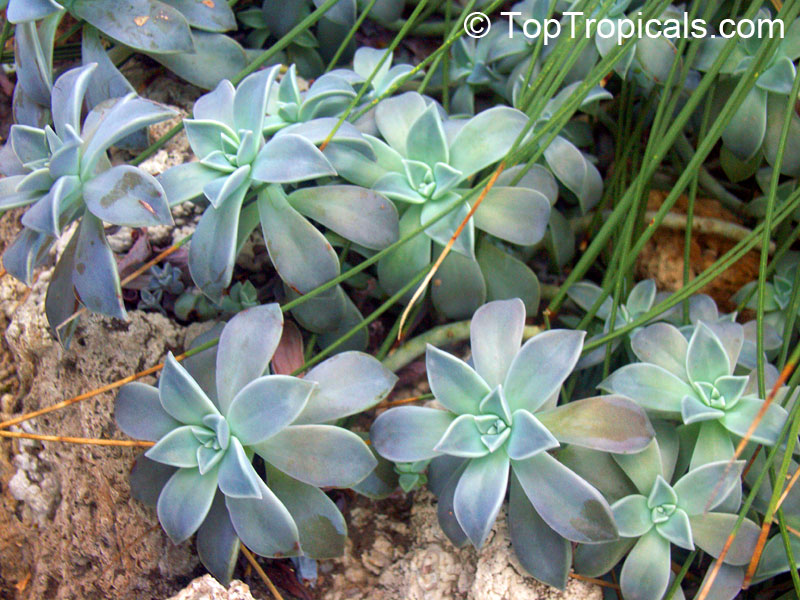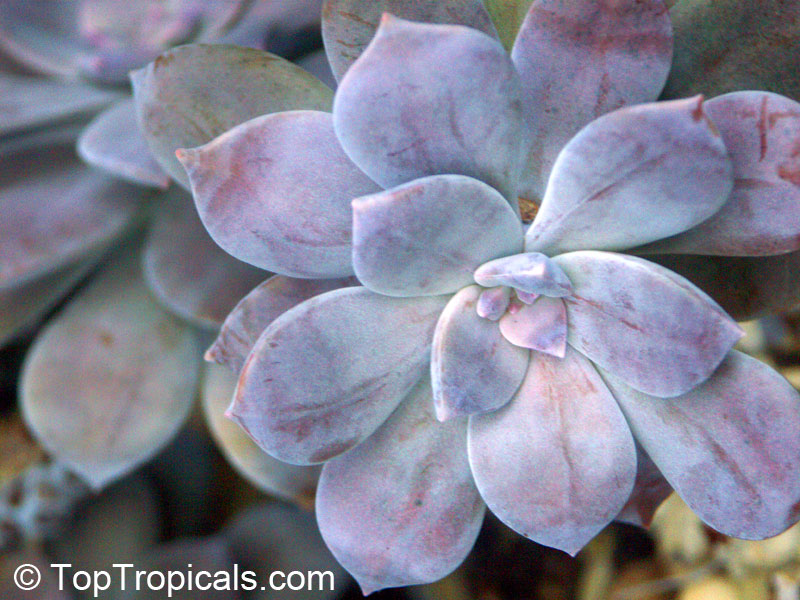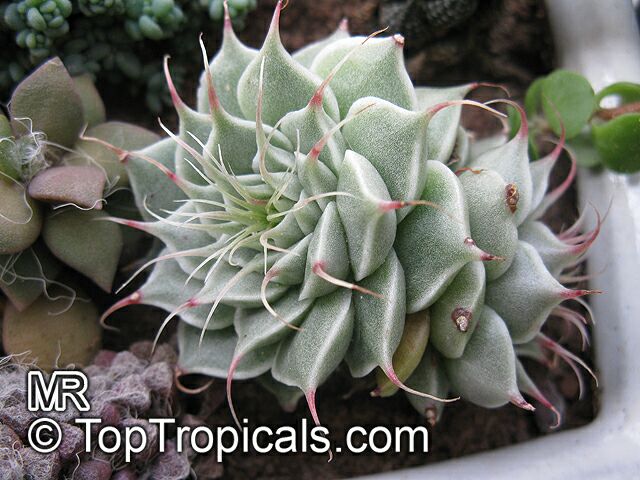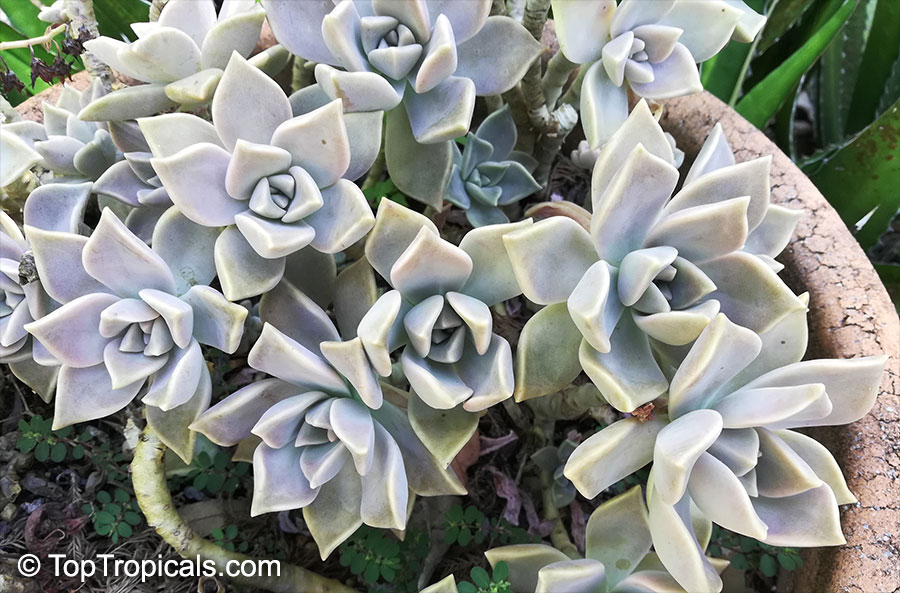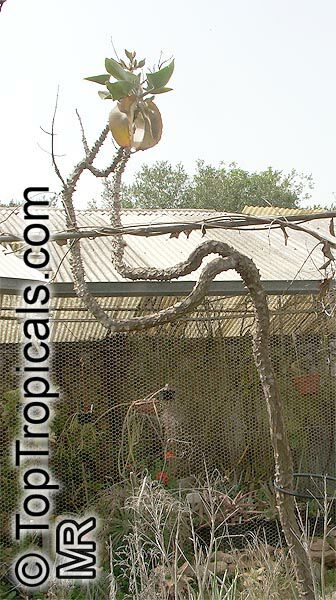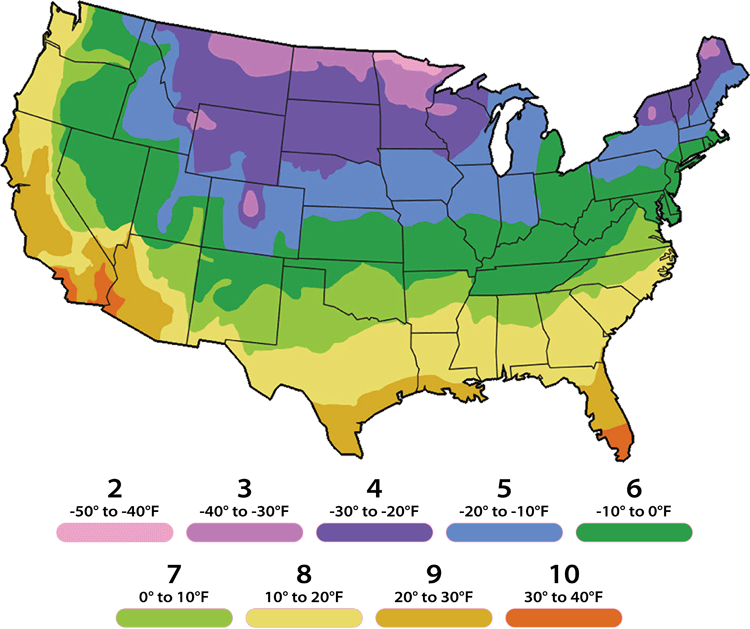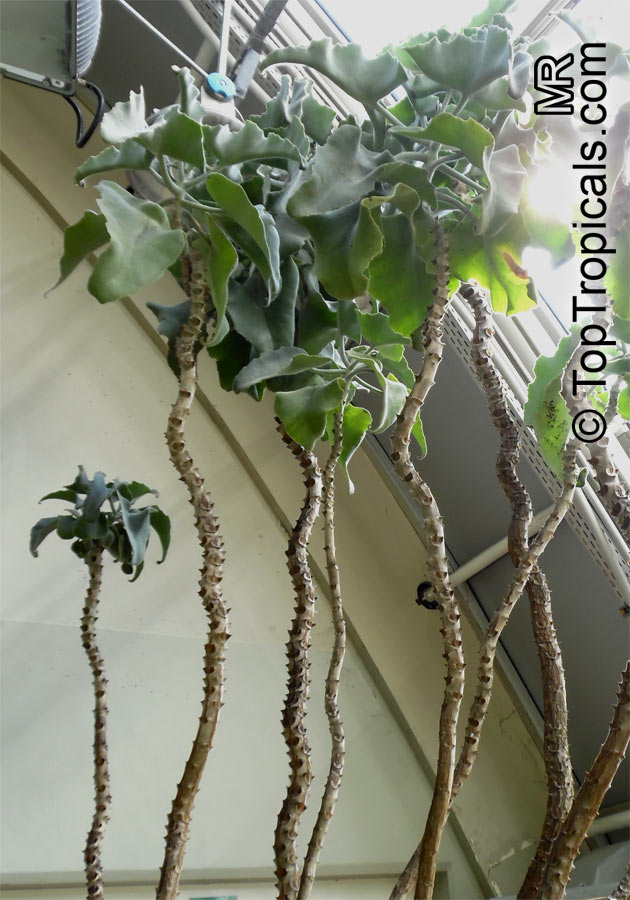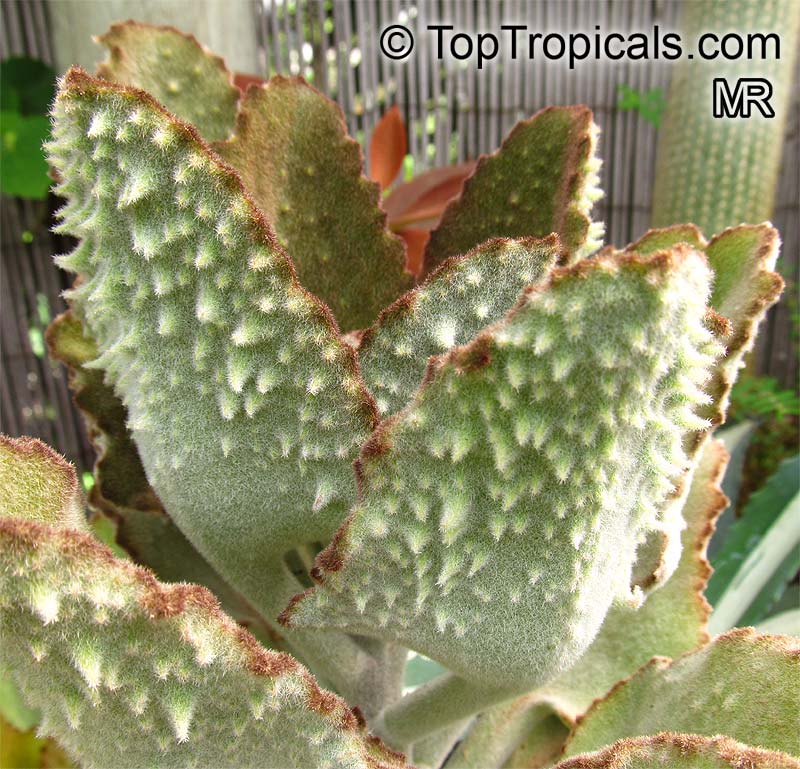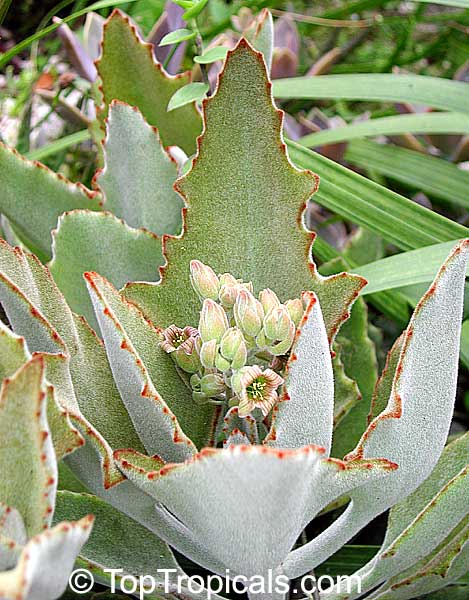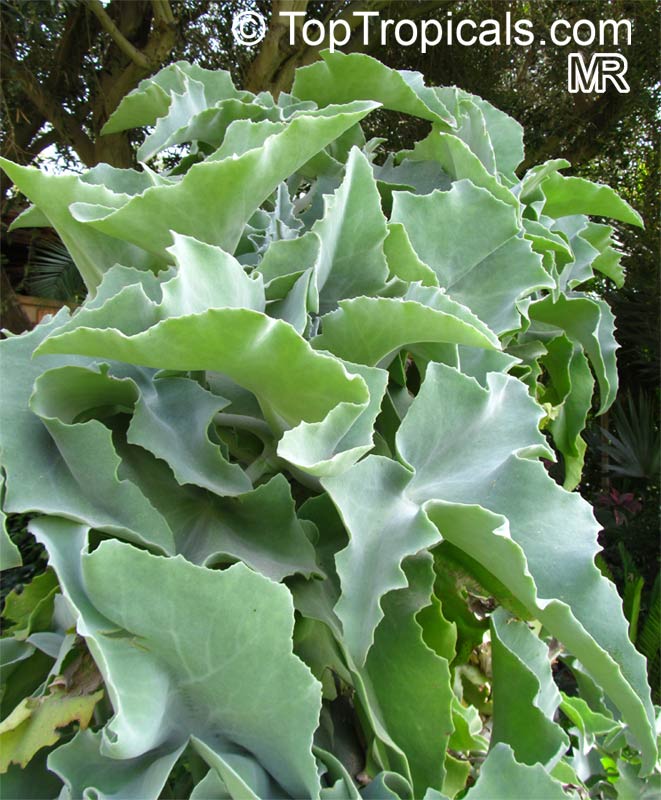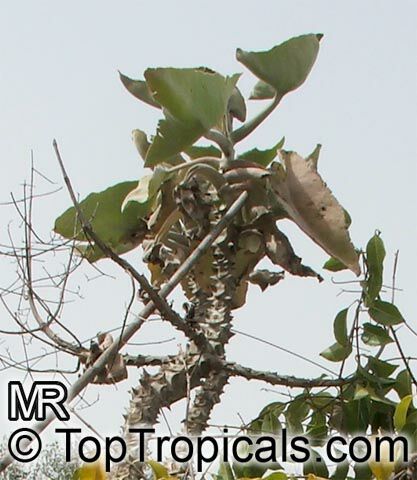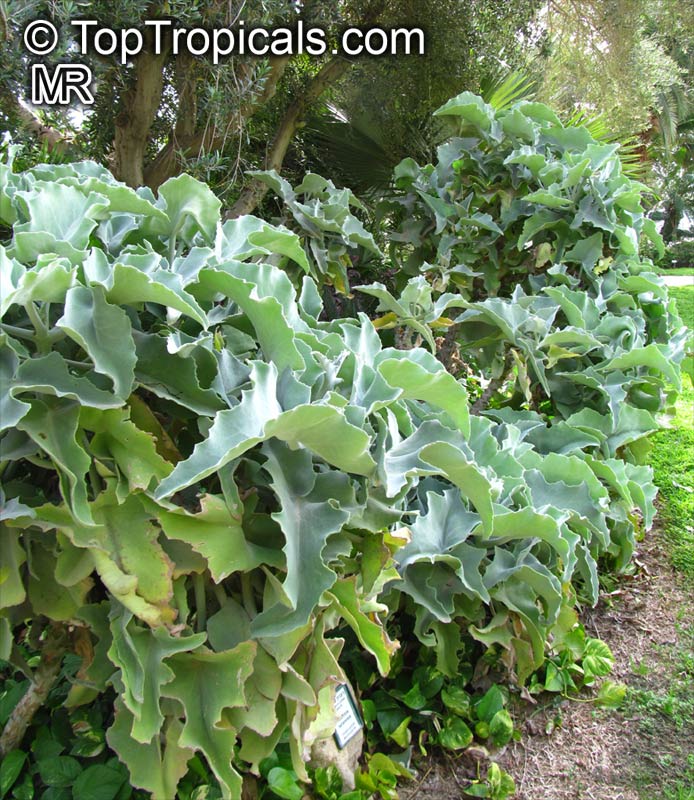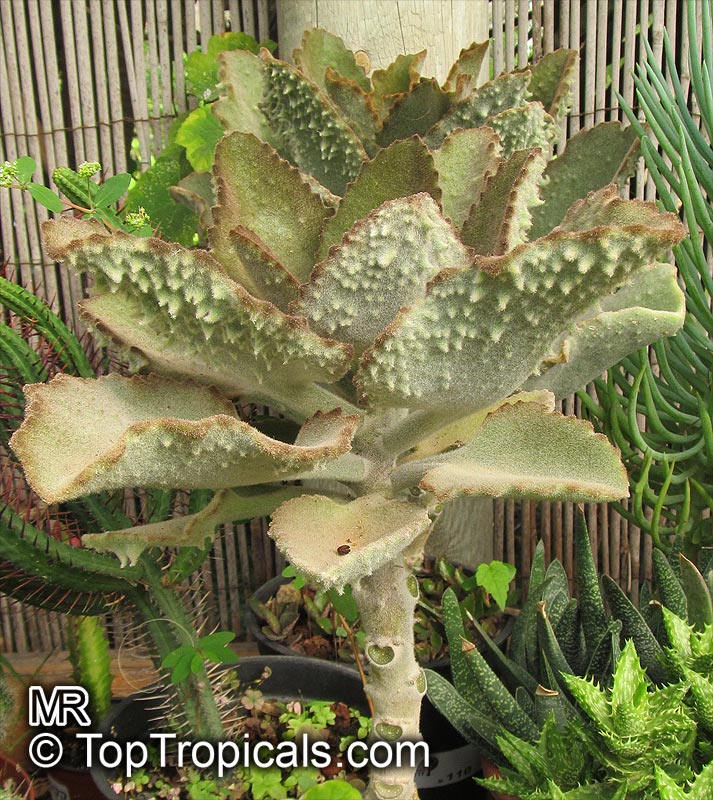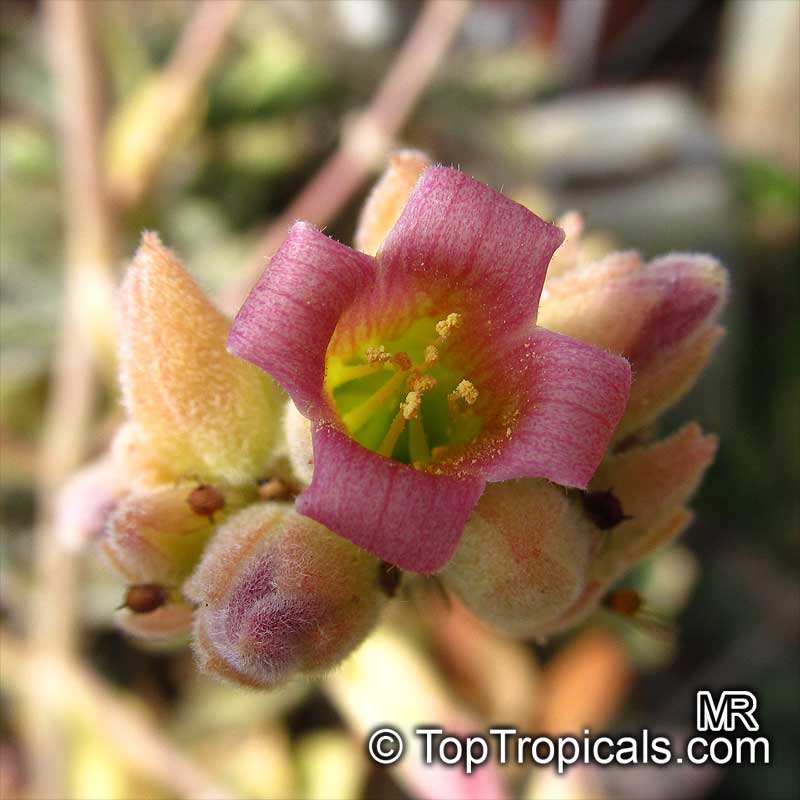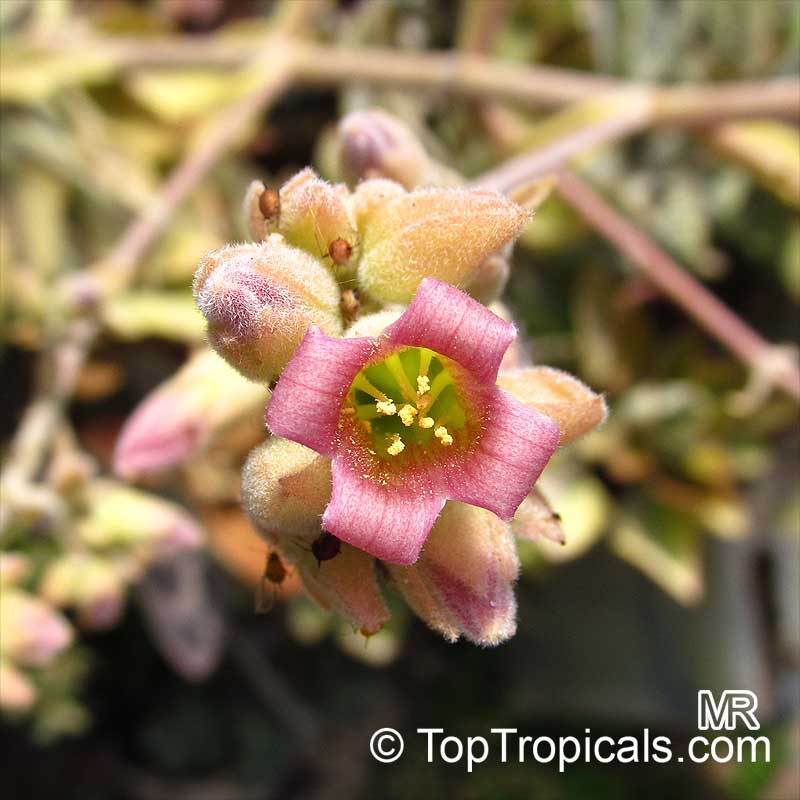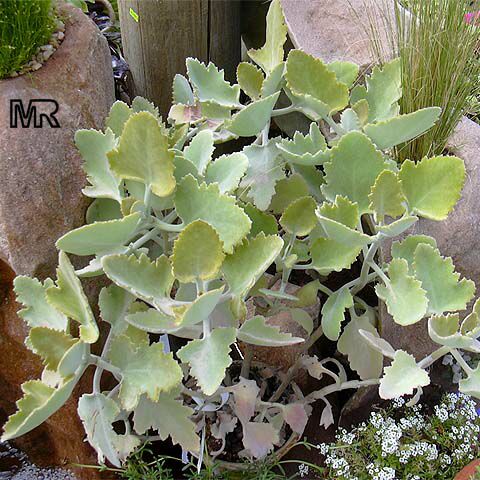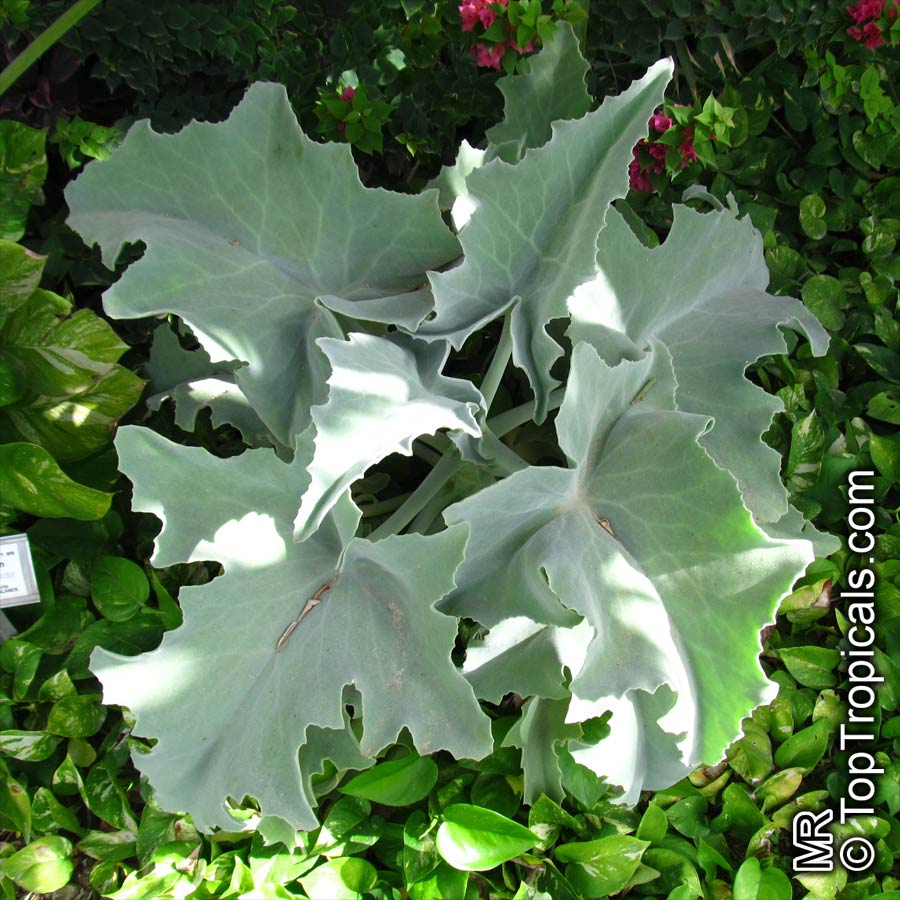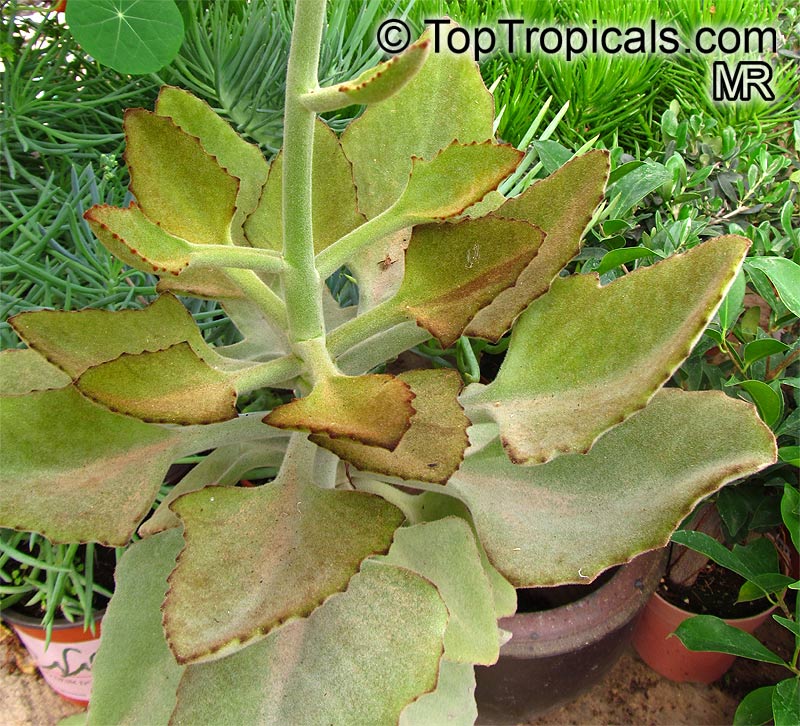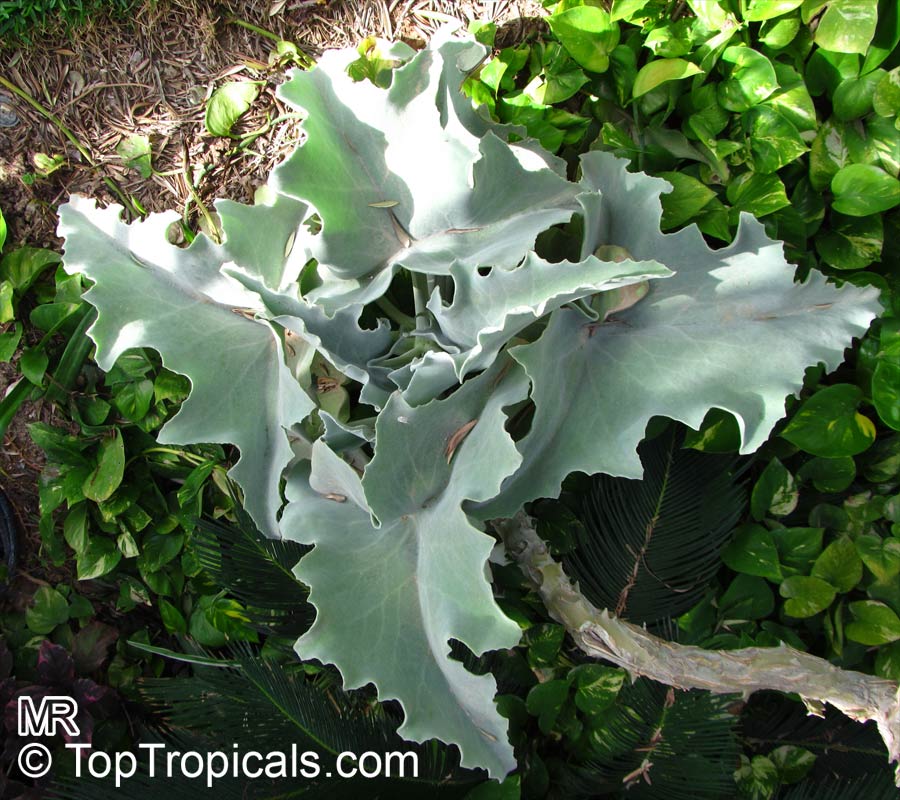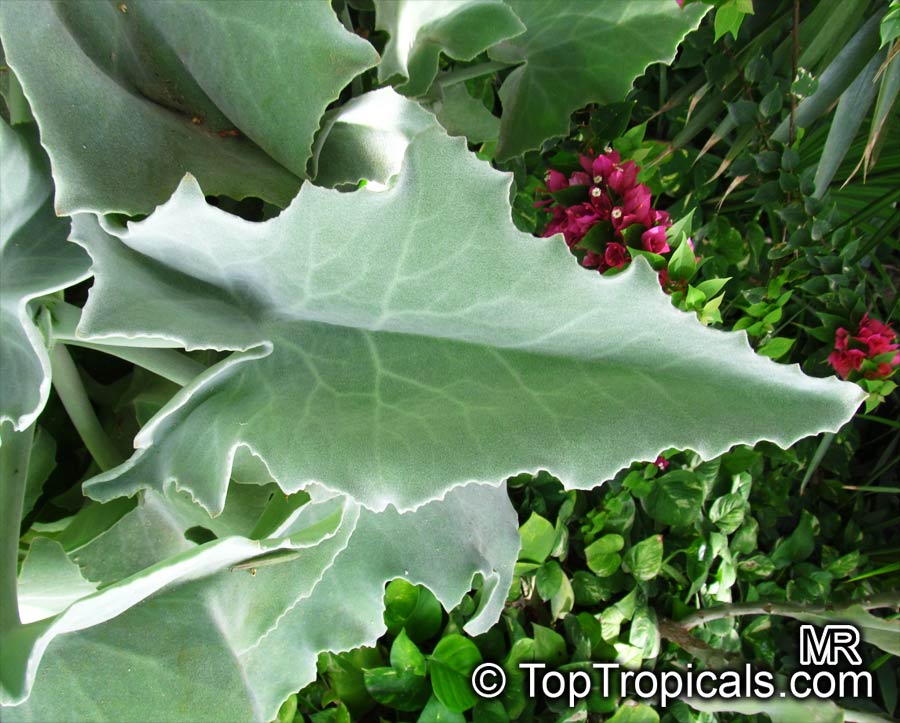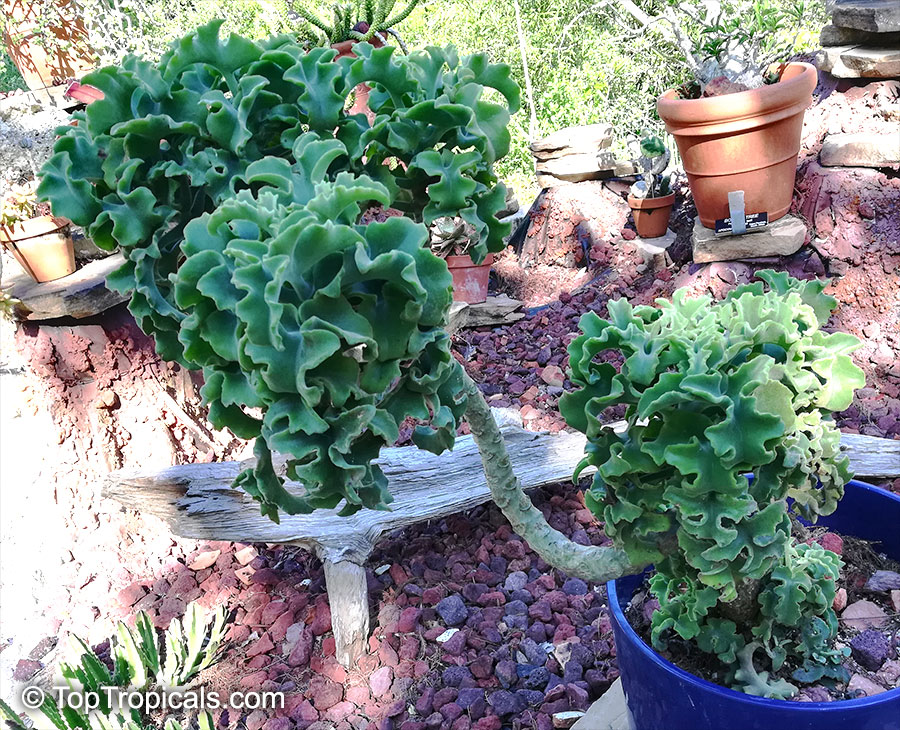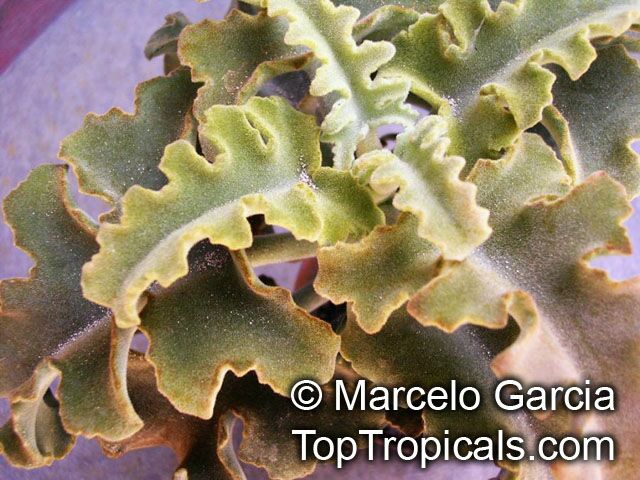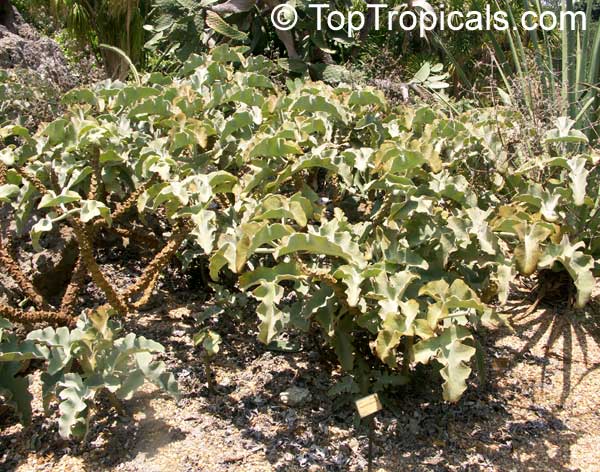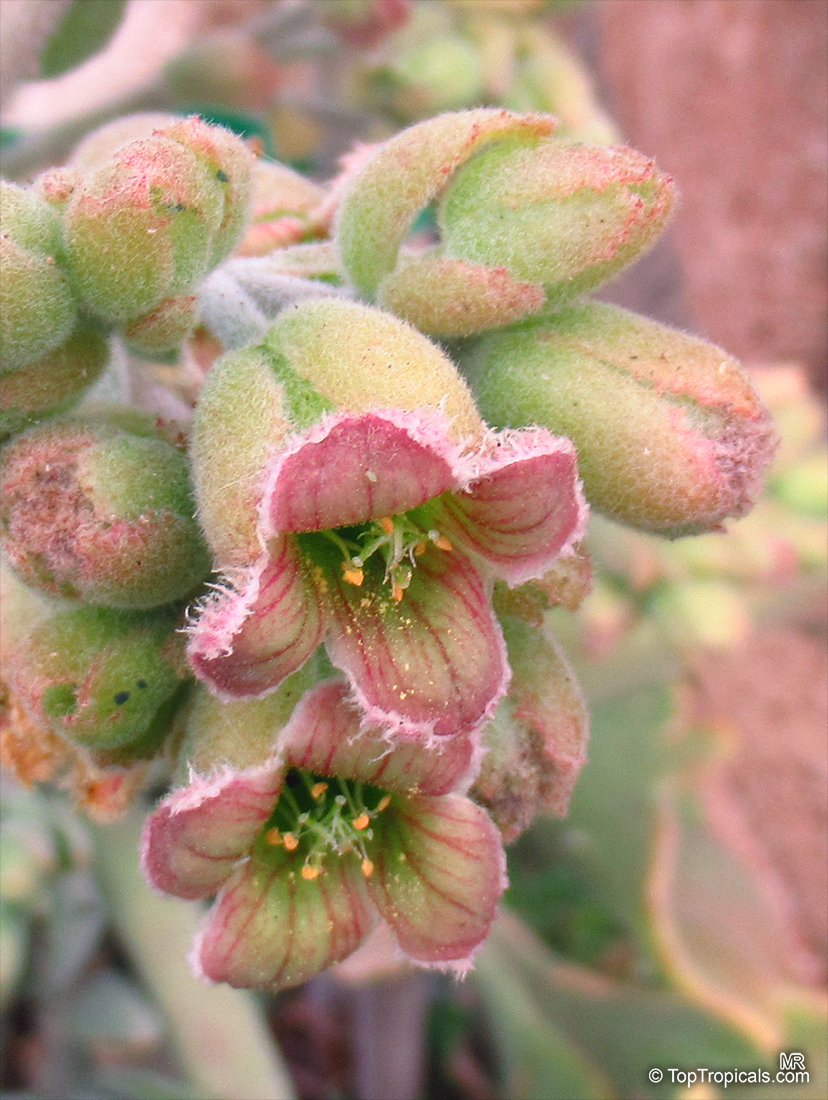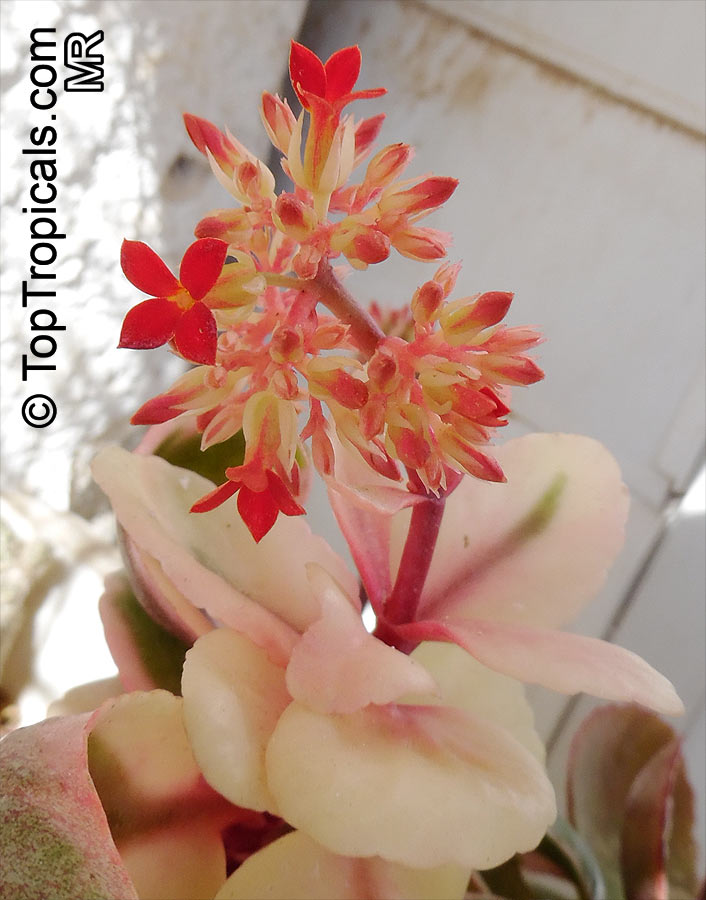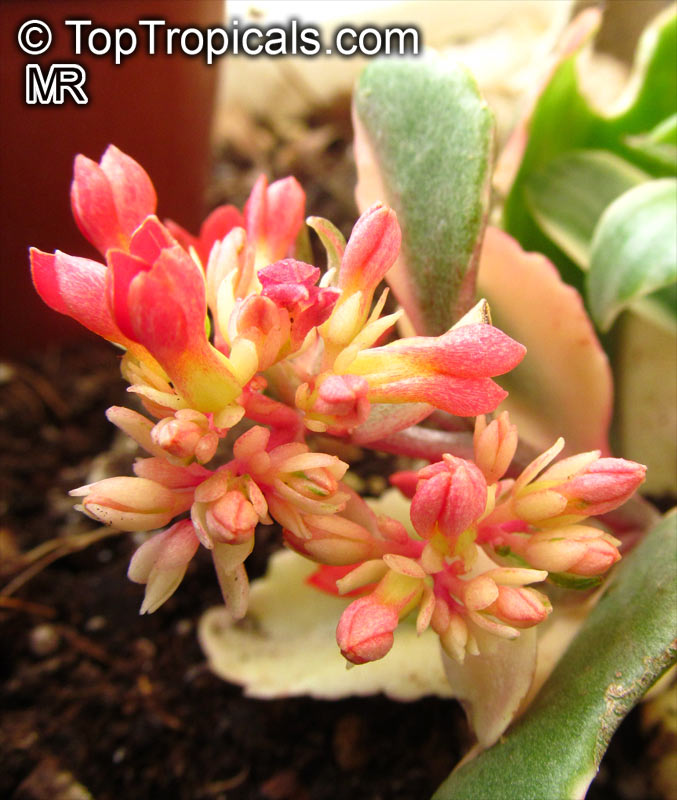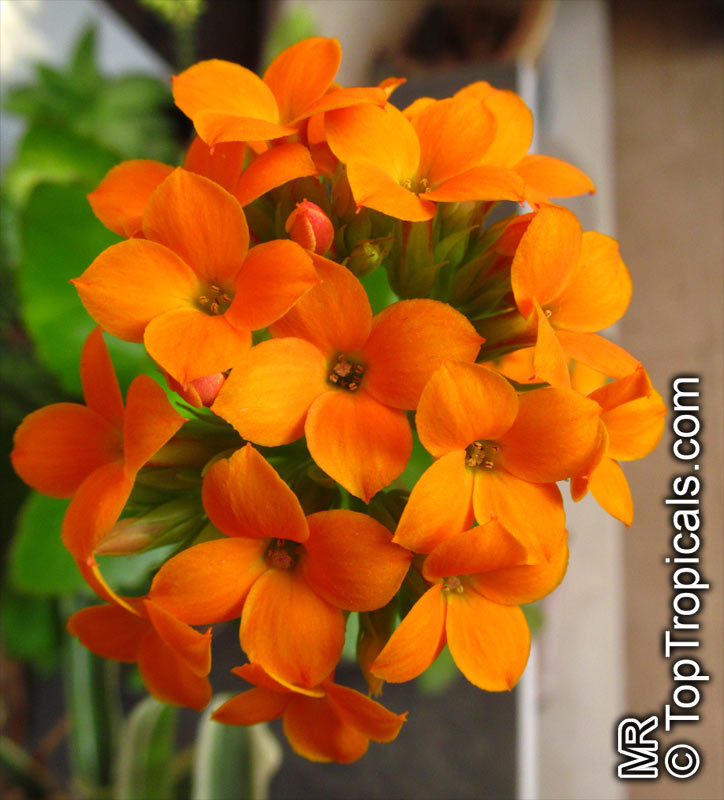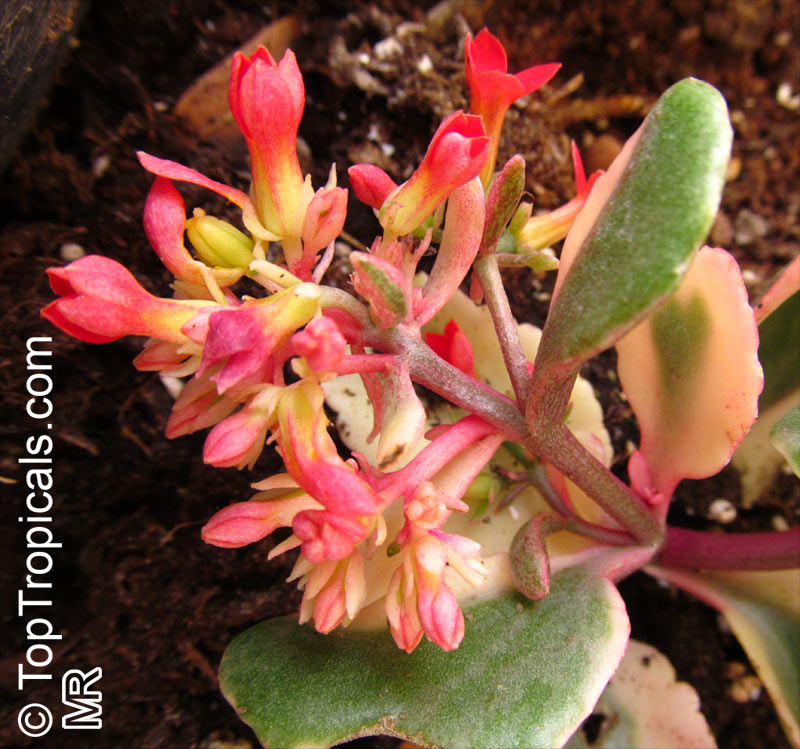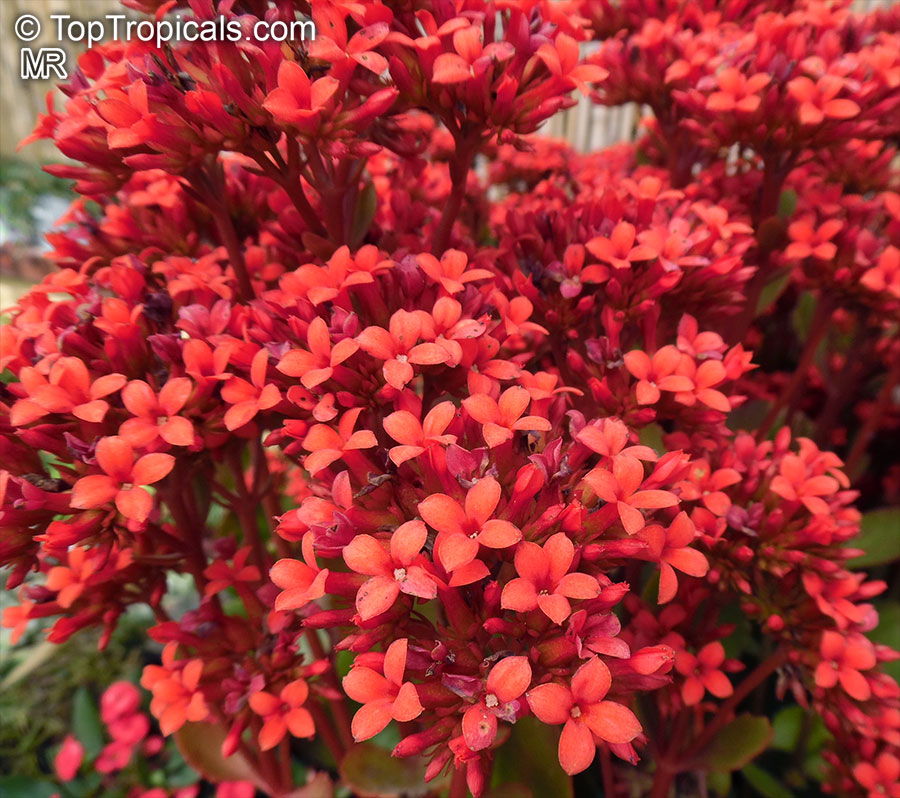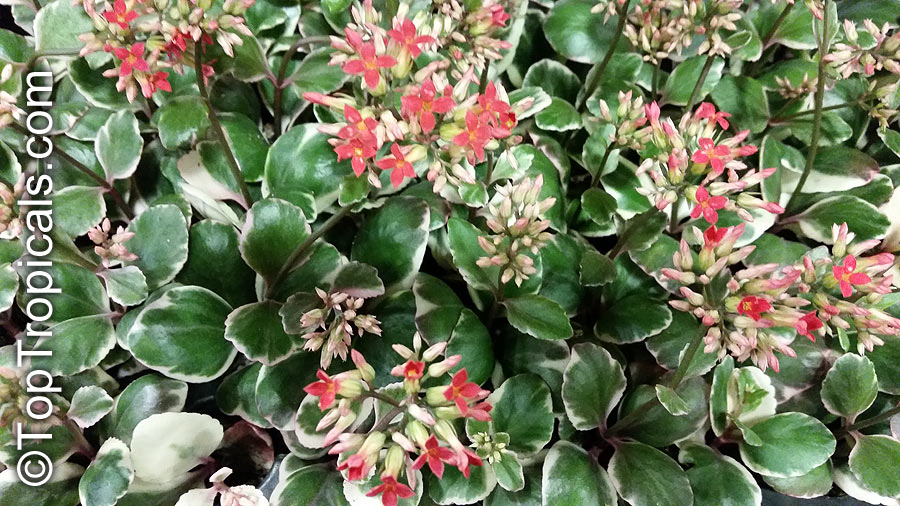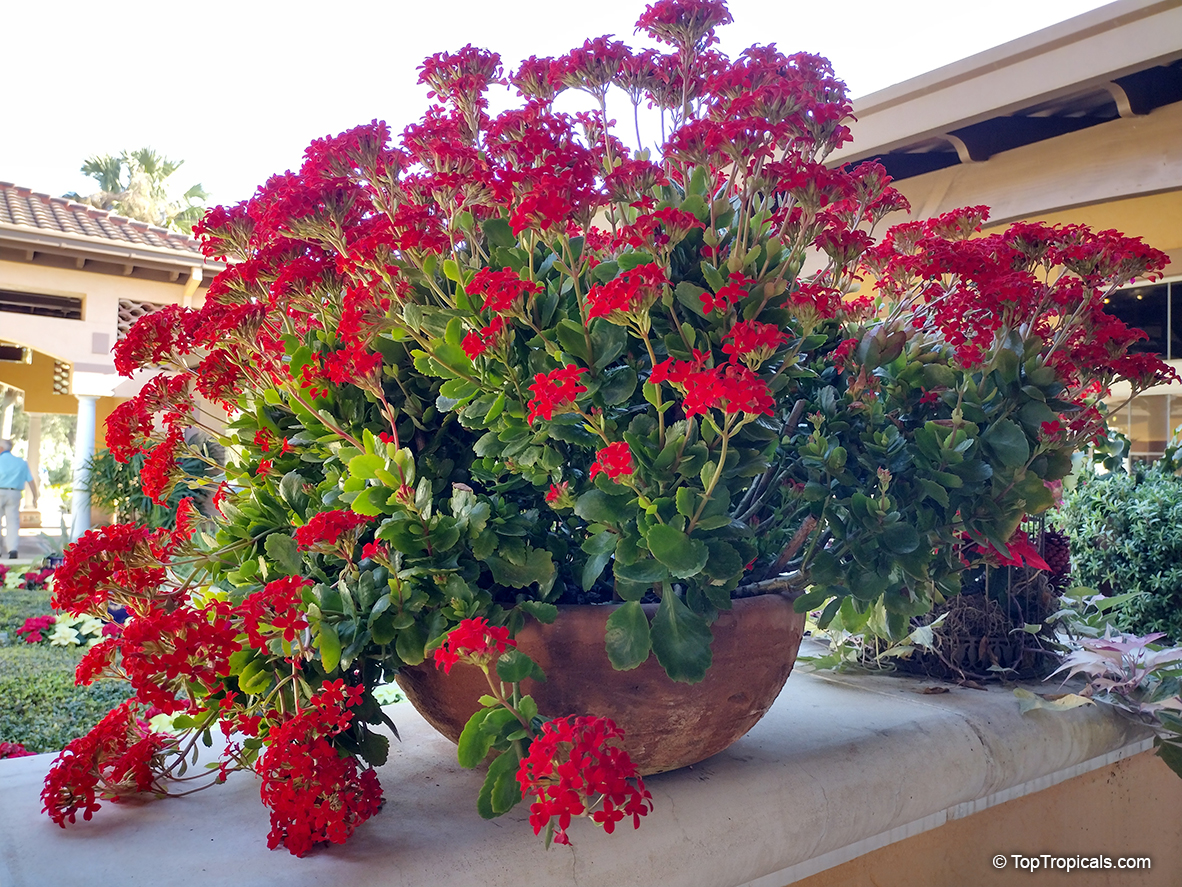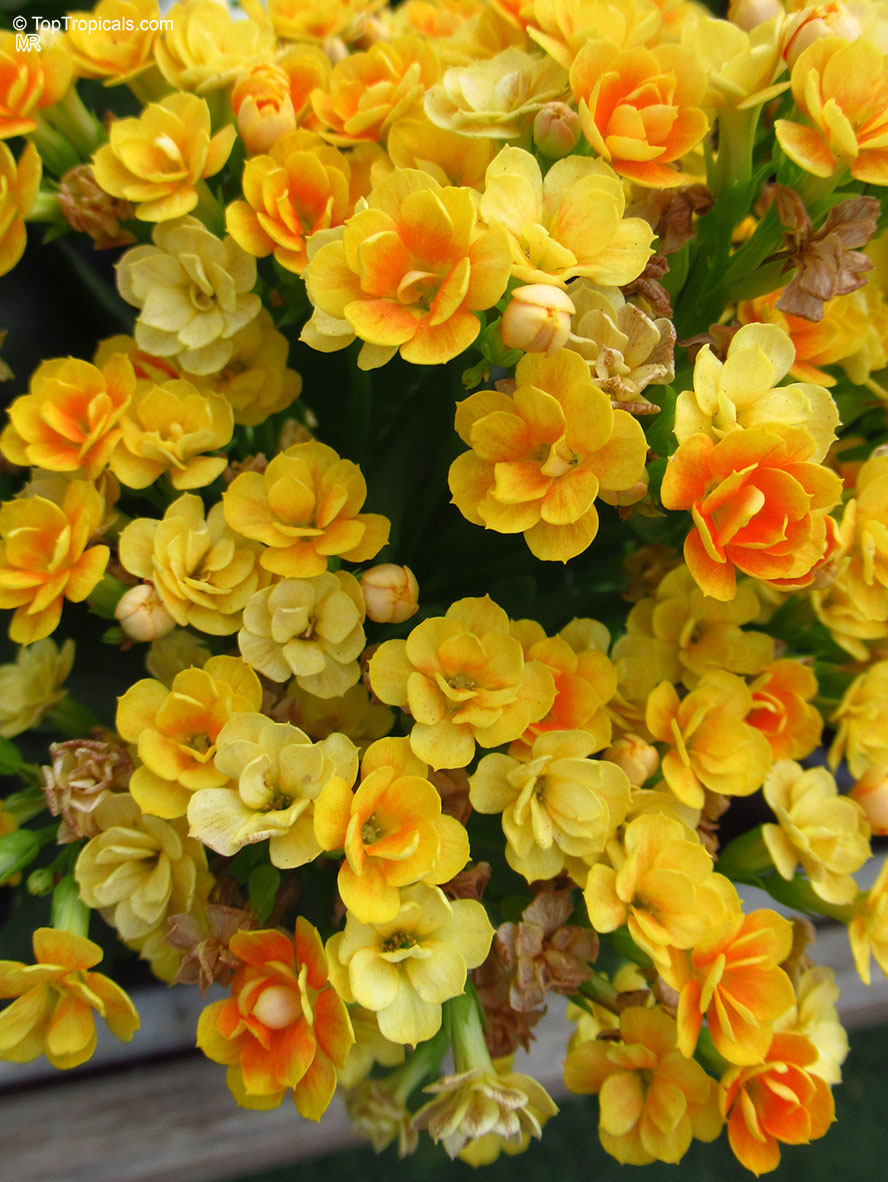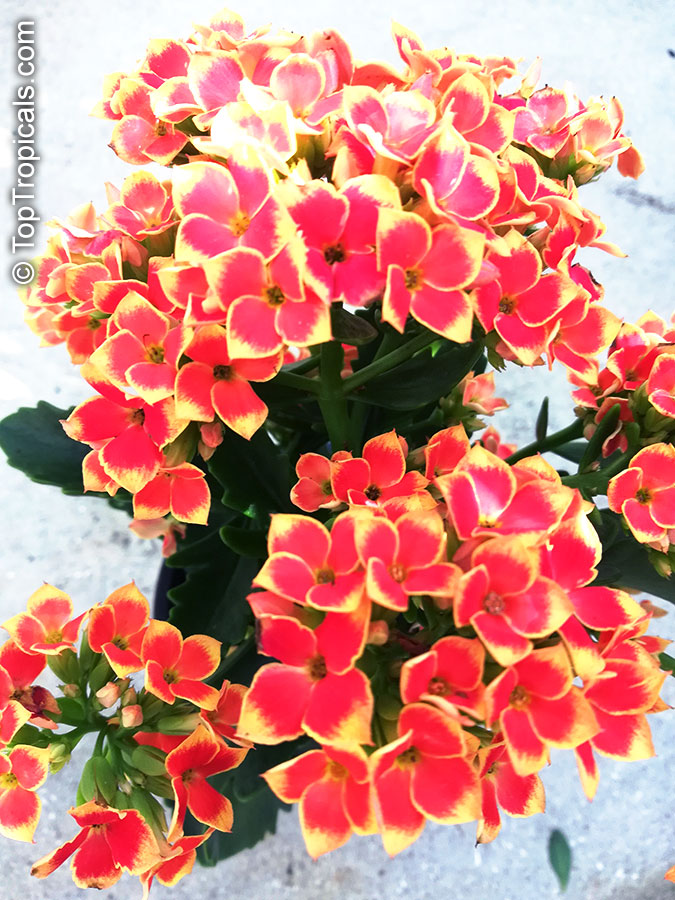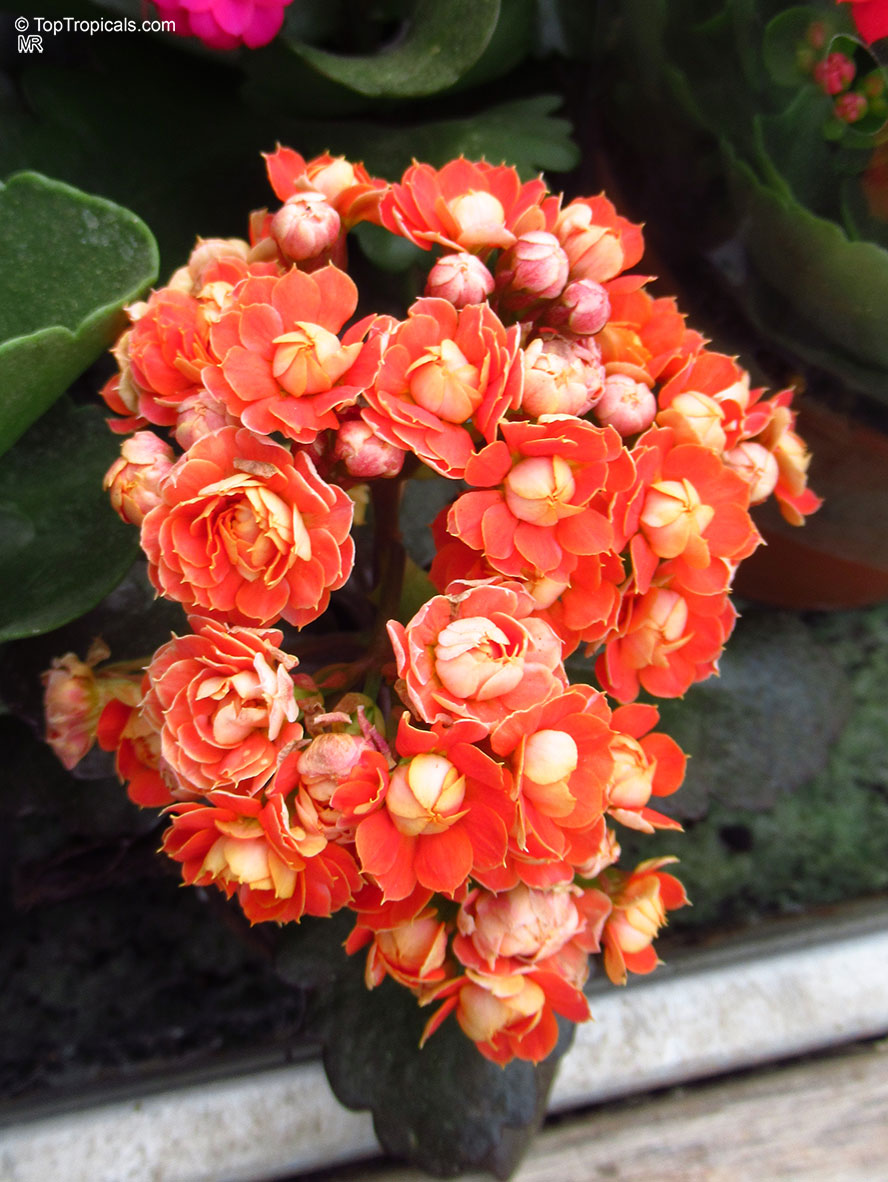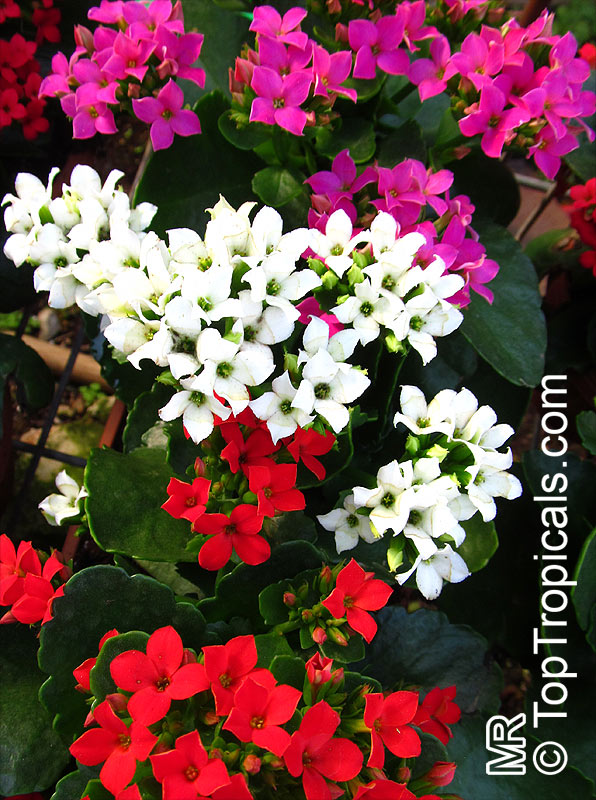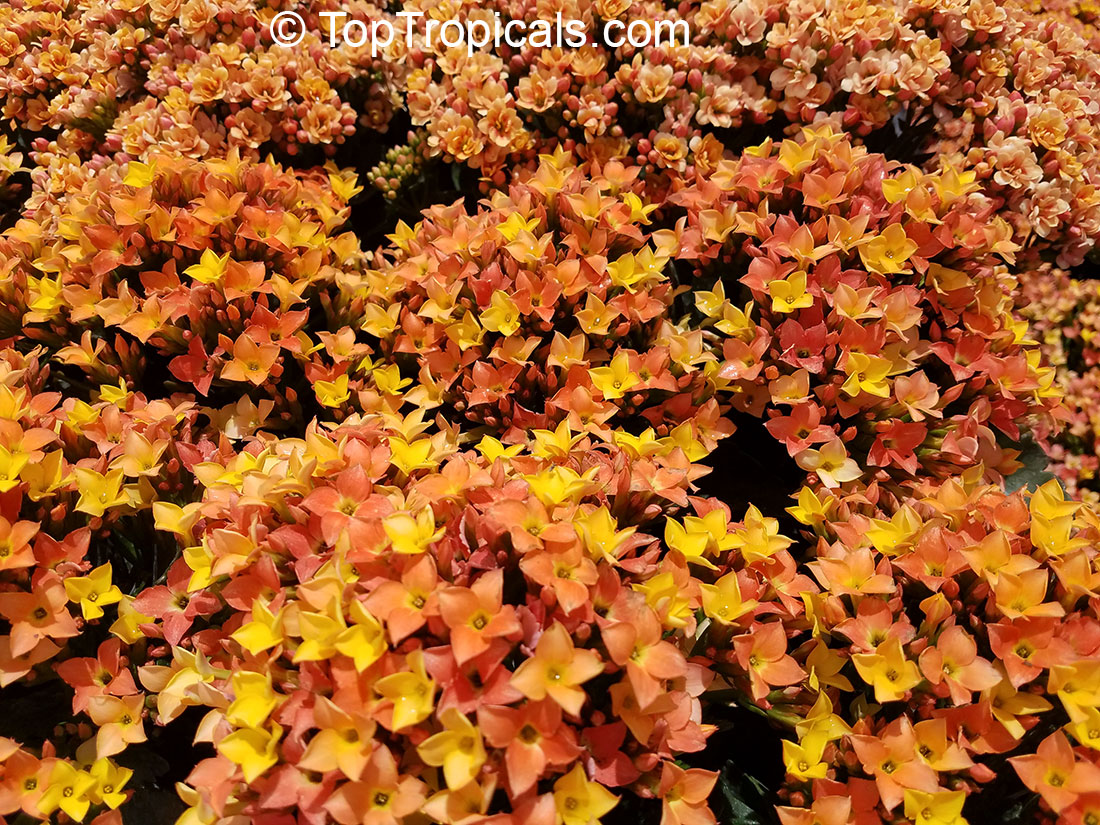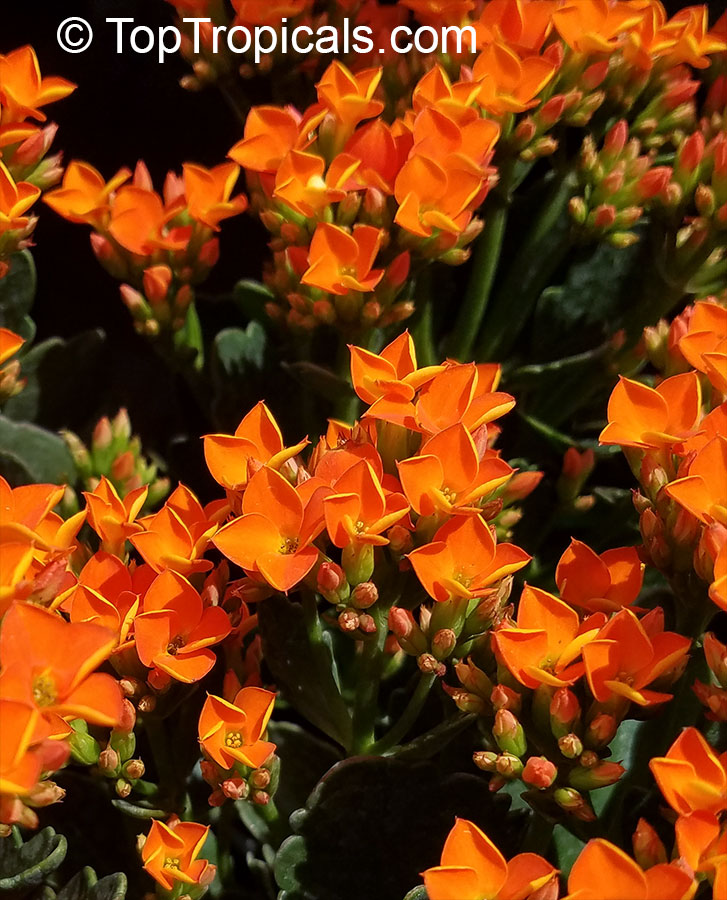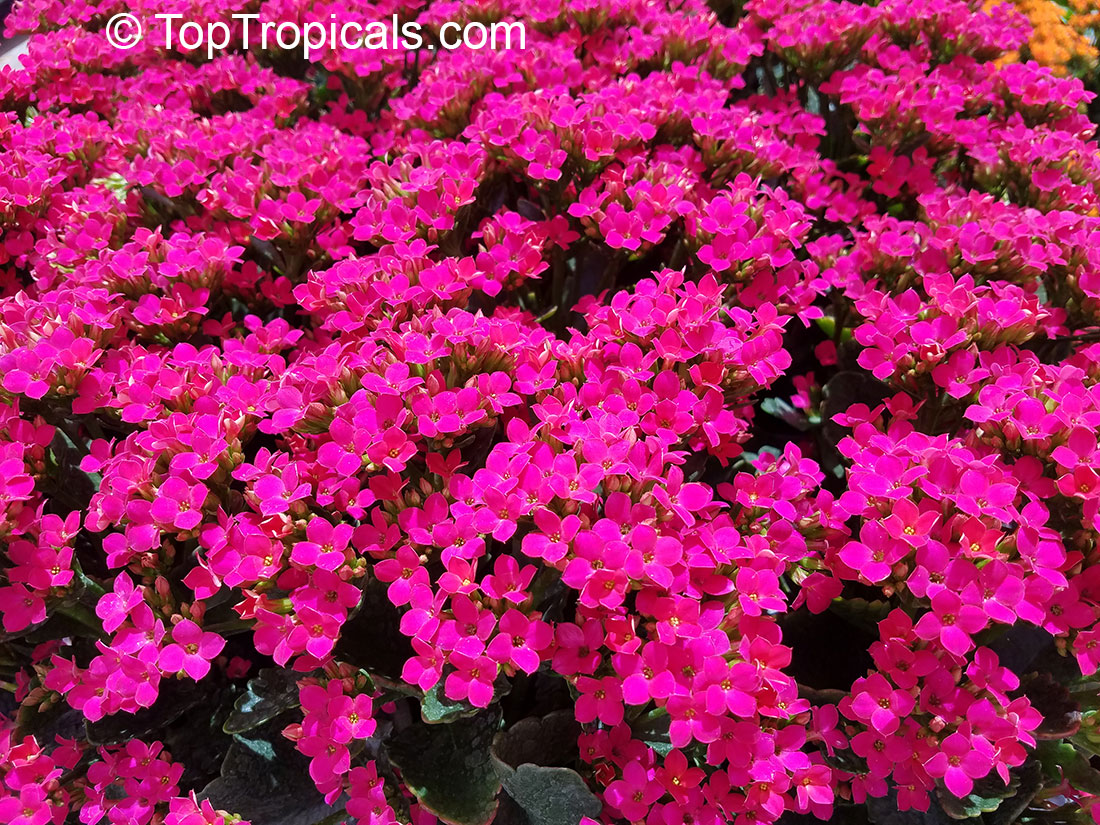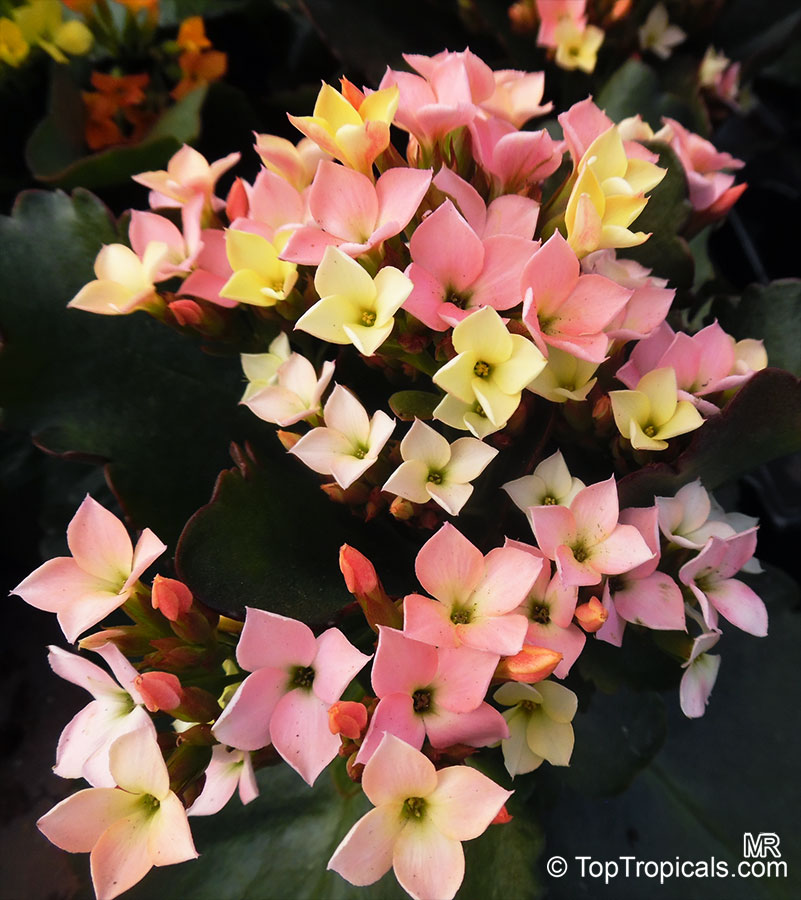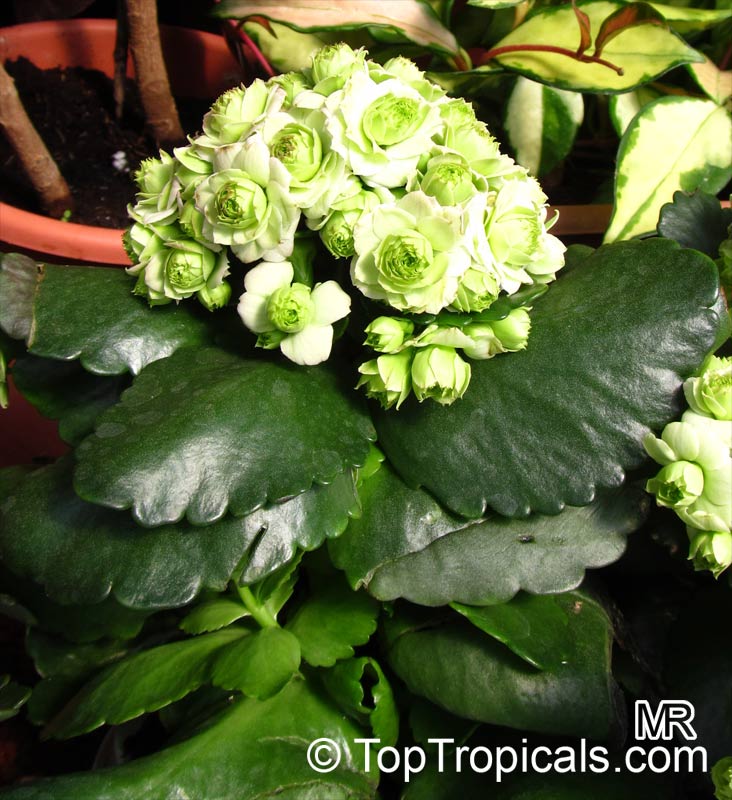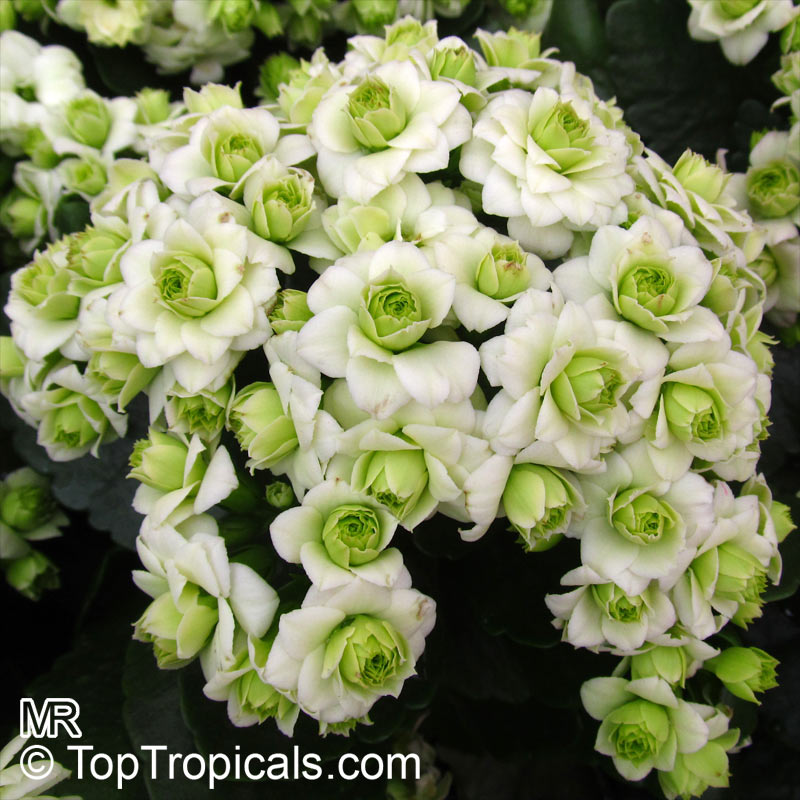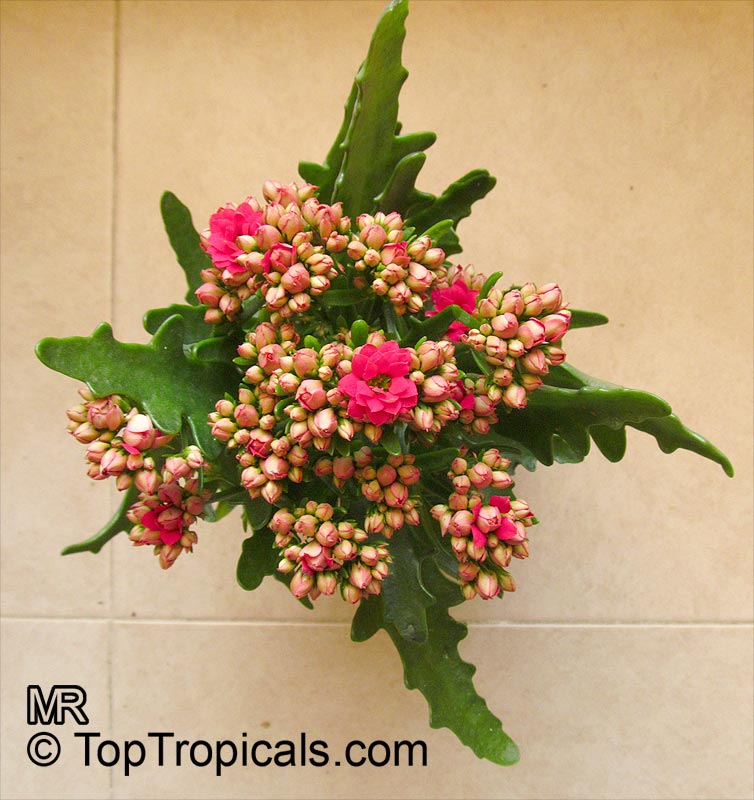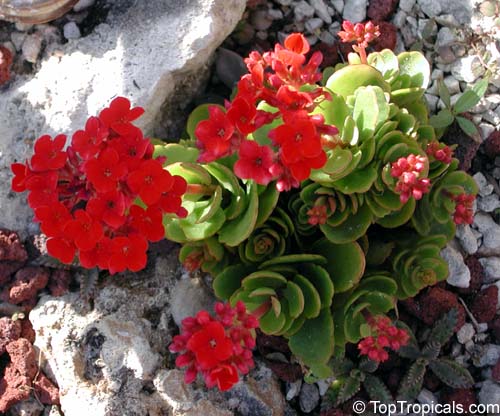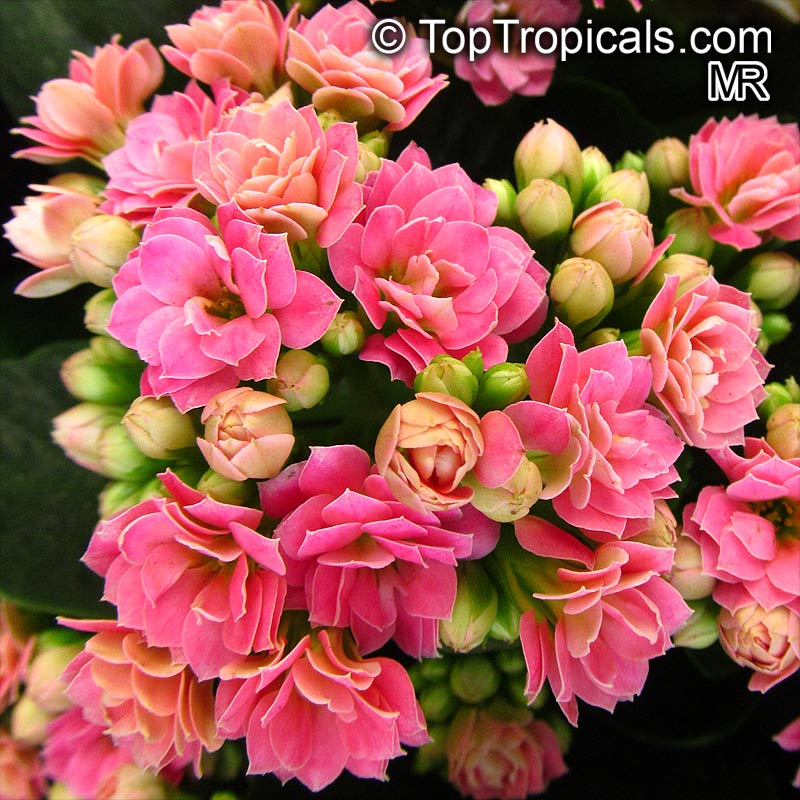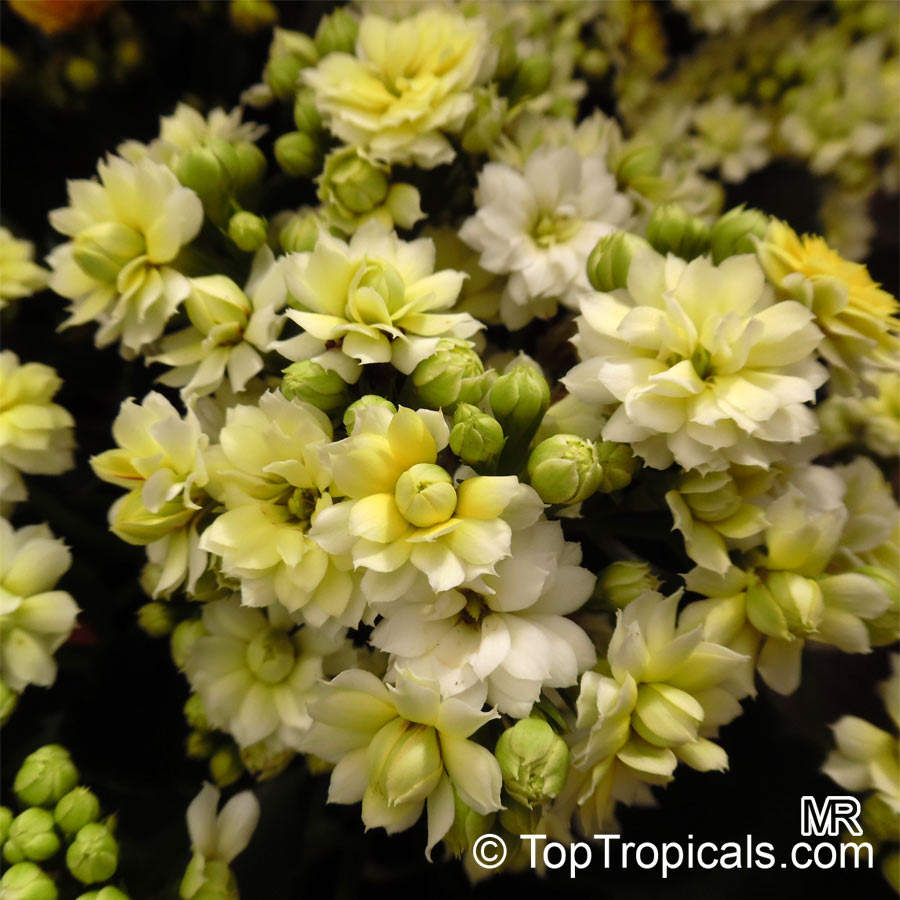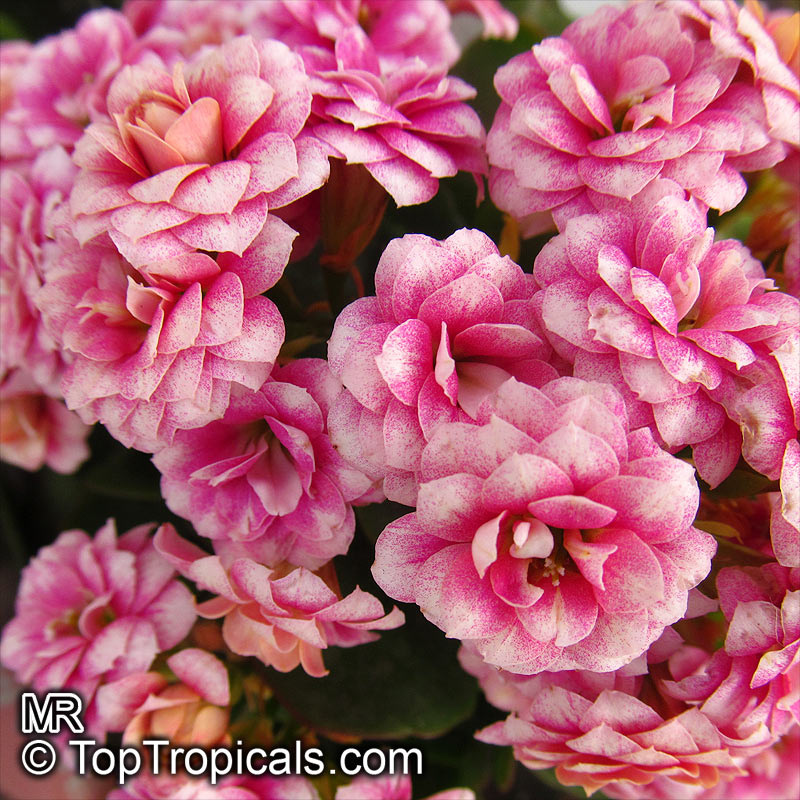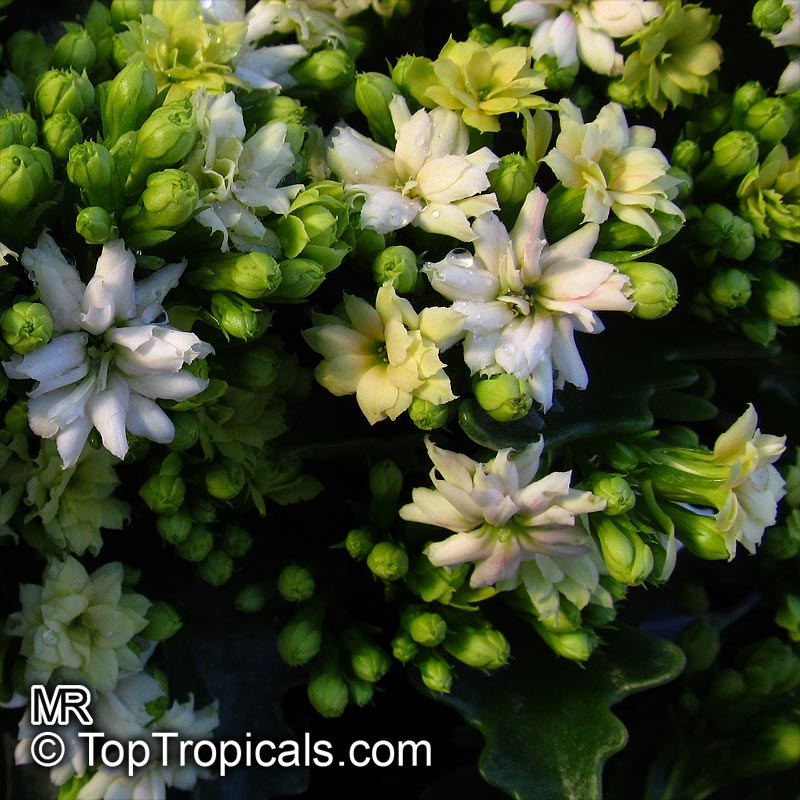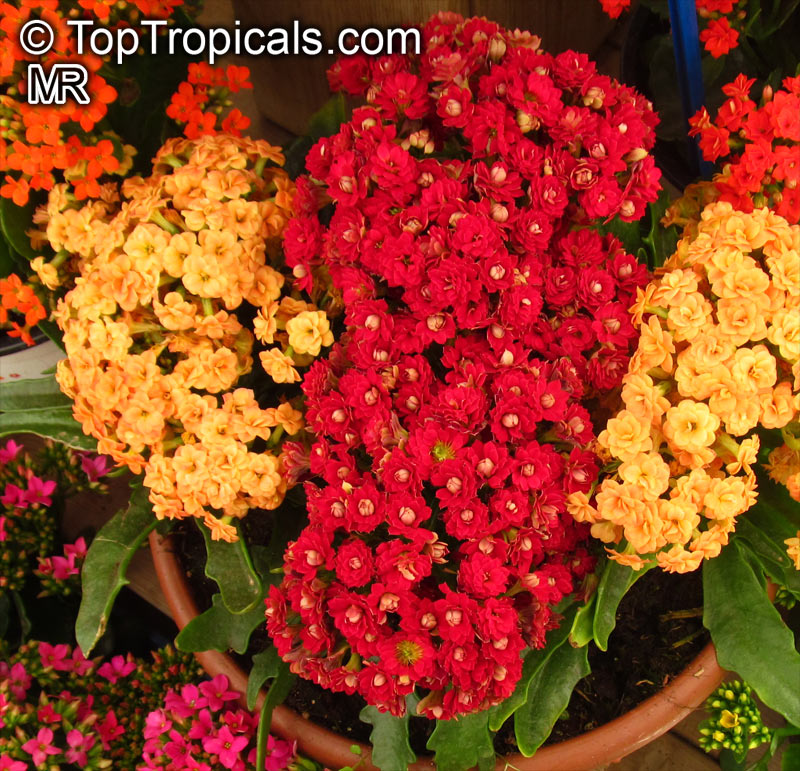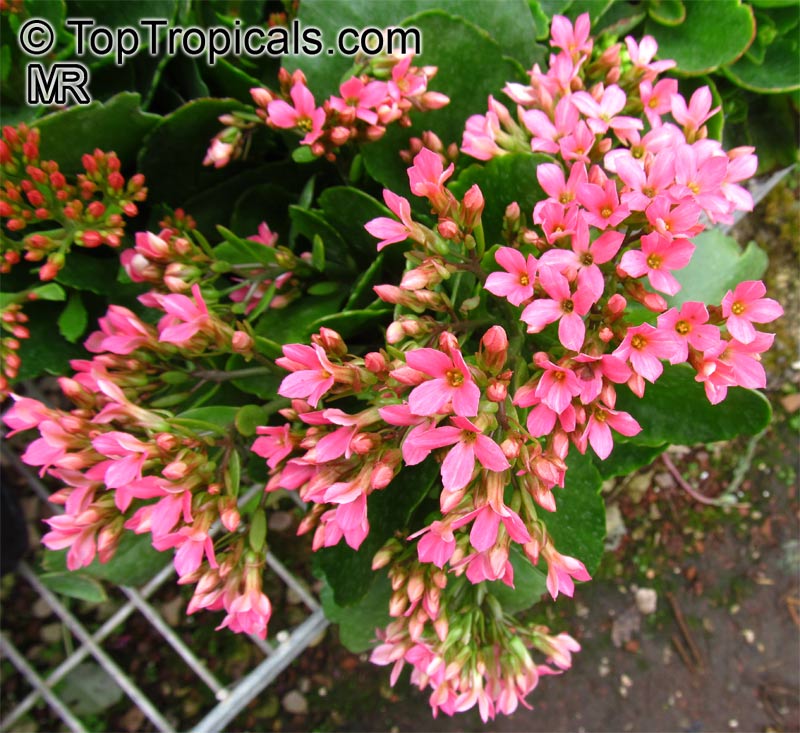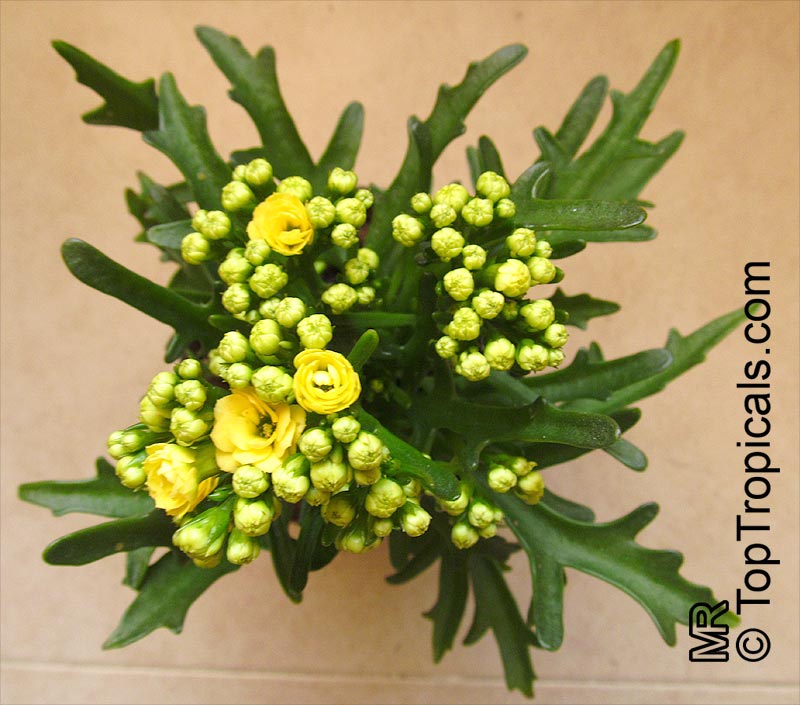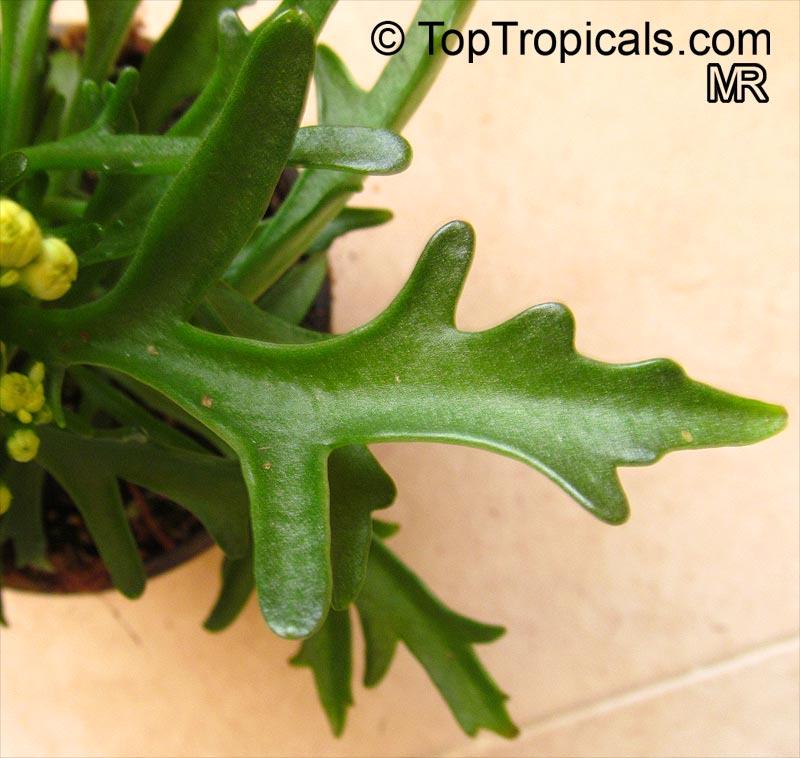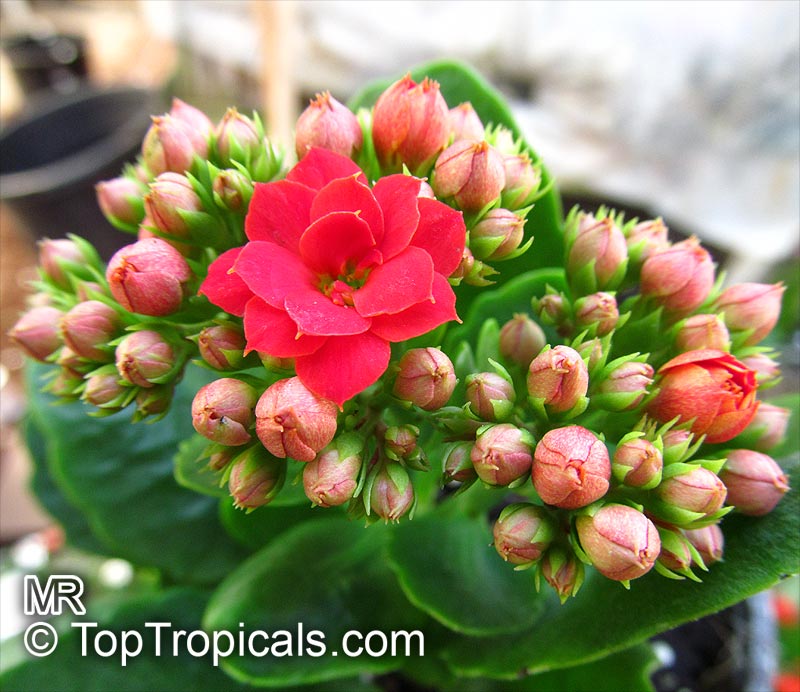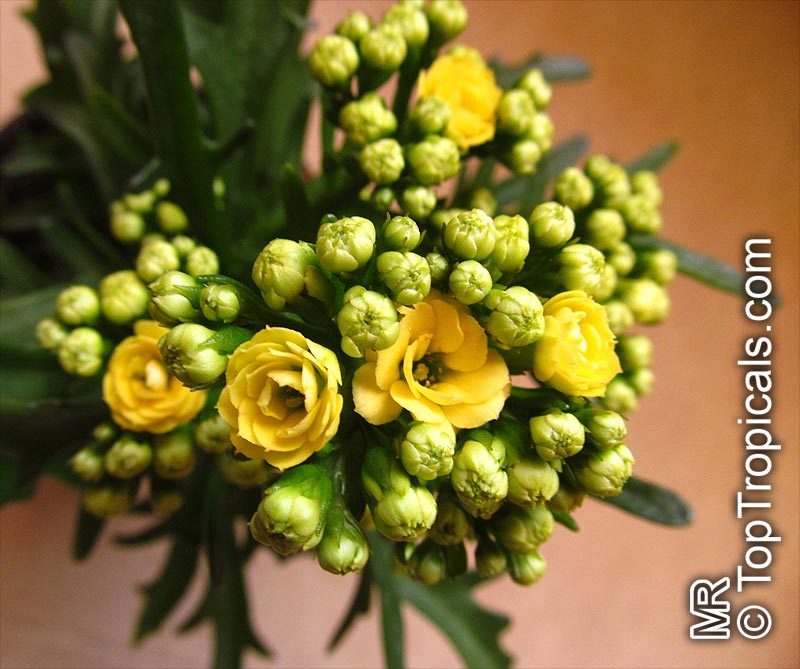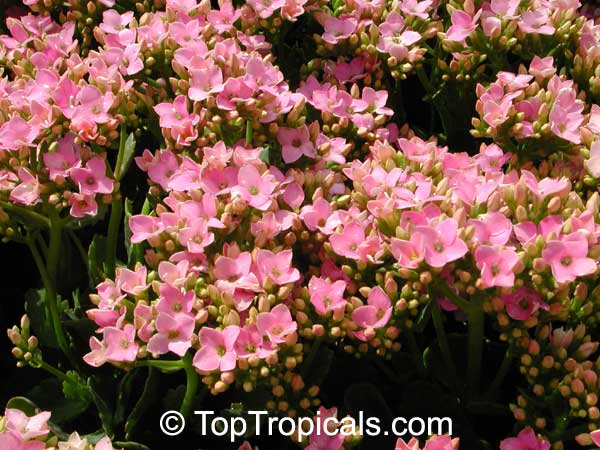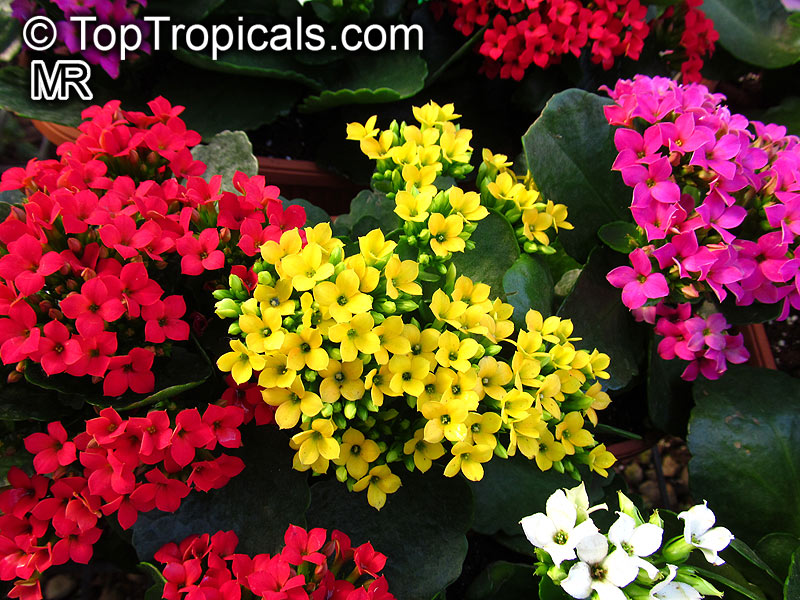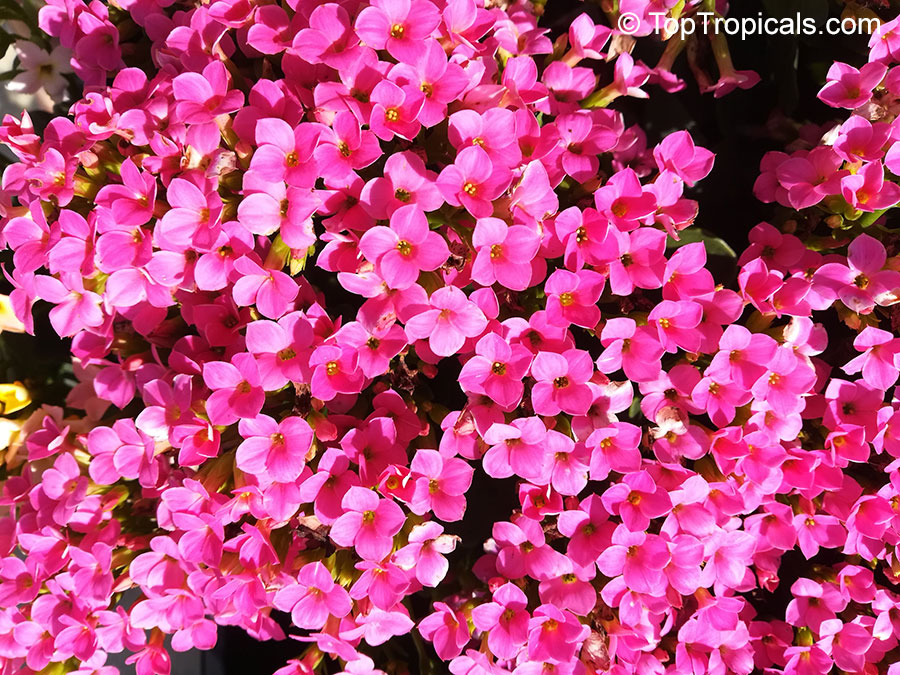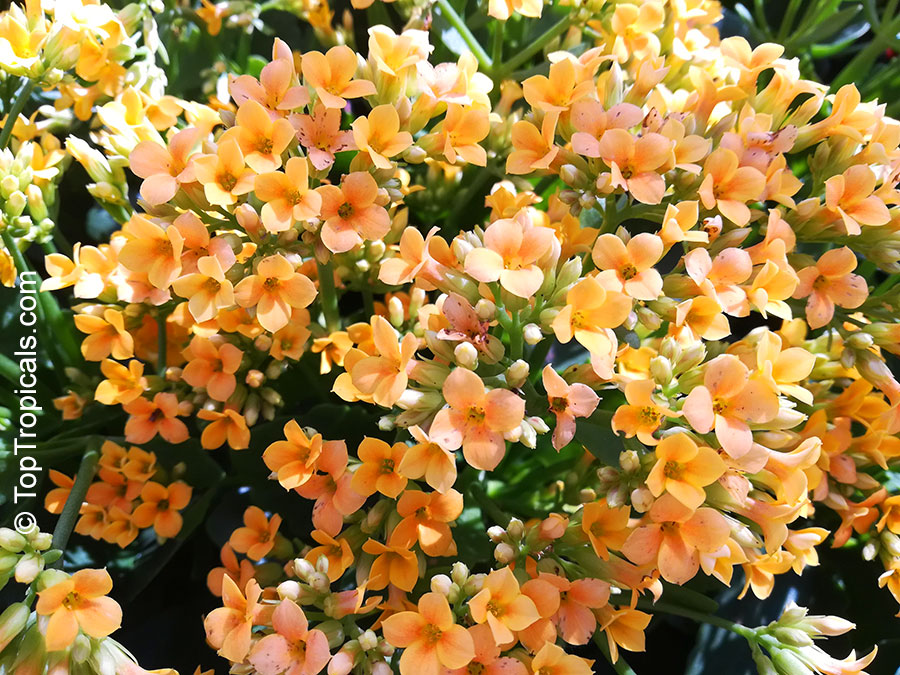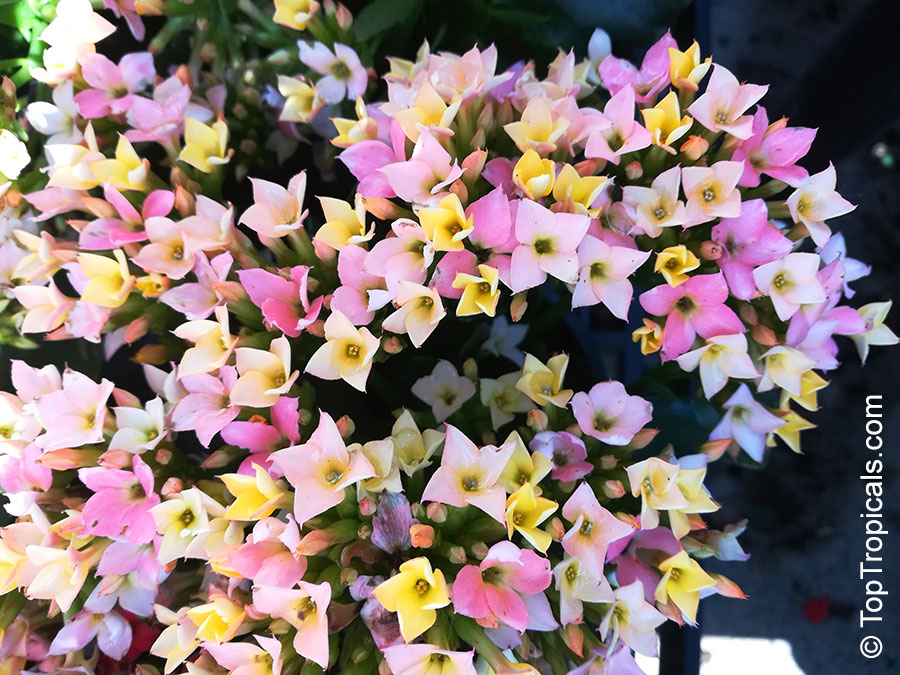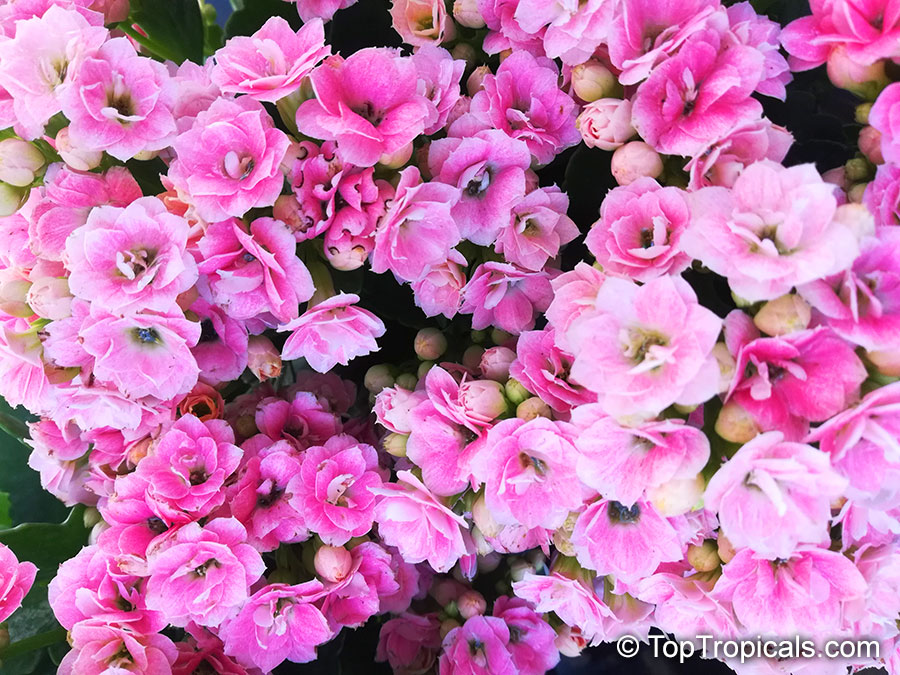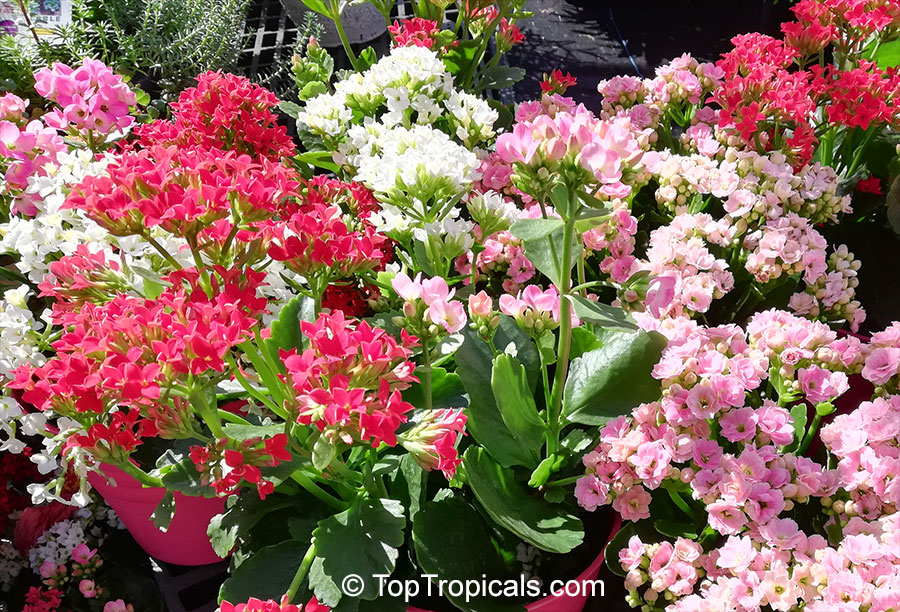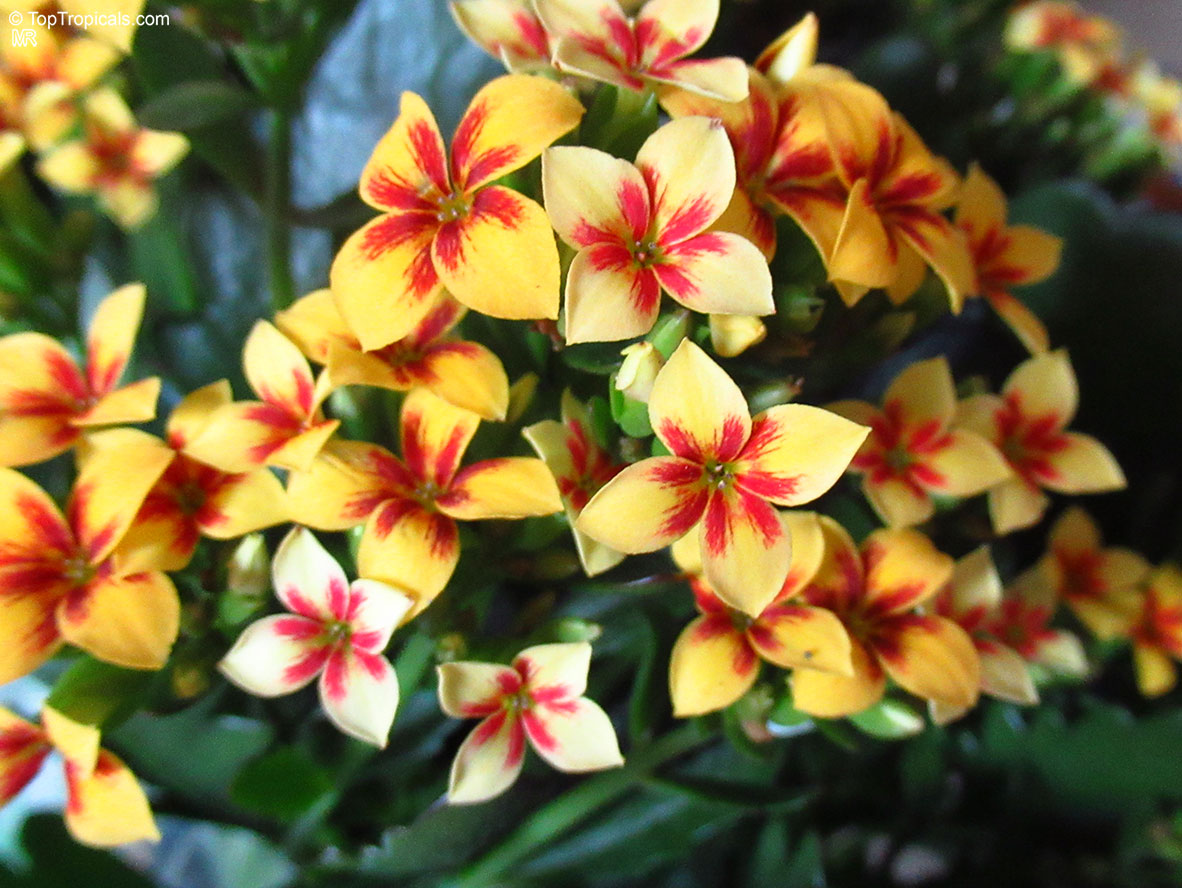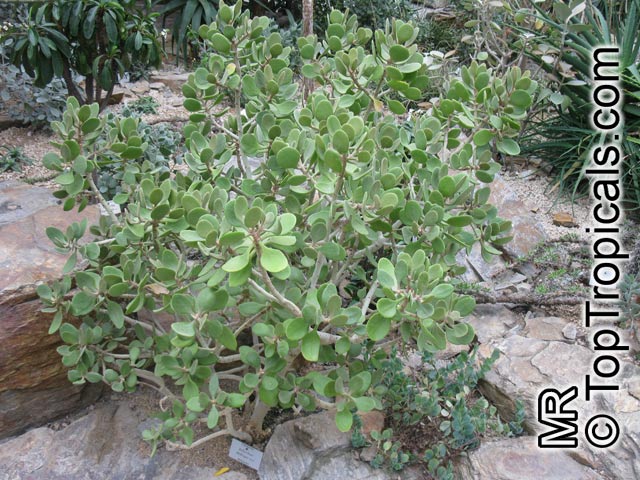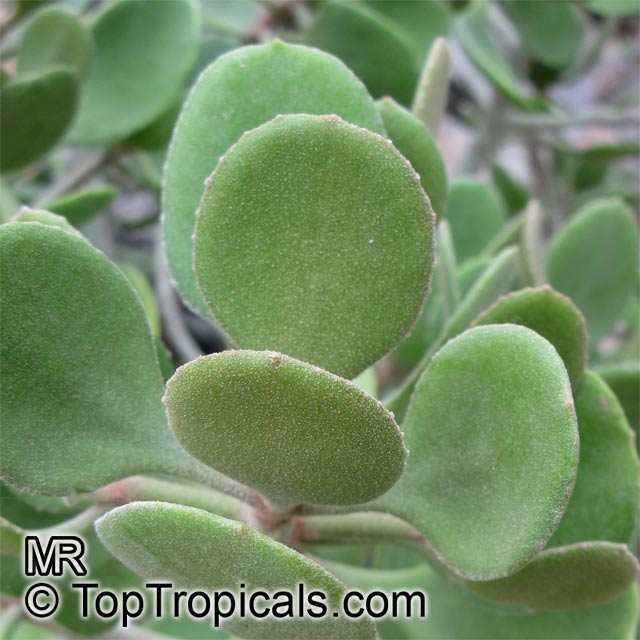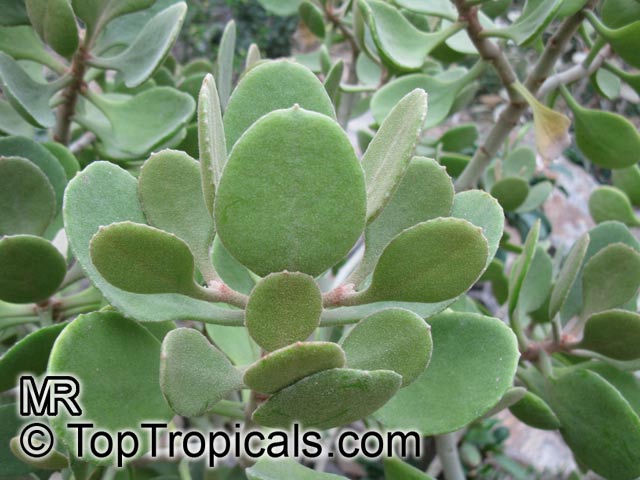Botanical family: Crassulaceae
| Number of plants found: 63 |  | Prev | Next | 
|
Go to page: | 1 | 2 | 3 | 4 | 5 | 6 | 7 |
Crassula rupestris
Kebab Bush, Concertina Bush, Bead Vine, Rosary VineFamily: Crassulaceae
Origin: South Africa





Crassula rupestris is a much-branched, succulent, perennial subshru. The stems are thin, fleshy near the growing tip, but rather woody lower down. Leaves are small, thick, opposite, ovate and lanceolate in shape, up to 1 inch (2.5 cm) long and grayish in color (during the summer months the leaf margins turn a brilliant red or yellow). Flowers are grouped in clusters, deep pink to pale pink, star-shaped and up to 0.25 inch (6 mm) across.
Crassula sarmentosa
Showy Trailing JadeFamily: Crassulaceae
Origin: South Africa







Growing and plant care for Crassula sarmentosa is quite straightforward. It thrives in full sun or half-shade and requires moderate water, although it is drought-tolerant and can take some neglect. Once established, it requires minimal care and is low-maintenance. It can be grown in the ground or in pots, and can reach 2-5 feet in height and spread 2 feet across. To best encourage flowering, water the plant regularly, with an occasional deep soaking. If grown in colder regions, it is recommended to insulate the pot and place it in a sheltered area away from winds and drafts to protect the roots from freezing.
The foliage and flowers of Crassula sarmentosa add to its ornamental appeal. Its showy, ground-cover foliage is soft to the touch, slightly toothed and a pleasant dark green in shade, neon green in the sun. The white or off-white flowers appear throughout the year and add a delightful touch. This makes the Showy Trailing Jade an excellent choice for outdoor rockeries, pot plants and green roofs, as well as creating a delightful ground cover in USDA Zone 9-11.
Crassula sp.
CrassulaFamily: Crassulaceae
Origin: South Africa and Madagascar








The succulents in this group vary greatly in shape and size. Crassulas can be grown outdoors in regions where the temperature doesn't drop below 41F to 50F, depending upon the variety; some varieties can be grown in the greenhouse or home. Water is given freely to well-rooted plants in the summer but in the winter, just enough water should be given to prevent the shoots from shriveling. These plants will benefit from some pruning to maintain neat shapes, can be grown in sun or light shade.
Species and varieties:
Crassula alba
Crassula ausensis
Crassula barklyi
Crassula 'Buddha's Temple'
Crassula capensis
Crassula capitella
Crassula corallina
Crassula deceptor
Crassula dejecta
Crassula elegans
Crassula fusca
Crassula grisea
Crassula lanuginosa
Crassula macowaniana
Crassula marnieriana
Crassula mesembryanthemoides
Crassula mesembryanthemopsis
Crassula "Morgan's Beauty"
Crassula multicava
Crassula obliqua "Variegata"
Crassula orbicularis
Crassula pellucida marginalis "Variegata"
Crassula perfoliata var. falcata
Crassula perforata
Crassula pyramidalis
Crassula radicans
Crassula rogersii
Crassula schmidtii
Crassula sericea
Crassula socialis
Crassula x justi-corderoyi
Crassula streyi
Pondoland CrassulaFamily: Crassulaceae
Origin: South Africa





This forest jewel with deep green and red leaves grows in the deep shade of the coastal forest growing the sandstone cliffs. The broadly elliptic succulent leaves are dark glossy green on the top, while the under surface is maroon to carmine giving it a striking appearance. Some forms have attractive white spots along the veins on the upper surface of the leaf.
A very similar plant is C. multicava, a popular garden plant much used as a ground cover.
Echeveria sp.
EcheveriaFamily: Crassulaceae
Origin: northwestern South America







Echeveria is a large genus of succulents in the Crassulaceae family. The genus Echeveria is named after the 18th century Spanich botanist Atanasio Echeverria Codoy. Several of these species are outstanding garden plants.
x Graptoveria 'Fred Ives' - Graptopetalum paraguayense X Echeveria gibbiflora
Pachyveria - hybrids between the Pachyphytum and Echeveria
Kalanchoe beharensis
Velvet LeafFamily: Crassulaceae
Origin: South Madagascar









Kalanchoe beharensis need full sun to part shade with intermediate to warm temperatures. Water sparingly at all times. The use of fertilizer is discouraged. They thrive in nutrient poor soils (equal amounts of loam and sand with gravel added for drainage). The stems are usually unbranched and may reach a height of 10 feet or more. Propagation: Kalanchoe beharensis is propagated by the removal of plants around the base of the main plant and by leaf cuttings. K.B.'Fang' is named for the stippled, fang-like texture on the underside of its leaves. A superb cultivar of beharensis. Habit of growth is similar to beharensis but the leaves are smaller. The leaves have brown margins in ideal light.
Kalanchoe blossfeldiana
Flaming Katy, Christmas Kalanchoe, Florist KalanchoeFamily: Crassulaceae
USDA Zone: 10-12?






Kalanchoe blossfeldiana is a small shrub typically grown as an annual in cooler climates. It is a symmetrical plant with 2-5 feet tall and dark green leaves, and bears brightly colored flowers in the late autumn to early winter. The four petal flowers come in a a wide range of shades, from dark reds and pinks to oranges, golds and whites.
The plant enjoys full sun, but does tolerate some shade. It requires moderate amounts of water throughout the warmer months, but care must be taken not to overwater it, as too much can weaken the plant and make it susceptible to pests and diseases.
In cultivation, Kalanchoe blossfeldiana is best suited to USDA zones 9-11 and can be grown in cooler climates as an annual in pots. When planting, ensure the area is sheltered from strong winds and provides plenty of sun, and select a fast draining soil mixture, such as one with a large proportion of perlite and/or sand. For best results, regularly fertilize and water, and bring the potted plant indoors during the colder months.
This small shrub is tolerant of flooding and frost, however, it is not cold hardy and extreme temperatures can cause significant damage to the branches and foliage. In order to protect the plant, it is best to either bring it inside, or to place in a sheltered and sunny spot.
Kalanchoe blossfeldiana hybrids
Kalanchoe, Christmas KalanchoeFamily: Crassulaceae
Origin: Madagascar
USDA Zone: 9-11?










This small shrub reaches heights of 2-5 feet and thrives best in full sun and moderate water. Kalanchoe attractive foliage makes it popular for container growing and as a houseplnat. It prefers somewhat dry and well-drained soil of moderate fertility. Foliage is evergreen, fleshy and decorated with soft scallops. Flowers are usually visible in spring and, depending of hybrid type, come in a variety of flowers, including yellow, white, pink, orange and red.
For best results, a bright spot near a window with some protection from midday and afternoon sun will provide the best balance between light and warmth. Mist the leaves frequently to encourage adequate moisturizing during the warmer months. Having more blooms requires more sun, so if the flowers start to fade, provide more light.
Kalanchoe is also a great choice for growing in a container and adding some beautiful color to your porch, balcony or terrace. It is also a good choice for a shady spot, in those areas plants may not live through exceptionally cold or rainy winters, or they may die back and become dormant during especially harsh winters.
For colder regions, Kalanchoe plants can be potted and grown indoors, where temperatures stay above frost. Place your Kalanchoe plants in a bright and warm spot, away from cold drafts. Keep the soil evenly moist, but not wet, allowing the top inch of soil to dry out before watering. Use a water-soluble fertilizer every two weeks during summer, but don't fertilize during the cold winter months. Kalanchoe plants are very tolerant of the coastal environment and can handle the salt air, so feel free to keep your houseplants outside provided they are in a container.
Kalanchoe dinklagei
KalanchoeFamily: Crassulaceae
Origin: Madagascar







Native to Madagascar and commonly known as the "Madagascar Tree," Kalanchoe dinklagei is a unique succulent plant with unique foliage, making it an eye-catching specimen. Usually grown as a large shrub 5-10 ft tall, it can reach heights of up to 20 ft and form a small tree.
Kalanchoe are sun-loving plants, and they thrive when given full sun exposure. When young, they can be grown in direct or diffused light, although direct sun in the late morning or early afternoon is recommended. Water should be moderate, minimum once a week in the growing season, but soil should be allowed to dry between waterings. Overwatering will cause yellowing and rotting of leaves and stems.
Kalanchoe dinklagei produces fragrant pink and white, off-white flowers in early spring. These flowers can cascade delicately down the sides of the container.
Kalanchoe dinklagei can be grown in USDA Zones 9-11 and is suitable for growing in containers. Keep in mind that in cooler climates, extreme temperatures should be avoided, so overwinter indoors or in a warm location. Plant Kalanchoe in well-draining, nutrient-rich potting soil, and in a pot that has drainage holes. Place the pot in an area where they can receive full sun, and remember to water moderately, allowing soil to dry between waterings. If you are growing Kalanchoe in a colder climate, you can move the pot indoors and maintain in a warm, humid environment. For best results, refrain from fertilizing too often as this can cause leaf urling.
 | Prev | Next |  |
Use link to repeat this search:
https://toptropicals.com/cgi-bin/garden_catalog/cat.cgi?search_op=and&keyword_op=and&language=e&family=Crassulaceae
&number=10&no_change_lang=1&user=tt&sale=1&first=0
